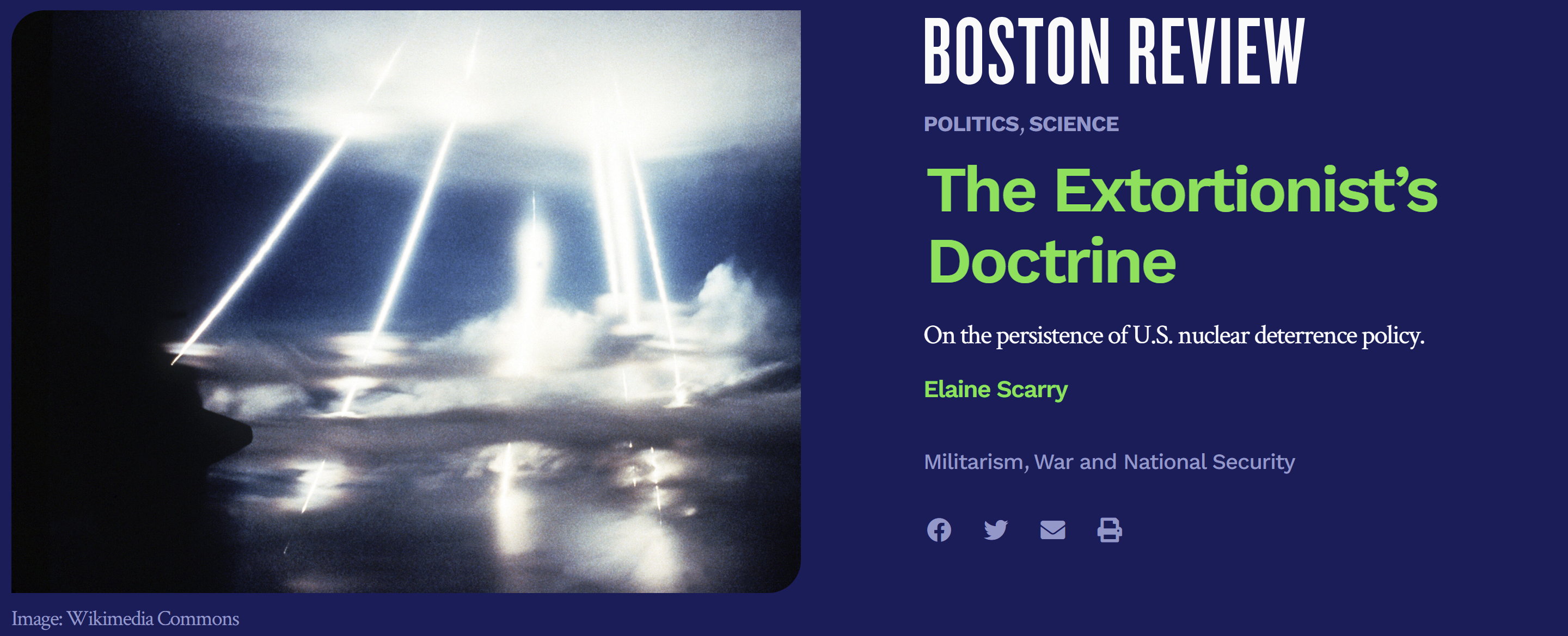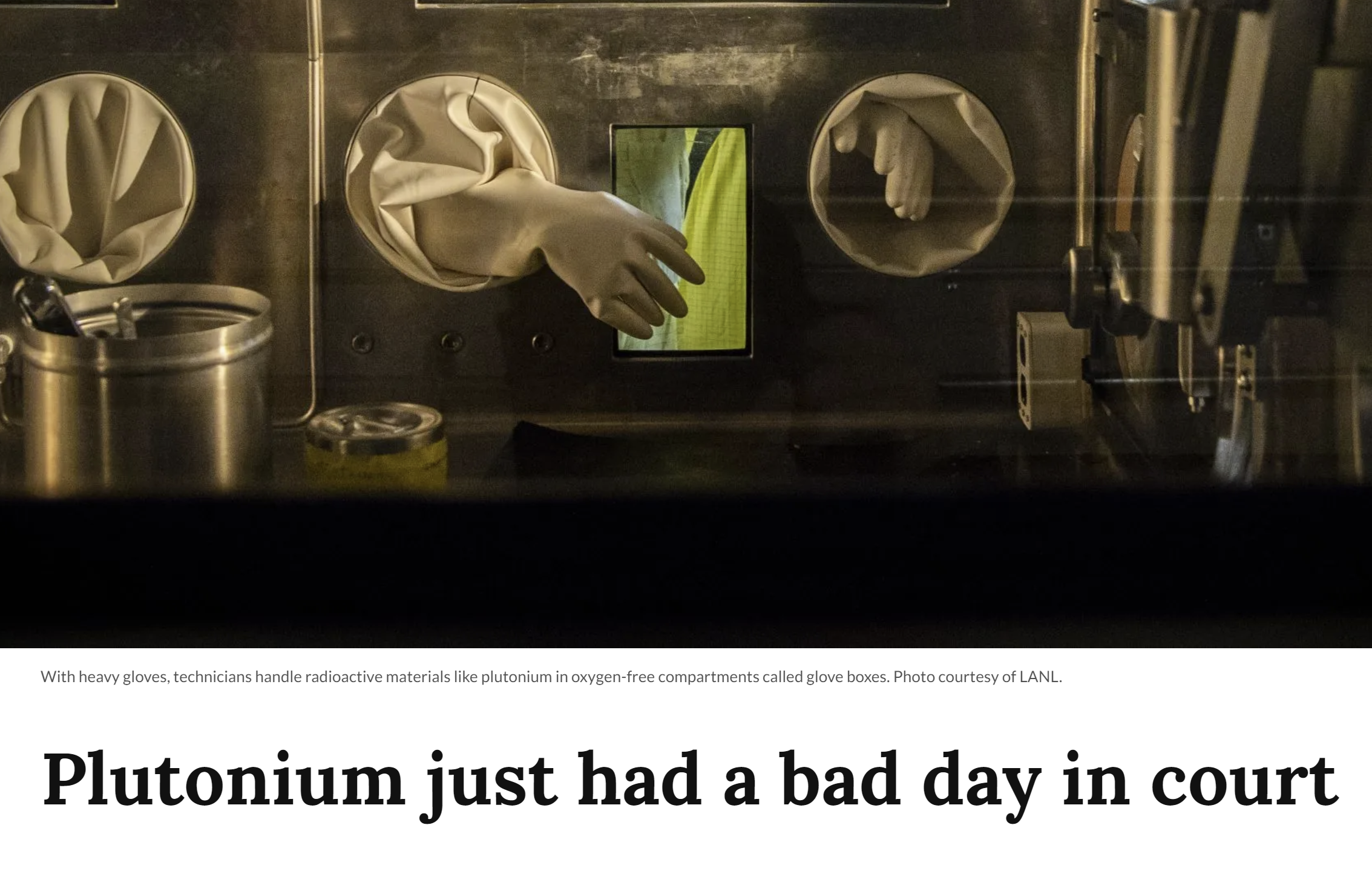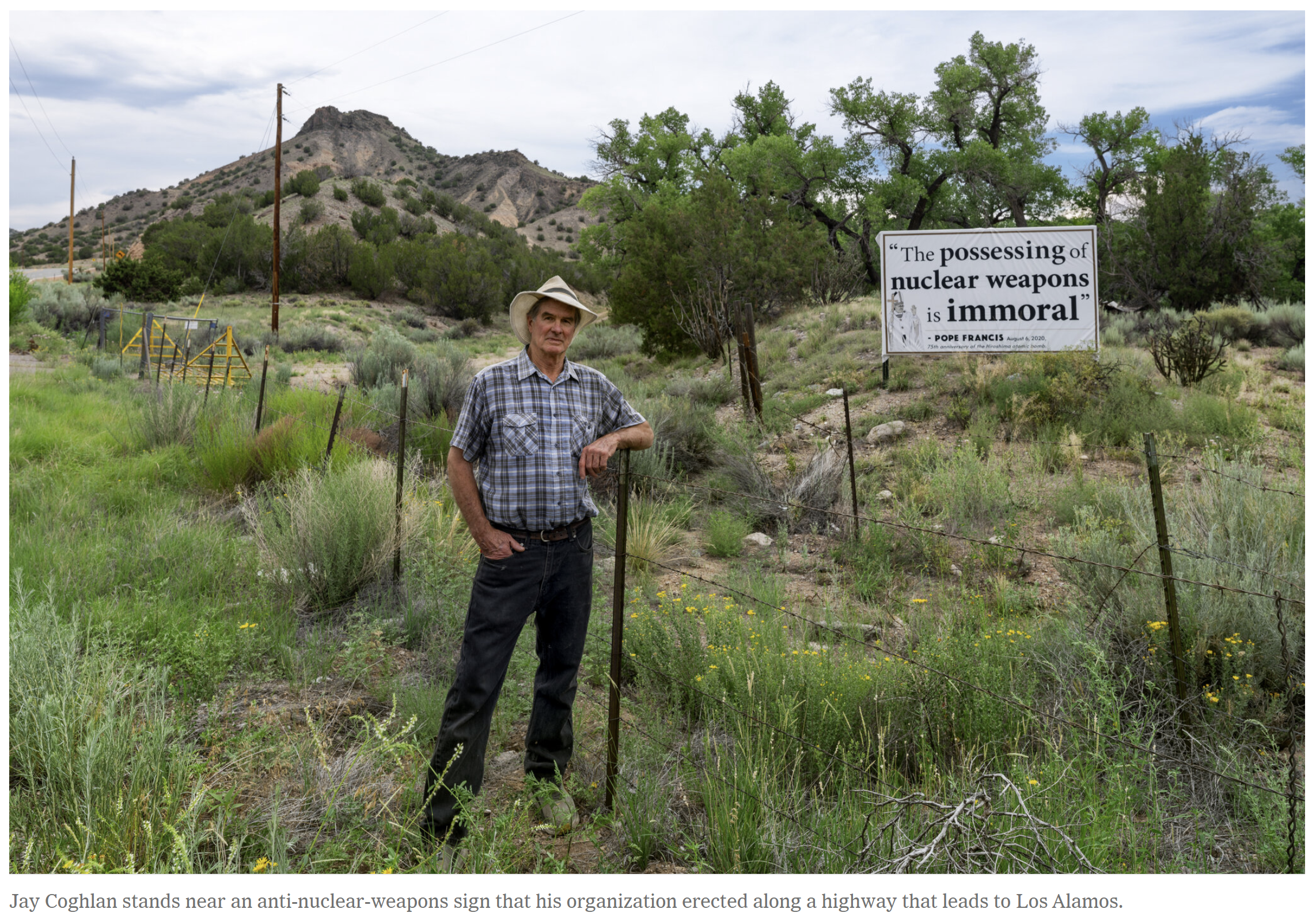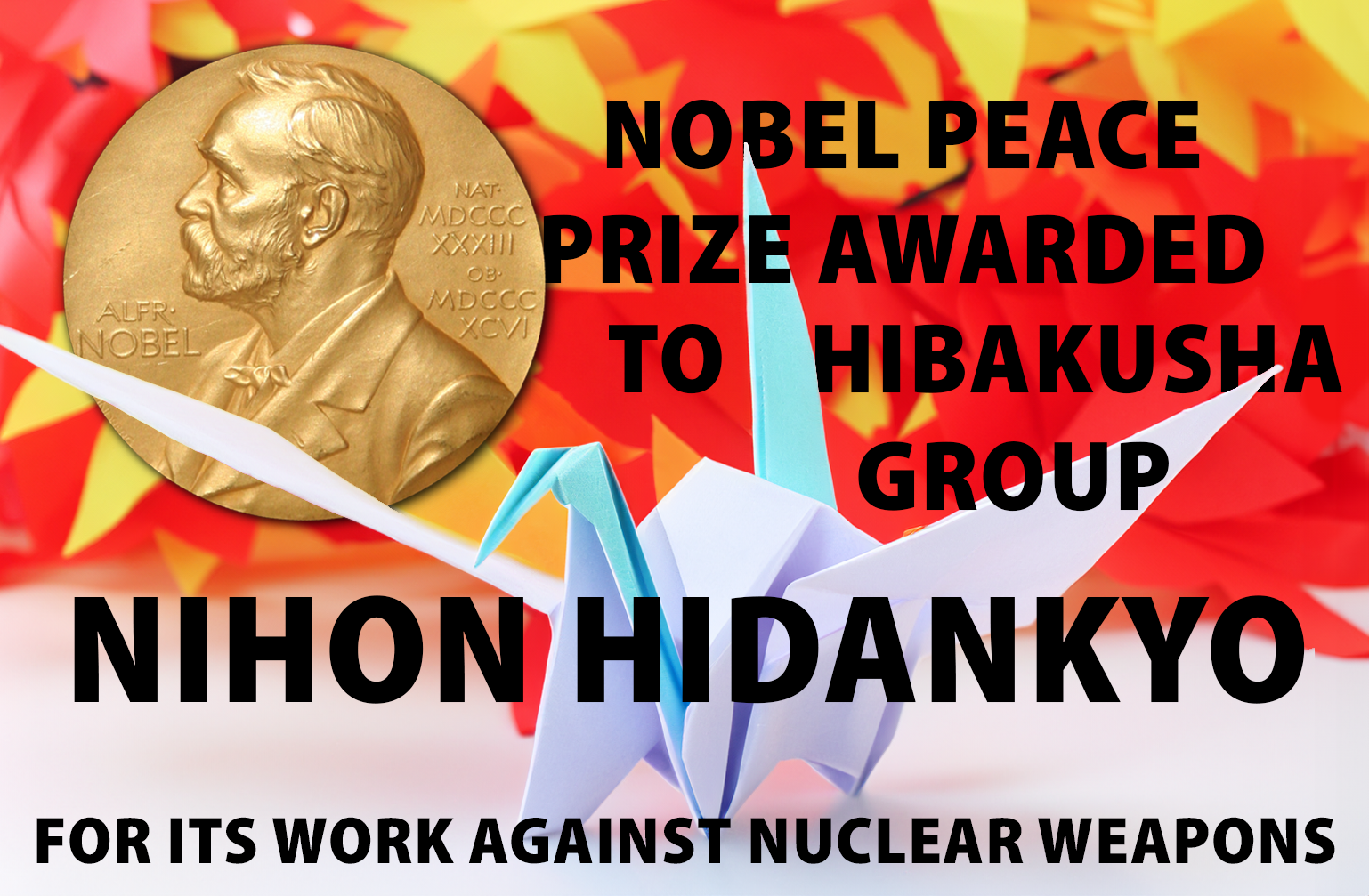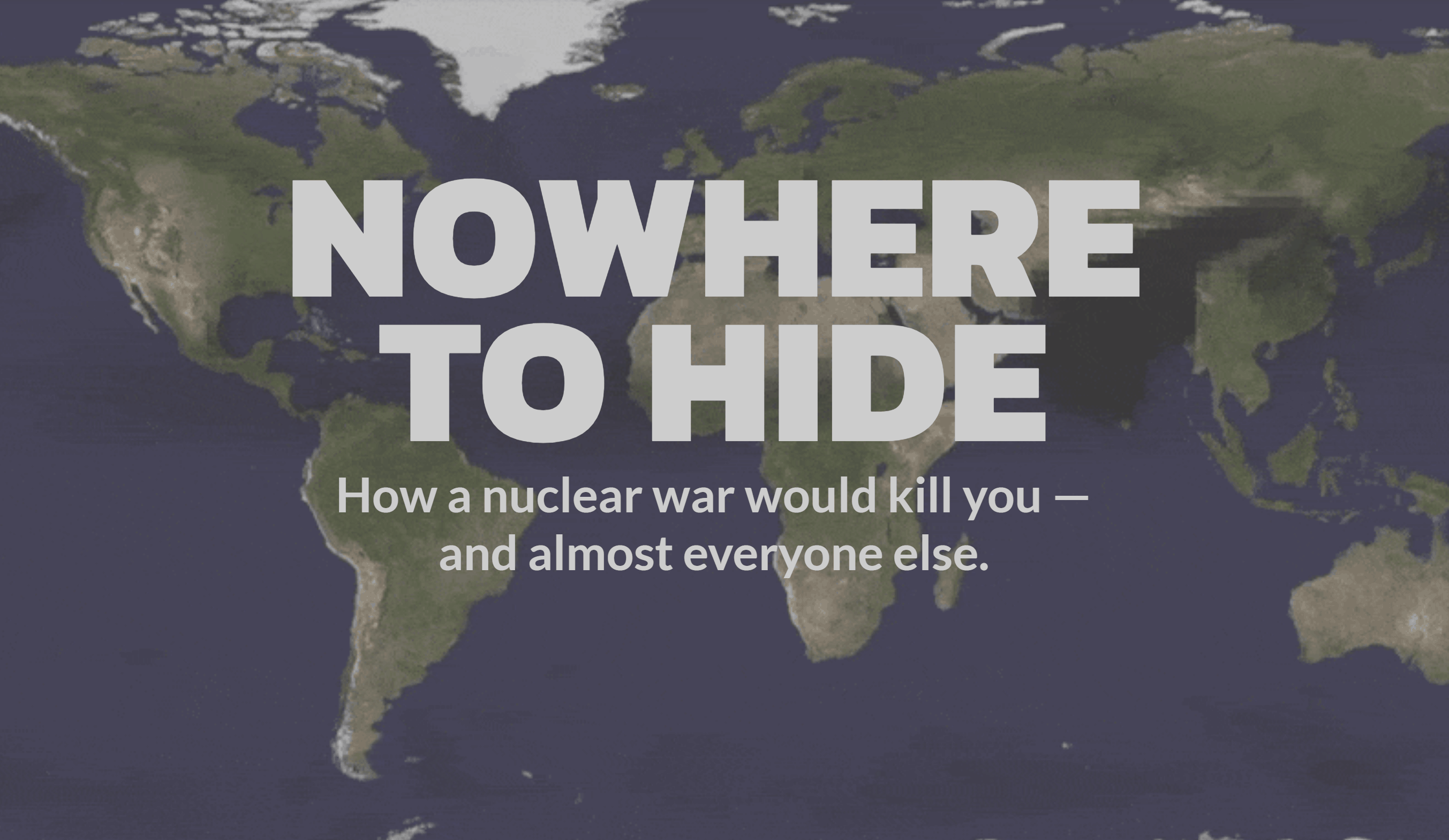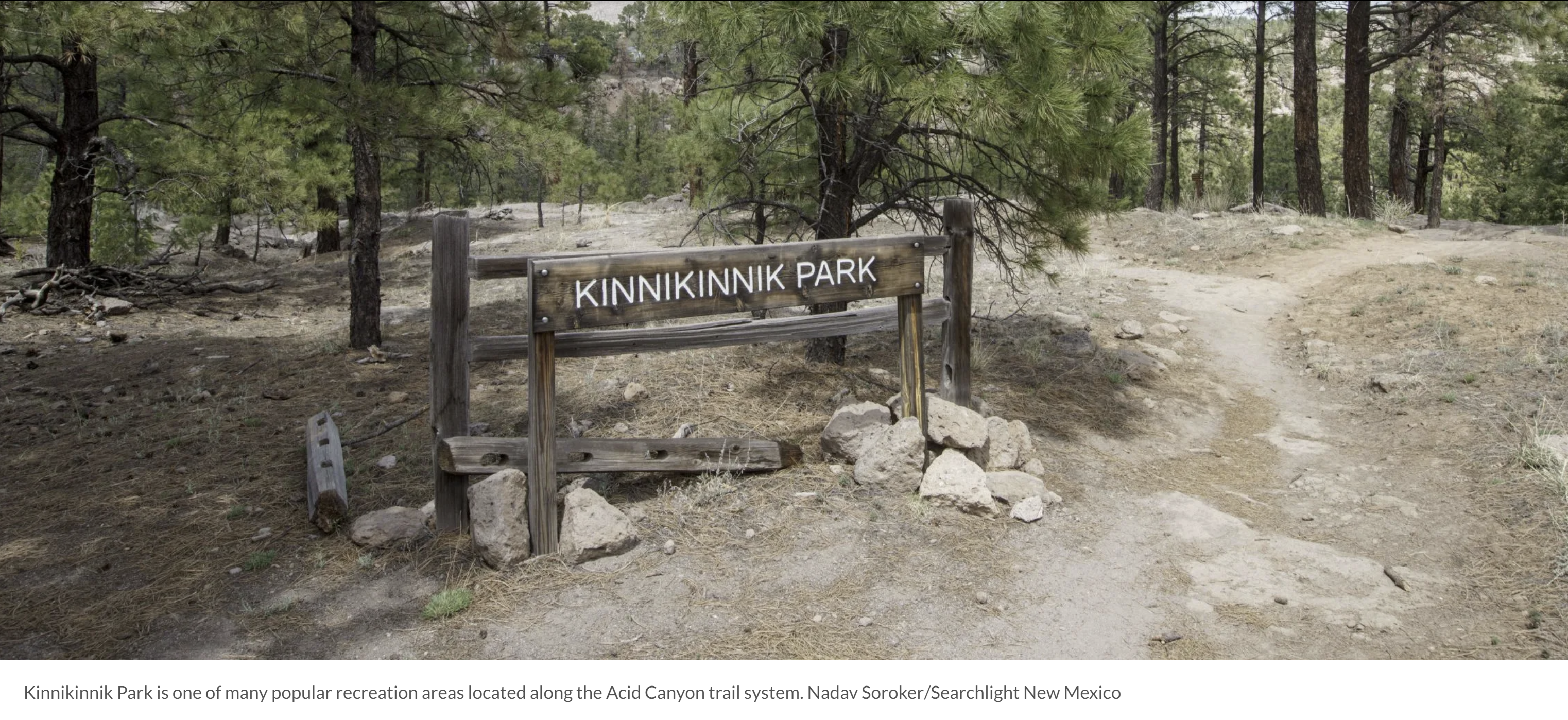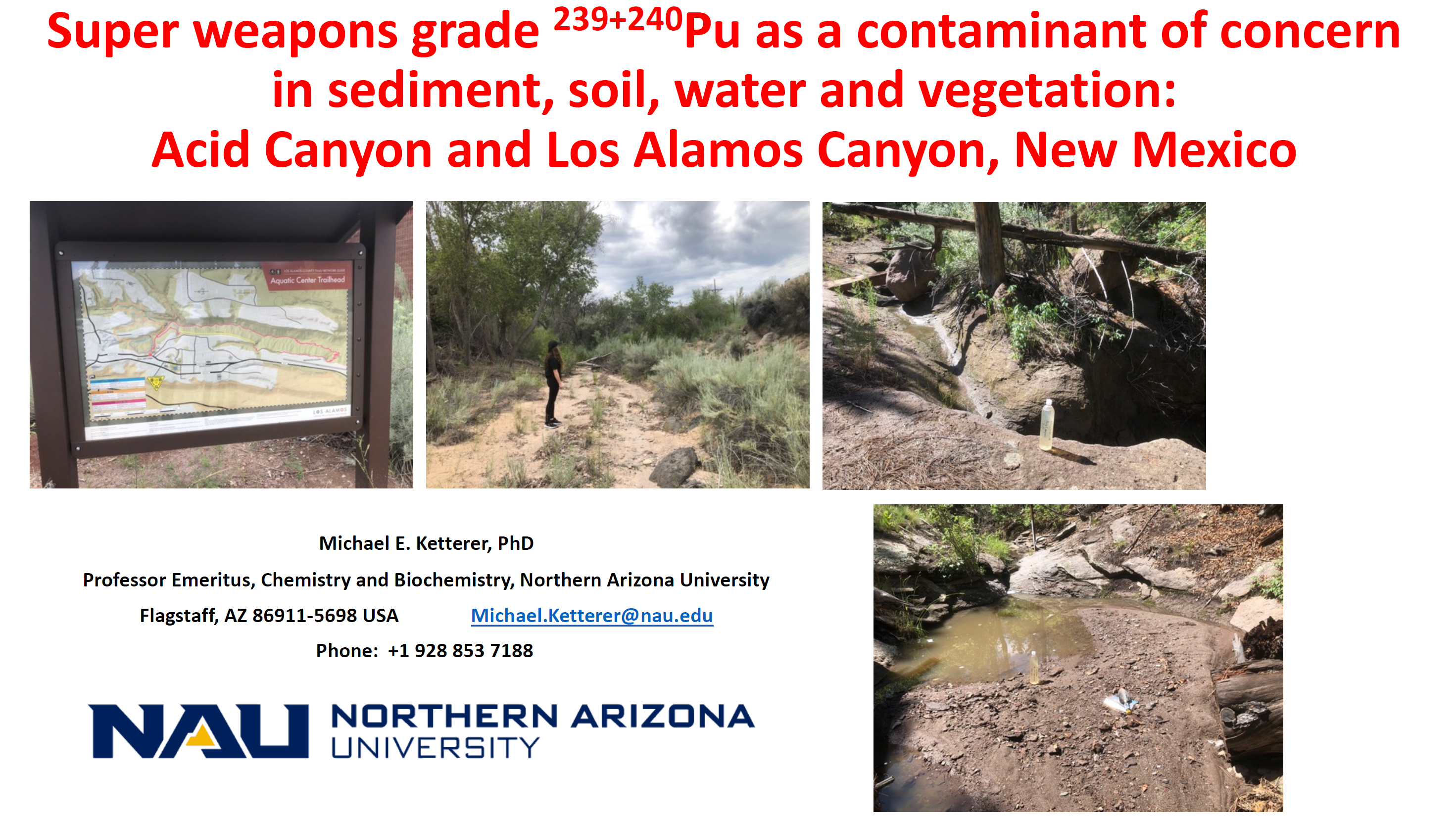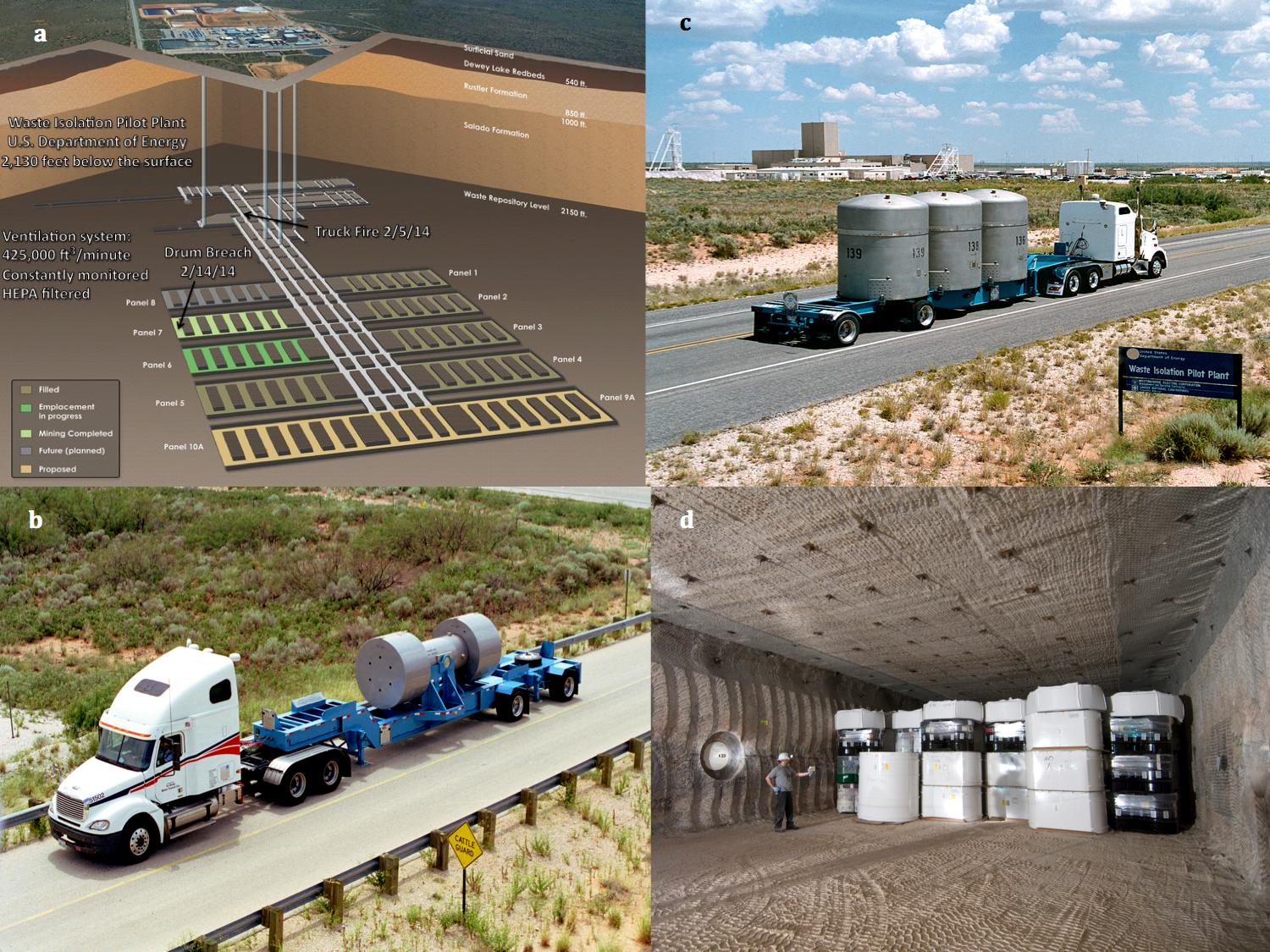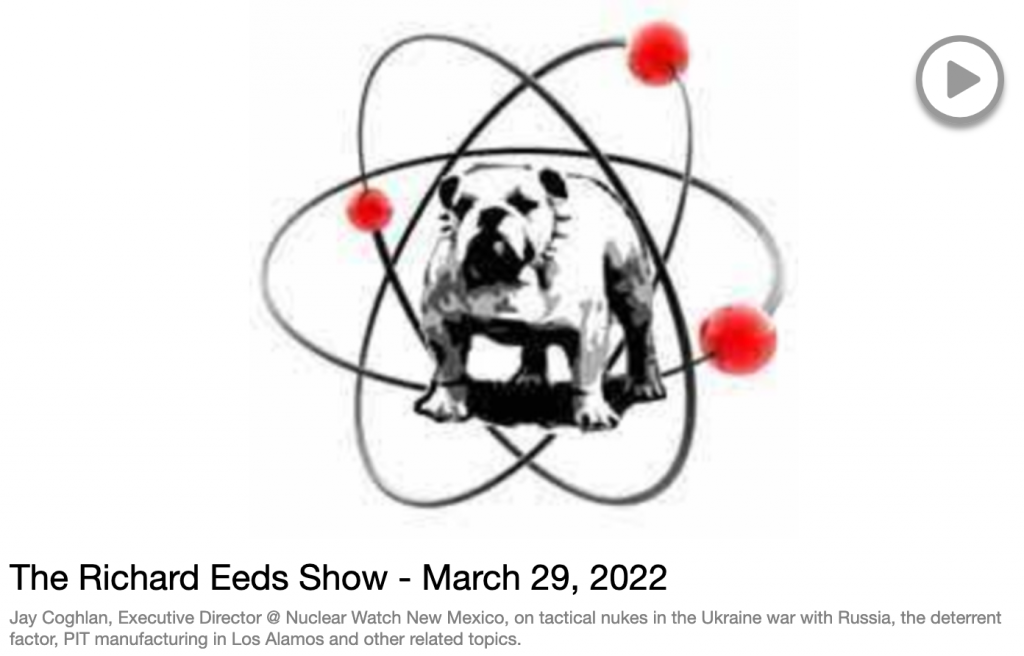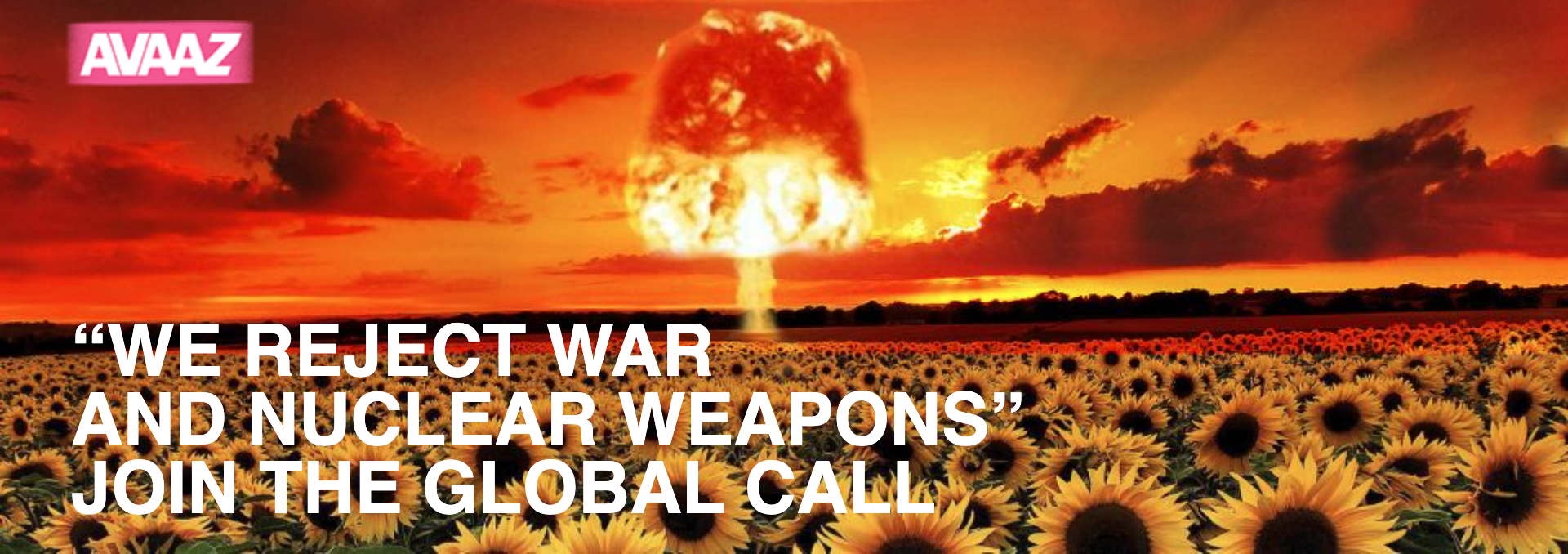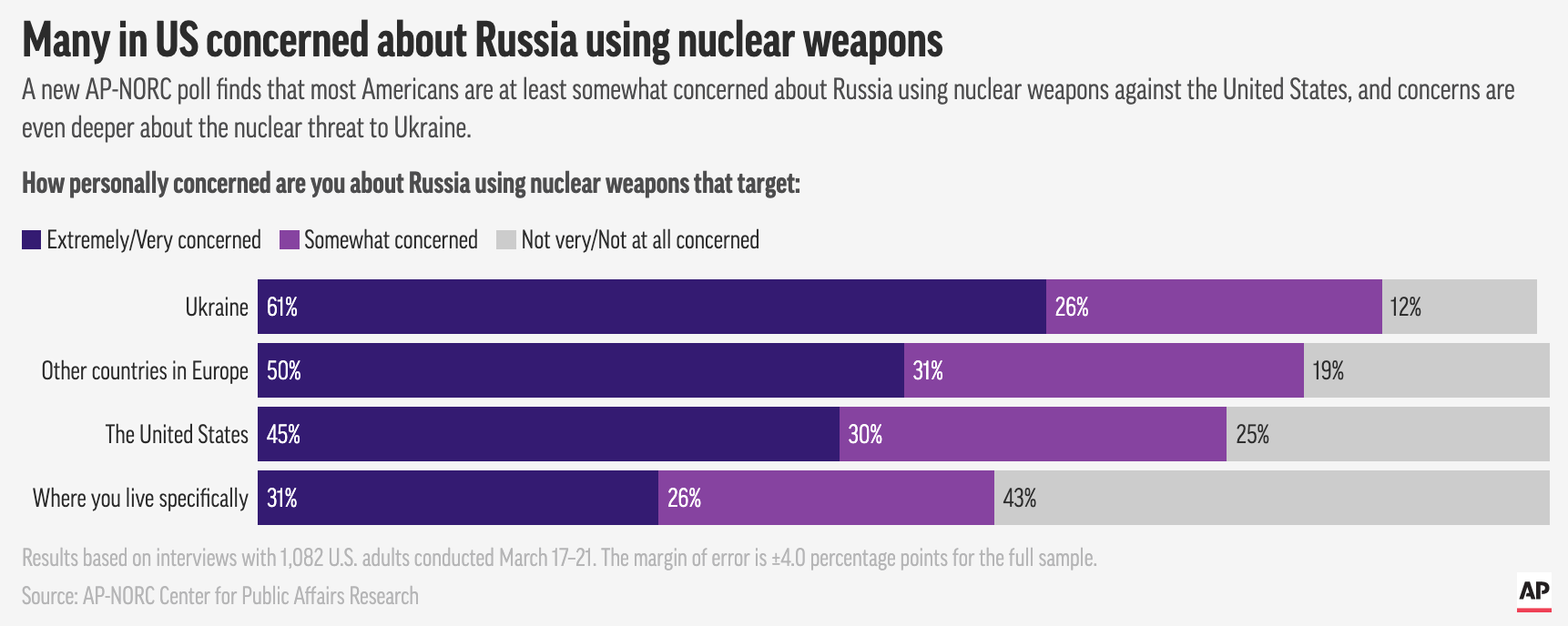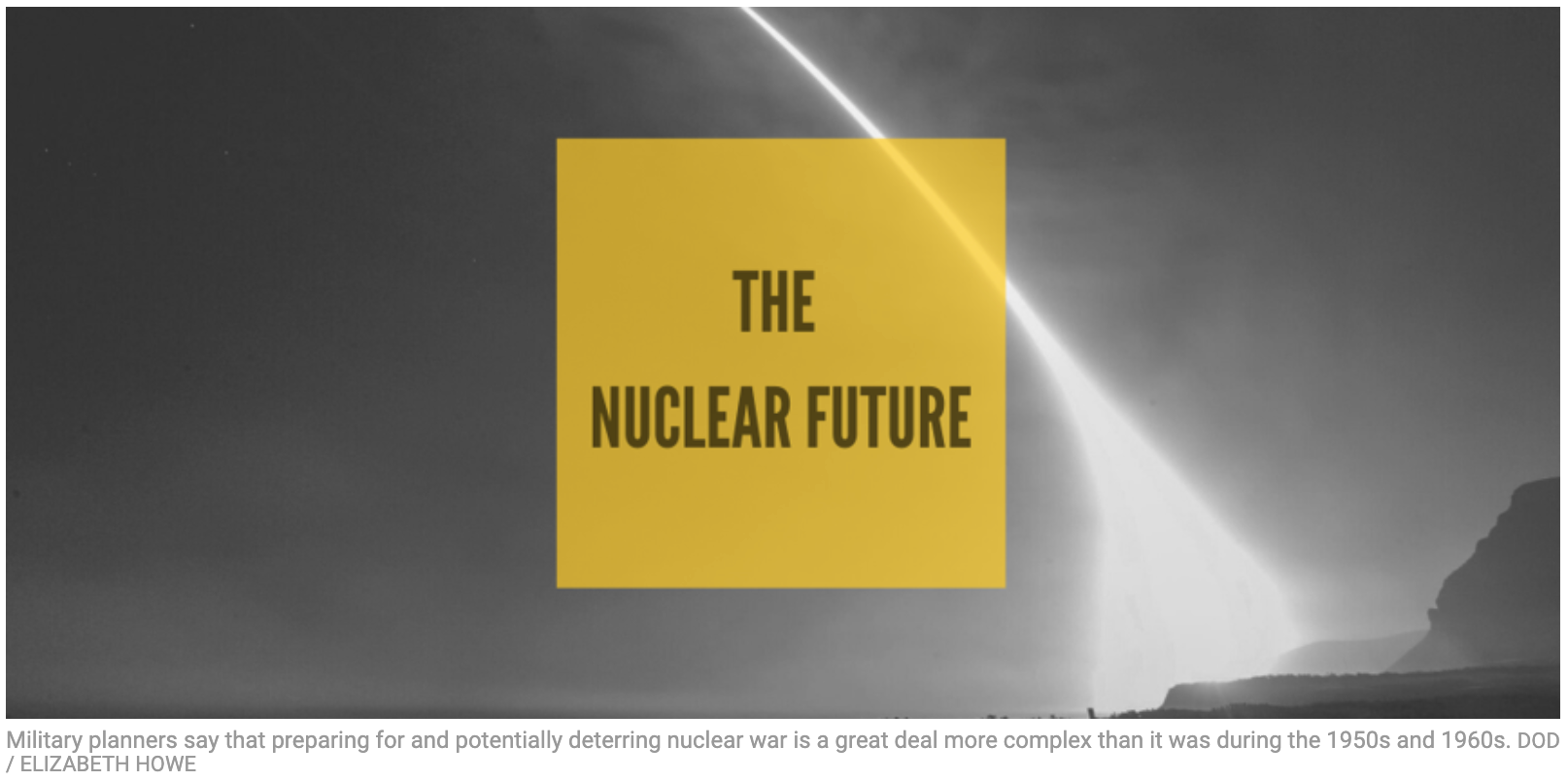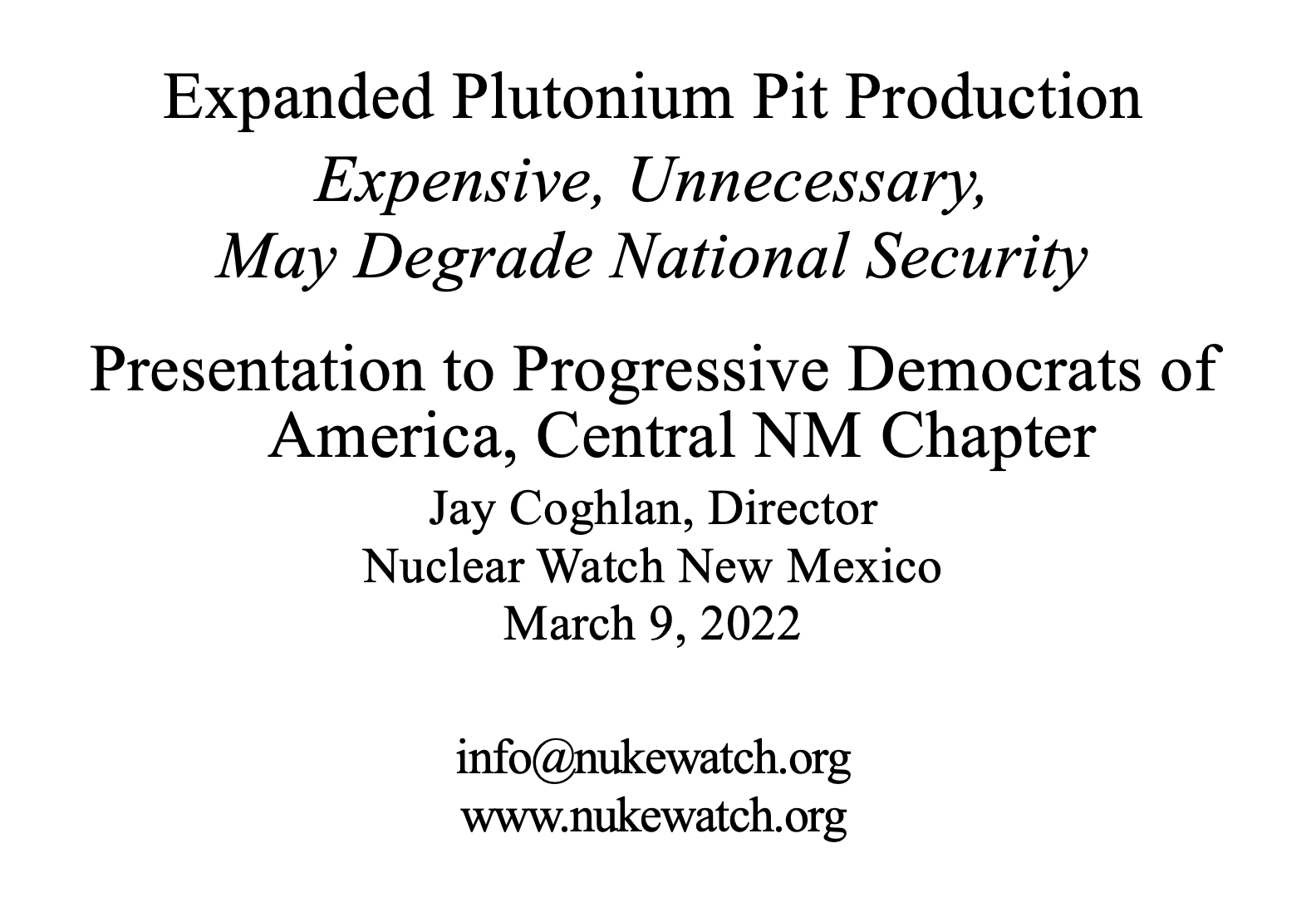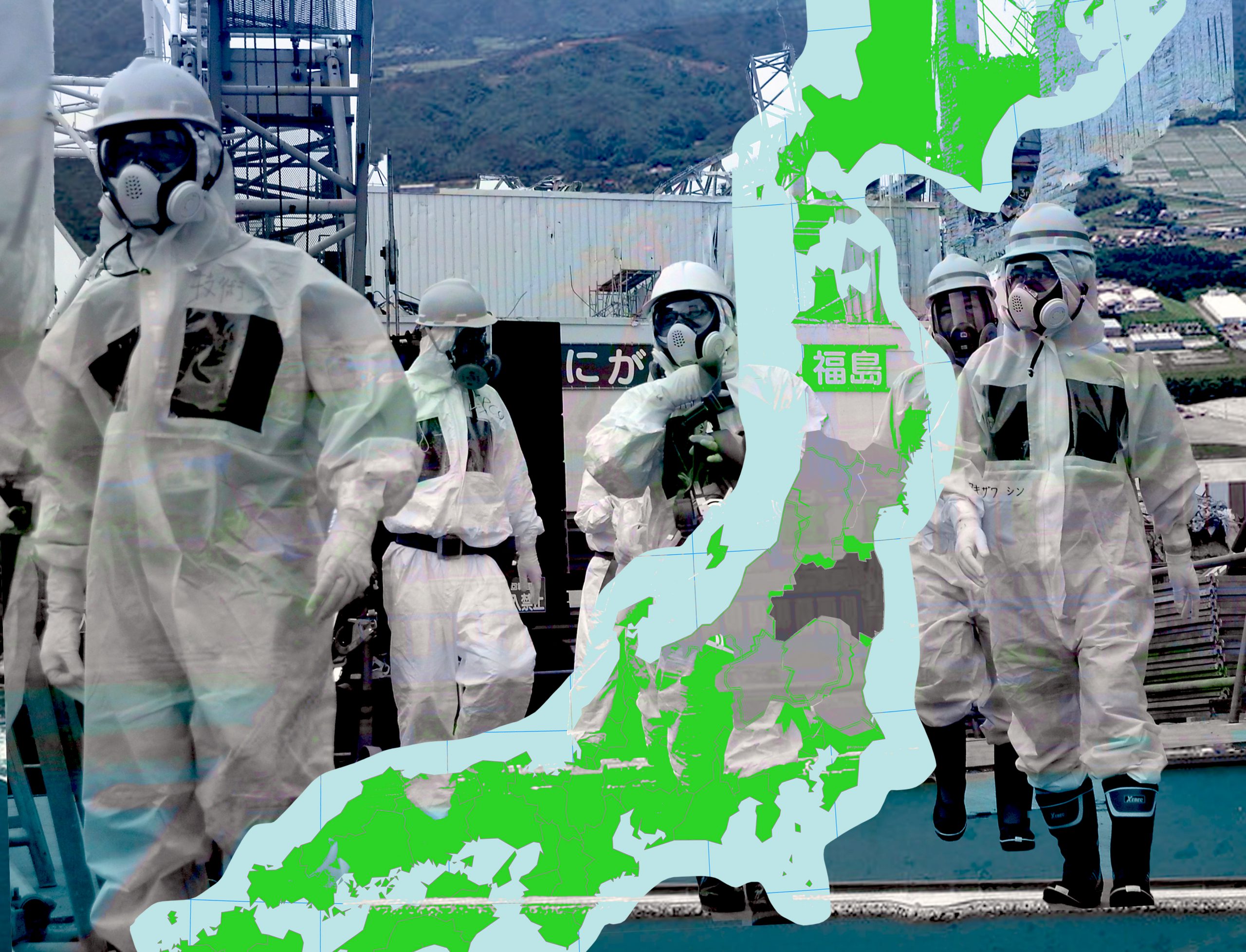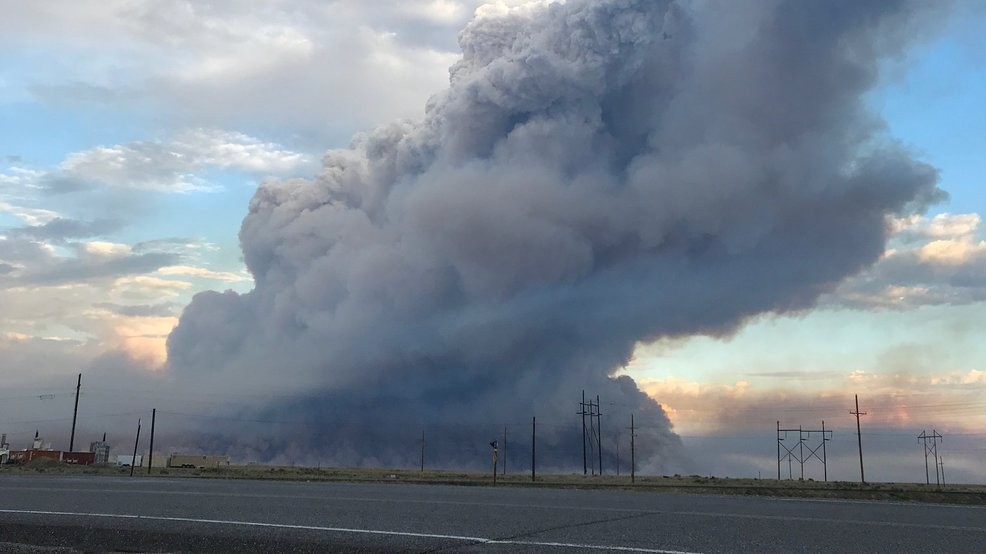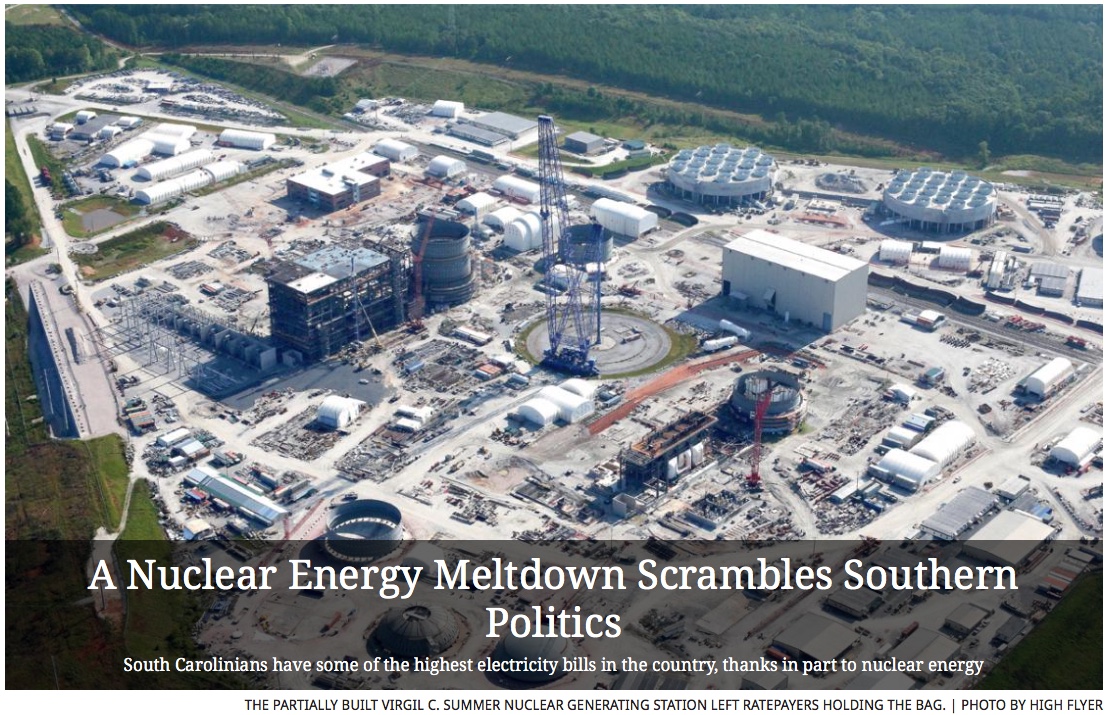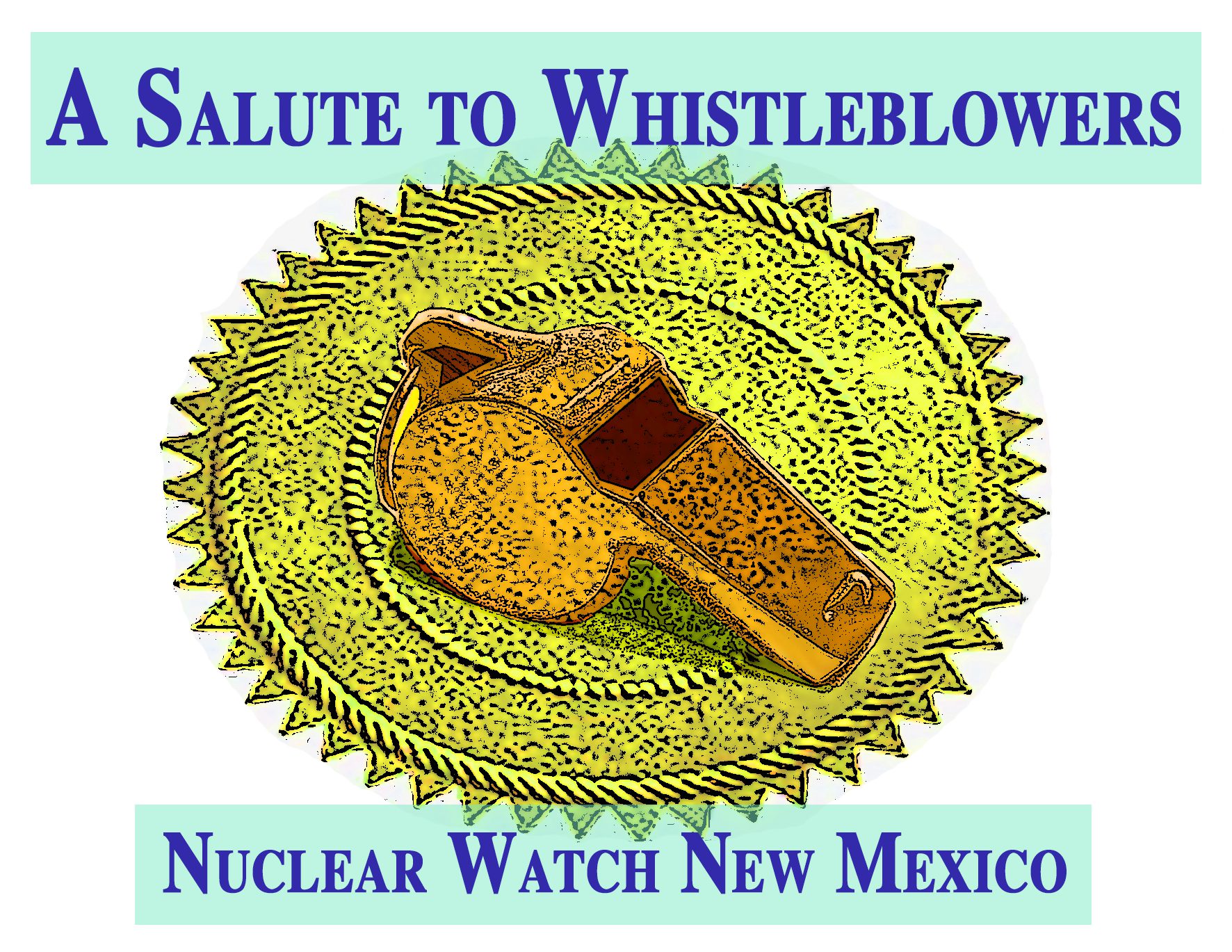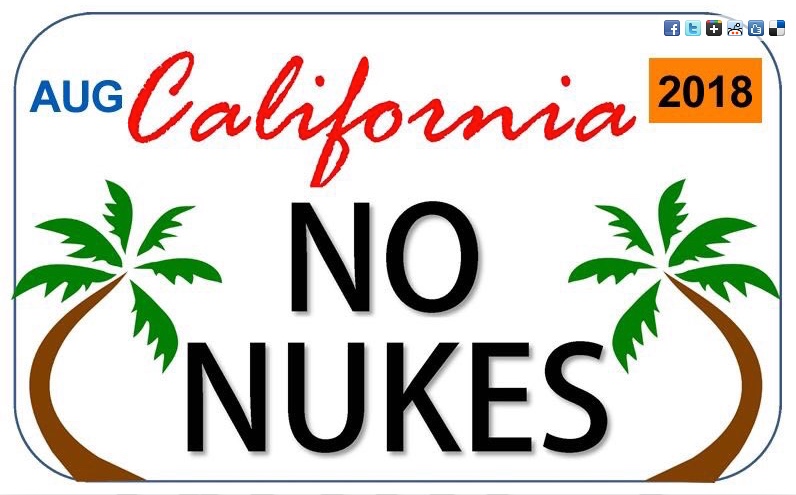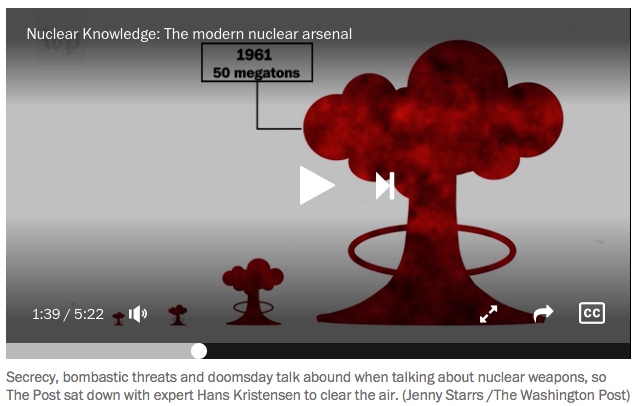2023 News Articles – All Posts
MORUROA FILES: Investigation into French nuclear tests in the Pacific
Poisoned legacy
Leukemia, lymphoma, cancer of the thyroid, lung, breast, stomach … In Polynesia, the experience of French nuclear tests is written in the flesh and blood of the inhabitants. Strontium has eaten into bones, cesium has eaten away at muscles and genitals, iodine has seeped into the thyroid.
The story of this largely unknown health disaster began on July 2, 1966. On that day, the army carried out the Aldebaran fire, the first of the 193 tests fired from the nuclear atolls of Moruroa and Fangataufa until 1996. The first , also, of a series of tests among the most contaminating in the history of the French nuclear program: the tests in the open air. Between 1966 and 1974, the military carried out 46 such explosions.
Disclose and Interprt, in collaboration with the Science & Global Security program at Princeton University (USA), investigated the consequences of atmospheric testing in French Polynesia for two years. With the help of thousands of declassified military documents, hundreds of hours of calculations and dozens of unpublished testimonies, this investigation demonstrates for the first time the extent of the radioactive fallout that struck the inhabitants of this vast territory as the ‘Europe.
According to our calculations, based on a scientific reassessment of the doses received, approximately 110,000 people were infected, almost the entire Polynesian population at the time. Modelling toxic clouds to support, we also unveil how the French authorities have concealed the true impact of nuclear testing on the health of Polynesians for more than fifty years.
On February 18, 2020, the National Institute for Health and Medical Research (Inserm) published, at the request of the Ministry of Defense, a report on “the health consequences of nuclear tests” in French Polynesia. According to this expertise, its authors felt that they could not “make a solid conclusion” to the existence of “links between the fallout from atmospheric nuclear tests and the occurrence of radiation-induced pathologies”. And the college of experts stressed the need to “refine the estimates of doses received by the local population and by civilian and military personnel”. This is precisely what we have endeavored to do in this investigation.
Why the World Needs a New UN Study on the Effects of Nuclear War
“Given that the United States relies on a strategy of nuclear deterrence, which seeks to obtain security by threatening nuclear war, it seems obvious that this country should want to fully understand the risks it is running.”
On the persistence of U.S. nuclear deterrence policy: bostonreview.net/articles/the-extortionists-doctrine/
“Nuclear-armed states do not run these risks alone. The rest of the world can be affected by nuclear war via radioactive fallout, environmental changes such as nuclear winter, and disruption of the global economic system. Almost any nuclear war would be a global problem.”
By Laura Grego, Union of Concerned Scientists | October 29 blog.ucsusa.org
Coming up for a vote in early November is a resolution advanced by the Ireland and New Zealand delegations to the United Nations (UN) to commission a critical new scientific study on the effects of nuclear war. The study, which would be the first under UN auspices in more than 30 years, would be run by an independent scientific panel of 21 members and would examine the physical effects and societal consequences of a nuclear war on local, regional, and planetary scales. It would be comprehensive in its scope, including the climate, environmental, and radiological effects of nuclear war and how these would impact public health, global social and economic systems, agriculture, and ecosystems over periods of days, weeks, and decades.
By Zia Mian, Scientific American | October 28 scientificamerican.com
At the United Nations, an effort is underway in the General Assembly to establish an international panel of scientists to assess, communicate and advance our current knowledge of the effects of nuclear war. The effort would lead to a more fully informed and inclusive global debate on how much and how little everyone—including the nuclear armed states themselves—actually know of the catastrophic large-scale long-term human, environmental, ecological, economic and societal impacts of using nuclear weapons. Ideally, the findings could build a basis for action toward the total elimination of nuclear weapons worldwide and secure a safer future for people and our planet.
Everyone, not just scientists and their respective professional societies, in all nations, including the nuclear-armed states and their allies, should speak in support of this effort to build a shared understanding of the risks posed by nuclear war plans and nuclear deterrence threats.
In September the U.N.’s member states overwhelmingly agreed on the Pact for the Future, which declares: “A nuclear war would visit devastation upon all humankind.” But it has been over 30 years since the last report by the U.N. on this threat.
BOSTON REVIEW: The Extortionist’s Doctrine
“Thus massive second strike—the key to deterrence defined as the practice of preventing nuclear war by discouraging a first strike—somersaults into the perceived position of a first strike.
‘The bar of deterrence,’ [former head of US Strategic Command] Butler writes, ‘ratchets higher, igniting yet another cycle of trepidation, worst-case assumptions and ever-mounting levels of destructive capability.'”
By Elaine Scarry, The Boston Review | October 2024 bostonreview.net
The key structure of the doctrine of nuclear deterrence is audible in the September 4, 2024, speech by U.S. Deputy Under Secretary of Defense Cara Abercrombie: “Any nuclear attack by the DPRK against the United States or its allies and partners is unacceptable and will result in the end of that regime.” The doctrine, which the United States has embraced since the Cold War, aims to prevent an adversary from launching a nuclear weapon by assuring that any first strike will be followed by a retaliatory second strike, whose effects will equal or exceed the original damage and may eliminate the adversary altogether. This annihilating reflex of deterrence is equally audible in the quiet words of the Department of Defense in its web page on “America’s Nuclear Triad,” its sea-based, land-based, and air-based delivery platforms: “The triad, along with assigned forces, provide 24/7 deterrence to prevent catastrophic actions from our adversaries and they stand ready, if necessary, to deliver a decisive response, anywhere, anytime.”
Framed wholly as defensive and preventative (and from day to day, largely successful in deflecting our attention from the actual first use stance the country has had for nearly eighty years), deterrence would almost have the aura of peacekeeping, were it not the mental platform undergirding our fourteen Ohio-class submarines (each able to singlehandedly destroy one of Earth’s seven continents), four hundred land-based ICBMs, and sixty-six B-52 and B-2 stealth bombers.
Although the physical act of unbuilding the nuclear architecture is easily within reach—it would take at most four weeks to dismantle all the nuclear triggers throughout the world, a decisive because disabling first step—the mental architecture of deterrence is the major impediment to doing so.
Searchlight NM: Plutonium just had a bad day in court
In a major decision whose consequences are still being assessed, a federal judge declared that plutonium pit production — one ingredient in the U.S. government’s $1.5 trillion nuclear weapons expansion — has to be performed in accordance with the nation’s strongest environmental law
“…The court found that the agencies charged with reviving the nuclear weapons complex have not properly evaluated the perils that could come with turning out plutonium pits at two different sites, thousands of miles apart. For the plaintiffs in this case — which include Nuclear Watch New Mexico, Savannah River Site Watch, Tri-Valley Communities Against a Radioactive Environment and the Gullah/Geechee Sea Island Coalition — Lewis’s decision to intervene is a milestone.”
“We’ve had a pretty significant victory here on the environmental front,” said Tom Clements, the director of Savannah River Site Watch. “Nonprofit public interest groups are able to hold the U.S. Department of Energy accountable.”
Over the past twenty-plus years, there have been four attempts by NNSA to expand pit production through the NEPA process. All failed. According to Jay Coghlan, executive director of Nuclear Watch New Mexico, this string of defeats could have led to the NNSA’s circumvention of the NEPA process during this round of planning for pit production. Adhering to the rules of the NEPA process, he added, “benefits both the public and the government.”
By Alicia Inez Guzmán, Searchlight New Mexico | October 17, 2024 searchlightnm.org
Most Americans don’t seem aware of it, but the United States is plunging into a new nuclear arms race. At the same time that China is ramping up its arsenal of nuclear weapons, Russia has become increasingly bellicose. After a long period of relative dormancy, the U.S. has embarked on its own monumental project to modernize everything in its arsenal — from bomb triggers to warheads to missile systems — at a cost, altogether, of at least $1.5 trillion.
Los Alamos National Laboratory plays a vital role as one of two sites set to manufacture plutonium “pits,” the main explosive element in every thermonuclear warhead. But as a recent court ruling makes clear, the rush to revive weapons production has pushed environmental considerations — from nuclear waste and increases in vehicular traffic to contamination of local waterways, air and vegetation — to the wayside.
OPINION: Nevada has already passed the test
“A return to explosive nuclear testing in the United States would almost certainly trigger a return to explosive nuclear testing in Russia, China and probably other nuclear-armed states.
…America’s nuclear veterans and local downwinders understand all too well the health risks of radiation exposure from above ground nuclear explosive testing conducted until 1963.”
By Ernest J. Moniz, The Nevada Independent | October 16, 2024 thenevadaindependent.com

Many Nevadans remember the days when the United States was driven by necessity to conduct explosive nuclear tests of America’s nuclear arsenal. By testing, we sought to prove the designs of our nuclear weapons and impress on any potential adversary the futility of striking America or our allies. Today, we are long past the point when explosive nuclear testing is required to ensure their effectiveness, and our adversaries well understand their power. Ignoring these essential facts would put us at peril.
Since the first nuclear weapon test explosion in New Mexico in 1945, the United States conducted more than 1,000 such tests. Nine hundred and twenty-eight of those, or 90 percent, have been conducted in Nevada, the last in 1992, more than 30 years ago.
Now, voices from outside Nevada are making the case for a resumption of nuclear explosive testing in the desert, just 65 miles from Las Vegas. That case is not justified by science or military necessity, especially when a resumption of U.S. nuclear testing could trigger an even more precarious nuclear arms race abroad and endanger the physical and economic health of Nevadans at home.
New Interactive Series from The New York Times: “The Price” of New U.S. Nuclear Weapons
The output at Rocky Flats, which at one point during the Cold War hit 1,000 pits per year, dwarfs the modern ambitions of Los Alamos. Still, the new production is expected to generate levels of radiological and hazardous waste that the lab has not experienced. This comes on top of the contamination already present, which the government estimates will cost some $7 billion to clean up.
“We’re endangering our community for an unnecessary arms race that puts us all at risk,” says Jay Coghlan, the executive director of Nuclear Watch New Mexico, a Santa Fe-based watchdog.
By W.J. Hennigan | Photographs by An-My Lê – THE NEW YORK TIMES October 10, 2024 nytimes.com
Opinion: America Is Updating Its Nuclear Weapons. The Price: $1.7 Trillion Over 30 Years.
Letter To the Editor in Response to the Article Above by Dr. Ira Helfand:
Re “The Staggering Cost of America’s Nuclear Gamble,” by W.J. Hennigan (Opinion, “At the Brink” series, Oct. 13):
Mr. Hennigan says, almost in passing, that “nuclear weapons do deter our adversaries.”
There is a lot to unpack in these six words. There certainly are situations in which one country’s nuclear weapons do deter its adversaries. Russia’s threats to use its nuclear weapons have clearly deterred the United States and NATO from doing more to support Ukraine.
But does deterrence guarantee that these weapons will not be used? Because a failure of deterrence will cause a catastrophe beyond reckoning.
A nuclear war between the United States and Russia could kill hundreds of millions of people in the first afternoon, and the ensuing climate disruption and famine could kill three-quarters of humanity over the next two years. Is there any conceivable benefit that can be derived from possessing these weapons that is worth running this terrible risk?
There have been many near misses already during the nuclear weapons era, crises where certain countries actually began preparations to launch nuclear weapons.
As former Defense Secretary Robert McNamara pointed out, we have not survived this far into the nuclear era because we knew what we were doing. Rather, as McNamara put it, “It was luck that prevented nuclear war.”
The idea that deterrence makes us safe is a dangerous myth. As our highest national security priority, we should be actively seeking a world without nuclear weapons. We don’t know if such an effort can succeed; we have never tried. We do know what will happen if deterrence fails.
Ira Helfand
Northampton, Mass.
The writer is a former president of the International Physicians for the Prevention of Nuclear War, which received the 1985 Nobel Peace Prize.
Santa Fe County commissioners object to environmental finding on LANL power line
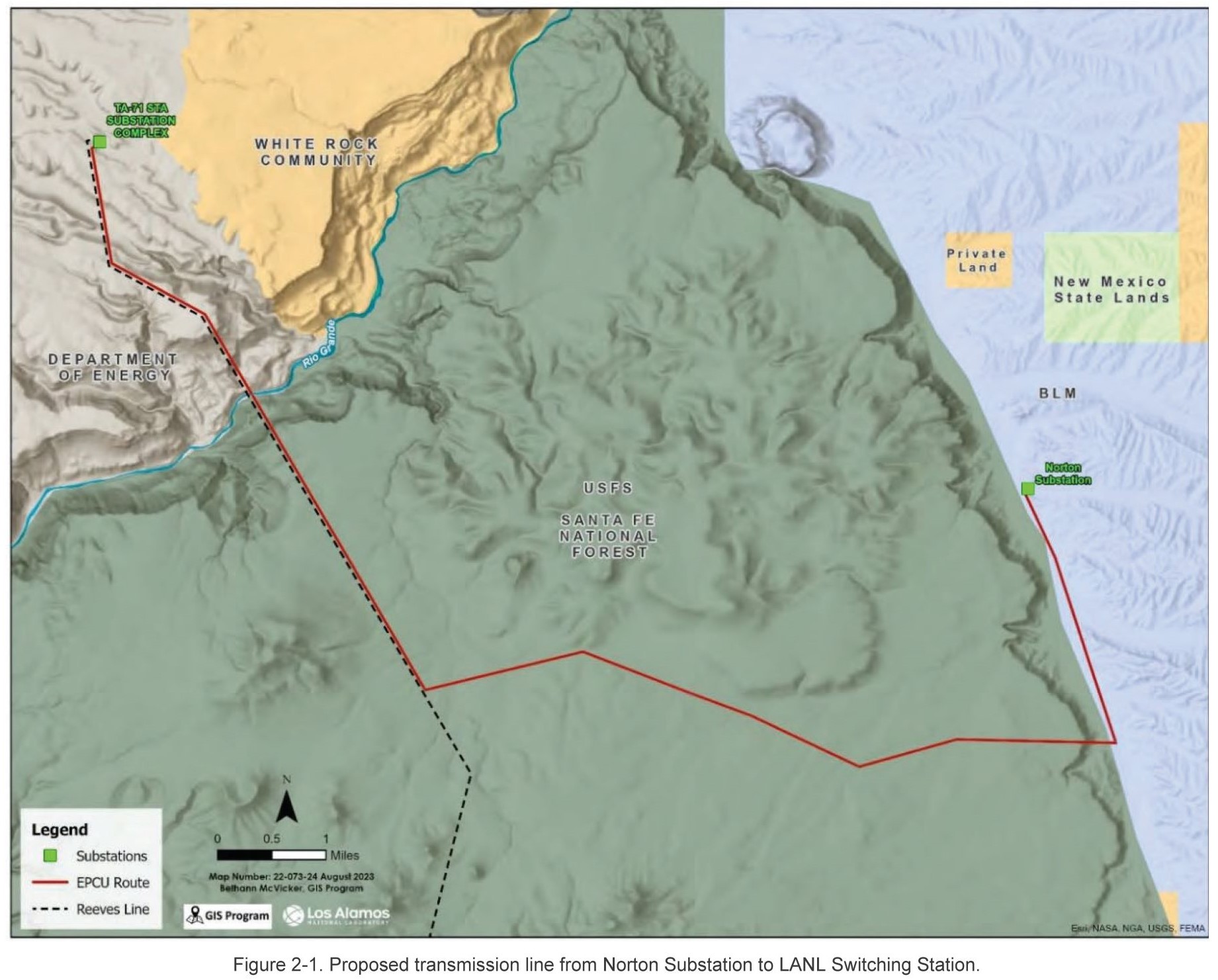
“‘This is sacred land. We have alternatives. There are other ways to do this,’ said Commissioner Camilla Bustamante. ‘I couldn’t be in more support of finding an alternative to taking a power line and putting a scar on something that is not equal to just any other physical location.'”
By Cormac Dodd, Santa Fe New Mexican | October 8, 2024 santafenewmexican.com
The Energy Department just made one plutonium pit. Making more is uncertain
Coinciding with NNSA’s announcement of the first diamond-stamped pit, a US District Court ruled that the Energy Department and the NNSA violated the National Environmental Policy Act (NEPA) by failing to properly consider alternatives before proceeding with pit production, requiring the agency to conduct a programmatic environmental impact assessment.
This was a victory for transparency and the community groups—among them, Savannah River Site Watch, Nuclear Watch New Mexico, Tri-Valley Communities Against a Radioactive Environment (CAREs), and the Gullah/Geechee Sea Island Coalition—who, for years, have been asking for such an assessment.
By Dylan Spaulding, The Bulletin of Atomic Scientists | October 10 thebulletin.org
Two conflicting developments arose this month in US efforts to produce new plutonium pits for its nuclear weapons: The National Nuclear Security Administration (NNSA) announced it had produced a warhead-ready pit—the explosive core of a nuclear weapon—for the first time in decades, and a federal court ruled that NNSA will be required to consider the cumulative environmental and health impacts of its pit production program.
Overshadowing these events is a vigorous debate over the necessity for new pits at all. Previous analyses have found that plutonium pits have viable lifespans well beyond the expected service life of the current stockpile, whereas production of pits for new weapons is part of a sweeping US nuclear modernization that raises concern over the future of arms control and any possibility for stockpile reductions at a time of deteriorating international relations.
Continue reading
Judge finds plutonium production plans violated environmental laws
Both sides of the case are ordered to present a joint plan to address violations by Oct. 25
One of the plaintiffs, Jay Coghlan, the executive director of Nuclear Watch New Mexico called that a “pretty large hurdle to overcome,” for both parties. It’s unclear what happens if the parties fail to present a joint solution.
By: Danielle Prokop – Source NM | October 8 sourcenm.com
U.S. energy officials illegally neglected to study impacts to the environment in efforts to increase plutonium production for nuclear weapons in New Mexico and South Carolina, a federal judge has ruled.
South Carolina District Court Judge Mary Geiger Lewis sided with environmental, anti-nuclear proliferation and community groups last week who sued the National Nuclear Security Administration (NNSA), which oversees the nuclear weapons stockpile as part of the U.S. Department of Energy.
The U.S. is investing billions into restarting the manufacture of plutonium “pits,” the grapefruit-sized spheres developed for nuclear weapons. The federal government halted its manufacturing program at the Rocky Flats Plant in Colorado in 1989 after an FBI raid due to safety concerns and environmental crimes.
The stated goal has been to produce 80 pits per year starting in 2030, split between Savannah River facility proposed in South Carolina and at Los Alamos National Laboratory in New Mexico. The project has faced safety concerns and delays. The Government Accountability Office, a federal watchdog agency, found the NNSA had no comprehensive timeline or cost estimate for pit production, but estimates it’s in the tens of billions of dollars.
Community, environment and anti-nuclear groups brought the lawsuit in 2021, alleging that the NNSA failed to consider alternatives to its two-site proposal and violated the law by not reviewing or changing its last analysis from 2008, when it approved the decisions to move forward in 2020.
Continue reading
U.S. Nuclear Weapons Sites Violated Rules, Judge Finds
In a statement Jay Coghlan, the director of Nuclear Watch New Mexico and a co-plaintiff in the lawsuit, said, “These agencies think they can proceed with their most expensive and complex project ever without required public analyses and credible cost estimates.”
By Matthew Impelli, Newsweek | October 4 newsweek.com
A federal judge ruled this week that some nuclear weapons sites in the U.S. do violate environmental regulations.
On Thursday, a federal judge ruled that the National Nuclear Security Administration violated environmental regulations by failing to adequately assess the environmental impact of its plan to expand plutonium pit production at facilities in South Carolina and New Mexico.
The case involves a lawsuit that targeted a 2018 plan to establish two plutonium pit production sites—one at South Carolina’s Savannah River and the other at Los Alamos National Laboratory in New Mexico. Plaintiffs argued the plan was based on an outdated environmental impact study, which failed to properly assess the implications of simultaneous production at both locations. They also insisted the plan weakened safety and accountability measures for the multibillion-dollar nuclear weapons program and its associated waste disposal.
In the ruling on Thursday, Judge Mary Geiger Lewis said, “Defendants neglected to properly consider the combined effects of their two-site strategy and have failed to convince the court they gave thought to how those effects would affect the environment.”
‘Significant Victory’: Court Rules Planned Plutonium Pits for New Nukes Violate US Law
“Public scrutiny is especially important because the activities at issue here, by their very nature, result in the production of dangerous weapons and extensive amounts of toxic and radioactive waste,” a plaintiffs’ lawyer said.
By Olivia Rosane, CommonDreams | October 3 commondreams.com
In what advocates called a major win for frontline communities and the rule of law, a U.S. district court judge ruled on Monday that the federal government could not move forward with producing plutonium pits—”the heart and trigger of a nuclear bomb“—at two proposed sites in New Mexico and South Carolina.
Instead, Judge Mary Geiger Lewis agreed with a coalition of nonprofit community groups that the Department of Energy (DOE) and the National Nuclear Security Administration (NNSA) violated the National Environmental Policy Act (NEPA) by failing to fully consider alternatives to producing the pits at New Mexico’s Los Alamos National Laboratory and South Carolina’s Savannah River Site (SRS). Now, the federal government must conduct a full environmental impact statement of how pit production would work at sites across the U.S.
“This is a significant victory that will ensure NEPA’s goal of public participation is satisfied,” attorney for the plaintiffs Ben Cunningham, of the South Carolina Environmental Law Project, said in a statement. “Public scrutiny is especially important because the activities at issue here, by their very nature, result in the production of dangerous weapons and extensive amounts of toxic and radioactive waste. I hope the public will seize the upcoming opportunity to review and comment on the federal agencies’ assessment.”
The Bulletin – Nowhere to hide: How a nuclear war would kill you — and almost everyone else.
“The impacts of nuclear war on agricultural food systems would have dire consequences for most humans who survive the war and its immediate effects.
The overall global consequences of nuclear war—including both short-term and long-term impacts—would be even more horrific causing hundreds of millions—even billions—of people to starve to death.”
By François Diaz-Maurin, Design by Thomas Gaulkin | Bulletin of the Atomic Scientists | October 20 thebulletin.org
This summer, the New York City Emergency Management department released a new public service announcement on nuclear preparedness, instructing New Yorkers about what to do during a nuclear attack. The 90-second video starts with a woman nonchalantly announcing the catastrophic news: “So there’s been a nuclear attack. Don’t ask me how or why, just know that the big one has hit.” Then the PSA video advises New Yorkers on what to do in case of a nuclear attack: Get inside, stay inside, and stay tuned to media and governmental updates.
But nuclear preparedness works better if you are not in the blast radius of a nuclear attack. Otherwise, there’s no going into your house and closing your doors because the house will be gone. Now imagine there have been hundreds of those “big ones.” That’s what even a “small” nuclear war would include. If you are lucky not to be within the blast radius of one of those, it may not ruin your day, but soon enough, it will ruin your whole life.
Today is the 10th Annual International Day for the Total Elimination of Nuclear Weapons
Today, September 26th, 2024, marks a significant milestone—the 10th annual UN-designated International Day for the Total Elimination of Nuclear Weapons. This day, established to promote global nuclear disarmament, saw a high-level meeting at the United Nations. During the event, UN Secretary-General António Guterres delivered a powerful message, urging nuclear-armed states to
“stop gambling with humanity’s future.”
He emphasized the urgent need for countries to honor their disarmament obligations and, as a critical first step, commit to never using nuclear weapons under any circumstances. Guterres also called for maximum transparency from nuclear-weapon states in all matters related to their arsenals.
The push for nuclear disarmament is not only a global concern but also resonates deeply on a local level. Archbishop John C. Wester of Santa Fe, New Mexico, has been a vocal advocate for eliminating nuclear weapons. As the leader of an archdiocese in a state that houses key nuclear facilities, including the Los Alamos National Laboratory, Wester has taken a moral stand against the existence and potential use of nuclear arms. His 2022 pastoral letter, Living in the Light of Christ’s Peace: A Conversation Toward Nuclear Disarmament, highlighted the ethical and spiritual necessity of eliminating these weapons, emphasizing their devastating potential and the grave responsibility to protect future generations from such destruction.
As we reflect on the long, devasting history of the nuclear weapons complex, leaders like Archbishop Wester remind us that the path to a world without nuclear weapons is not just a political or strategic issue but also a profound moral imperative. Through sustained international cooperation and local advocacy, the vision of a nuclear-free world might one day become a reality.
Editorial: US Catholics must face up to the nuclear threat, and act
“The silence, given the time, treasure and human resources devoted to the continued development of nuclear weapons, has been deafening. It amounts to a chilling complicity of the nation’s largest Christian community in a mega-death industry.”
NCR Editorial Staff, National Catholic Reporter | September 17, 2024 ncronline.org
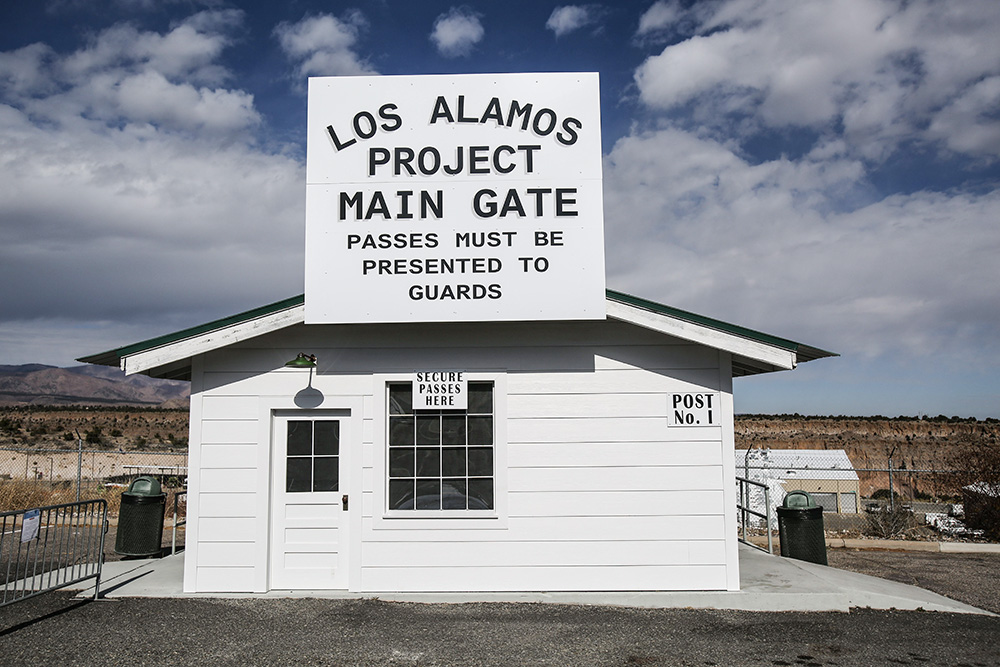
“We can no longer deny or ignore the dangerous predicament we have created for ourselves. We need to start talking about it with one another, all of us, and figure out concrete steps toward abolishing nuclear weapons and ending the nuclear threat.”
—Archbishop John Wester of Santa Fe, New Mexico, “Living in the Light of Christ’s Peace: A Conversation Toward Nuclear Disarmament“
Wester wrote those words in January 2022, a haunting call with a certain biblical resonance coming as they did from a place that doesn’t have a high profile on the ecclesial landscape. It was fitting, then, that a significant step in engaging a public conversation occurred recently at the University of New Mexico — where activists and religious leaders, including Wester and Cardinal Robert McElroy of San Diego, dared to engage with the unthinkable.
New Mexico, as the locale where the nuclear threat was born and where it continues to grow to dimensions beyond imagination, is at the heart of an existential global threat that poses a searing moral question for both church and state. In each realm we are forced to ask as we develop the means to destroy the world: Who are we?
The government is clear in where it is headed and how we define ourselves. Despite the history of hundreds of thousands of gruesome civilian deaths caused by the first uses of nuclear weapons at Hiroshima and Nagasaki, Japan, we have continued unabated in our quest to develop and refine weapons infinitely more destructive than those primitive examples.
The church was less clear, but is changing. Catholic teaching has steadily increased its objections over the decades until it finally, under Pope Francis, now unambiguously condemns even possession of nuclear weapons.
New Mexico forum highlights Catholic views on nuclear disarmament, deterrence
Archbishop John Wester of Santa Fe participated in the forum and said efforts to eliminate nuclear weapons can progress when “reasonable and good-willed people enter into a critical conversation.” These are the kinds of discussions Wester sought to stimulate after the 2022 release of his 52-page pastoral letter, “Living in the Light of Christ’s Peace: A Conversation Toward Nuclear Disarmament,” that challenges conventional political thinking that possessing nuclear weapons serves as a deterrence to potential attacks from other nuclear powers.
Wester wrote that the Archdiocese of Santa Fe has a special responsibility to support the Treaty on the Prohibition of Nuclear Weapons since New Mexico hosts two of the nation’s three nuclear weapons laboratories, the Los Alamos and Sandia National Laboratories. Additionally during World War II, he said, “much of the land for the Los Alamos Lab was seized from Native American ancestral lands and Hispanic homesteaders without adequate compensation, continuing the legacy of colonialism, racism and systemic violence.”
By Alejandra Molina, National Catholic Reporter | September 12, 2024 ncronline.org
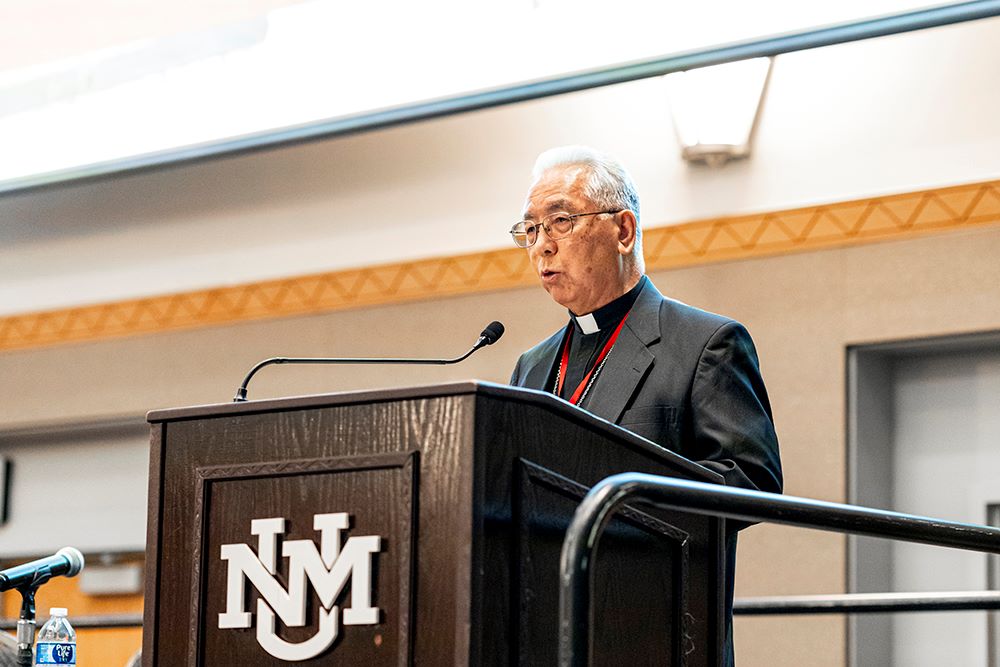
Tina Cordova has made it her life’s work to shed light on the negative health effects plaguing the people of New Mexico after the U.S. military detonated the world’s first atomic bomb at the Trinity test site July 16, 1945. To grasp the severity of the radiation exposure, Cordova says, “it’s important to understand our way of life.”
New Mexicans in that era relied on rivers and creeks as their main water source, and they ate what they cultivated from the soil. The radiation fallout from the detonation contaminated those sources. “We were maximally exposed,” says Cordova, who was raised in a town 45 miles from where the Trinity bomb was detonated.
Nevadans form anti-nuclear testing coalition amid resumption calls

By Jessica Hill, Las Vegas Review-Journal | September 13, 2024 reviewjournal.com
While Nevada once was a site of the country’s nuclear testing and continues to play a critical role in the maintenance of nation’s nuclear stockpile, some Silver State residents are raising the alarm….
Fate of interim storage at Supreme Court could be decided by October
The Fifth Circuit Court in 2023 ruled that the Atomic Energy Act, which created the NRC, did not give the agency the authority to license storage of spent fuel away from the reactors that created it.
By Dan Leone, The Exchange Monitor | September 6, 2024 exchangemonitor.com
Supreme Court justices were scheduled Sept. 30 to consider requests to overturn a ban on the private interim storage of spent nuclear fuel, according to a notice published Wednesday.
The two requests stem from a 2023 decision in a lawsuit filed by Texas in the U.S. Fifth Circuit Court of Appeals that voided a Nuclear Regulatory Commission license issued to Interim Storage Partners (ISP), a joint venture of Orano USA and Waste Control Specialists.
According to the dockets in both cases, NRC and ISP petitions for high-court review were to be distributed to the nine Supreme Court justices on Sept. 30.
After the justices review the petitions in what is officially called a conference, they will decide whether to hear arguments from attorneys, decide the case based only on briefs filed with the high court since June, or let the Fifth Court ruling stand.
New Mexico pushes feds to send more nuclear waste from Las Alamos to WIPP
“‘Los Alamos National Laboratory must now immediately get to work and fill the Waste Isolation Pilot Plant with legacy waste. All excuses have been voided,’ [NMED Secretary] Kenney said. ‘This is the culmination of years of effort by the Environment Department, with this consent order being one more step in holding the Department of Energy accountable.'”
By Adrian Hedden, Carlsbad Current-Argus | September 6, 2024 currentargus.com
New Mexico officials ordered the federal government to remove Cold War-era nuclear waste away from Los Alamos National Laboratory and dispose of some of it at the Waste Isolation Pilot Plant near Carlsbad.
FULL EVENT RECORDING (Updated 9/9 – Audio Issues Fixed): Forum on Nuclear Strategy: Disarmament & Deterrence in a Dangerous World – September 7, 2024
Biden’s ‘new’ nuclear strategy and the super-fuse that sets it off
The military is already upgrading warheads capable of fighting a war with both China and Russia simultaneously
“Although any technically accurate assessment of the physical consequences of the large-scale use of nuclear weapons instantly shows that “winning” a nuclear war has no meaning, the United States has strenuously emphasized the development of nuclear weapons technologies that could only make sense if their intended purpose is for fighting and winning nuclear wars.
The super-fuze is exactly that kind of technology.”
By Theodore Postol, Responsible Statecraft | August 29, 2024 responsiblestatecraft.org
The New York Times reported last week that President Biden has approved a secret nuclear strategy refocusing on Chinese and Russian nuclear forces.
According to the paper, the new nuclear guidance “reorients America’s deterrent strategy” to meet “the need to deter Russia, the PRC (China) and North Korea simultaneously.”
However, Biden’s approval of this strategy is no more than a tacit acknowledgment of a two-decade-long U.S. technical program that has been more than just a “slight modernization” of weapons components, but a dramatic step towards the capability to fight and win nuclear wars with both China and Russia. In other words, there is nothing really “new” here at all, save the very public nature of the strategy’s acknowledgement.
In the face of all of this, Chinese and Russian leaders will have no choice but to implement countermeasures that further increase the already dangerously high readiness of their nuclear forces. This includes intensified worst-case planning that will increase the chances of nuclear responses to false warnings of attack.
The technical source of this vast improvement in U.S. nuclear firepower is a relatively new super fuse or “super fuze” that is already being fitted onto all U.S. strategic ballistic missiles. This fuse more than doubles the ability of the Trident II Submarine Launched Ballistic Missiles (SLBMs) carrying W-76 100kt warheads to destroy Chinese and Russian nuclear-tipped Intercontinental Ballistic Missiles (ICBMs) in hardened silos.
The currently (not fully loaded) U.S. Trident Submarine force carries about 890 W-76 100kt and 400 W-88 475kt warheads. The 400 W-88 warheads have been outfitted with the super-fuze and were originally supposed to have the combination of accuracy and yield to destroy Russian silo-based ICBMs before they are launched. But there are not enough W-88s to attack both Russian and Chinese silo-based ICBMs before they can be launched.
THE GUARDIAN: Plutonium levels near US atomic site in Los Alamos similar to Chornobyl, study finds
Much of the land near the atomic bomb’s birthplace was converted to recreational areas, but toxic waste remains
By Tom Perkins, The Guardian | August 26, 2024 theguardian.com

Soil, plants and water along popular recreation spots near Los Alamos, New Mexico, the birthplace of the atomic bomb, are contaminated with “extreme concentrations” of plutonium, a new study has found, but calls for the federal government to act have been dismissed.
Michael Ketterer, a Northern Arizona University scientist and lead researcher on the project, said the plutonium levels in and around New Mexico’s Acid Canyon were among the highest he had ever seen in a publicly accessible area in the US during his decades-long career – comparable to what is found in Ukraine at the site of the Chornobyl nuclear disaster.
The radioactive isotopes are “hiding in plain sight”, Ketterer said.
“This is one of the most shocking things I’ve ever stumbled across in my life,” he said.
The paper comes on the heels of the US Department of Defense announcing it will ramp up production of plutonium pits, a core component of nuclear weapons, at Los Alamos. Meanwhile, the US Senate approved a defense bill with expanded funding for those exposed to the government’s radioactive waste. Local public health advocates say they are outraged by the exclusion of the Los Alamos region from the benefits.
Research: Plutonium Levels at Los Alamos Rival Chernobyl’s
Hikers use the New Mexico recreation area without being aware of contamination
By Bob Cronin, Newser Staff, NEWSER | August 26, 2024 newser.com
Los Alamos Researcher Warns of Plutonium in Rec Areas
The federal Atomic Energy Commission turned over New Mexico land around its national laboratory decades ago to Los Alamos County without restricting its use, despite its past as the site where the atomic bomb was developed. Much of it was developed for recreational use. Researchers say there’s a problem: They’ve detected “extreme concentrations” of plutonium in the area, which hikers and others aren’t aware of when they head down a trail, the Guardian reports. “This is one of the most shocking things I’ve ever stumbled across in my life,” said Michael Ketterer of Northern Arizona University, the project’s lead researcher.
Plutonium levels detected around Acid Canyon were among the highest Ketterer said he’s seen in a publicly accessible area in the US, and are comparable to those at the site of the Chernobyl nuclear disaster in Ukraine. People using the trails aren’t in immediate danger, he said, while warning that plutonium can get into water supplies that eventually reach the Rio Grande. It also can enter the food chain through plants or spread widely in ash during a wildfire. The Department of Energy issued a statement saying that the levels were “very low and well within the safe exposure range.” Public health advocates want warning signs to go up for recreational users.
Mapping by a local public health advocacy group, Nuclear Watch New Mexico, that used public records also showed high plutonium levels at sample sites throughout the area, per the Guardian. The research shows “New Mexico will forever be saddled with a radioactive isotope that has a 24,000-year half-life,” said Tina Cordova of the Tularosa Basin Downwinders Consortium advocacy group. Ketterer said cleanup—removing the contamination—isn’t practical, per the AP. “It really can’t be undone,” he said.Canyon.
People Harmed by Radiation Exposure Can Forget About Any Federal Compensation
Speaker Mike Johnson killed a proposal to provide benefits to victims of America’s nuclear program.
“It’s really tough to have people say, ‘Nope, sorry that’s too expensive. It wasn’t too expensive to poison you, but it’s too expensive to fix what we did and you aren’t worth it.'”
By Katherine Hapgood, Mother Jones | August 21, 2024 motherjones.com

It wasn’t a difficult choice for Linda Evers, after graduating high school in 1976, to take a job crushing dirt for the Kerr McGee uranium mill, just north of her hometown Grants, New Mexico. Most gigs in town paid $1.75 an hour. This one offered $9 an hour.
She spent seven years working in New Mexico’s uranium mines and mills, driving a truck and loading the ore crusher for much of the late 1970s and early ’80s, including through her pregnancies with each of her children. “When I told them I was pregnant,” Evers, now 66, recalled, “they told me it was okay, I could work until my belly wouldn’t let me reach the conveyor belts anymore.”
Both children were born with health defects—her son with a muscle wrapped around the bottom of his stomach and her daughter without hips. Today, Evers herself suffers from scarring lungs, a degenerative bone and joint disease, and multiple skin rashes. All of which doctors have attributed to radiation exposure.
“We never learned about uranium exposure or any of that. They were killing us. And they knew they were killing us.”
Scientist says there’s legacy plutonium contamination in Los Alamos
‘Extreme plutonium contamination scenario’ identified in research from , soil, water and plant samples taken in Acid Canyon arroyos
BY DANIELLE PROKOP, SOURCE NM | August 16, 2024 sourcenm.com
 Los Alamos, the Atomic City, is facing a legacy of its nickname.
Los Alamos, the Atomic City, is facing a legacy of its nickname.
High levels of plutonium present in samples taken in July from soil, plants and water in Los Alamos’ Acid Canyon may be the oldest contamination in the state, predating the 1945 Trinity Site atomic test, said Michael Ketterer, an analytical chemist and retired professor of chemistry from Northern Arizona University.
“There are some references to contamination being introduced into Acid Canyon starting in 1943,” he said Thursday. “It is very logical to me that this is some of the earliest produced material.”
The legacy plutonium contamination estimated to have lasted into the 1960s is still impacting the land, water and potentially human health, he said in a presentation hosted by Nuclear Watch NM.
“What I’ve found here in Acid Canyon, my friends, is I’d say pretty much the most extreme plutonium contamination scenario I’ve seen in an offsite, uncontrolled environmental setting,” Ketterer said, alluding to thousands of plutonium samples he’s analyzed in his 20-year career.
He said that contamination levels surpass samples he took at private properties around the former plutonium pit production site in Rocky Flats, Colorado.
One concern, which he said warrants immediate federal or state environment protection intervention, was the levels of plutonium contamination in water flows in Acid Canyon.
Scientist describe levels of plutonium near Los Alamos ‘alarmingly high’
By: Chandler Farnsworth, KRQE | August 15, 2024 krqe.com
LOS ALAMOS, N.M. (KRQE) – New findings from a study aimed at researching how much plutonium is in the ground and water near Los Alamos National Laboratory, have the lead scientists concerned.
“I’m just trying to show New Mexicans what the truth is here,” said Dr. Michael Ketterer, Professor Emeritus of Chemistry and Biochemistry at Northern Arizona University. Over the last few months, Dr. Ketterer has collected and analyzed plutonium levels from a trailhead at Acid Canyon in Los Alamos, NM.
“I see a lot of things to be concerned about here,” Dr. Ketterer said.
In his study, Dr. Ketterer says he found “alarmingly high results” of plutonium contamination. Though radiation levels are not high enough to hurt people walking the trail, advocates with Nuclear Watch New Mexico worry about what could happen if a fire broke out, warning that the smoke inhaled could lead to lung cancer.
“Were Acid Canyon to burn in a wildfire, and we know that threat is all too real, that could be dangerous in the form of respirable plutonium that is released to the air through wildfire,” said Jay Coghlan, Executive Director for Nuclear Watch New Mexico.
“We can’t really predict where it’s going to go and how bad it’s going to be,” added Dr. Ketterer about the possibility of a fire happening in the area.
Copyright 2024 Nexstar Media Inc
Full Video Recording: NukeWatch and Dr. Michael Ketterer Present Results from Recent Sampling for Plutonium Contamination Around the Los Alamos National Lab
Watchdog group reports ‘extreme contamination’ of plutonium at Los Alamos open space
The legacy of environmental waste is “hiding in plain sight” at a popular open space in the heart of Los Alamos that became a dumping ground during the Manhattan Project, according to testing results a nuclear watchdog group released Thursday.
By Daniel J. Chacón dchacon@sfnewmexican.com, Santa Fe New Mexican | August 15, 2024 santafenewmexican.com
Soil, plant and water samples collected in July from Acid Canyon — yes, Acid Canyon — revealed “extreme contamination,” including detections of what Nuclear Watch New Mexico said is some of the earliest plutonium produced by humankind.
“What I found here in Acid Canyon [is] pretty much the most extreme contamination scenario I’ve seen in an off-site, uncontrolled environmental setting,” Michael Ketterer, a professor emeritus of chemistry and biochemistry at Northern Arizona University, said during a virtual briefing.
Ketterer, who collected the samples in July with the help of the watchdog group, said he’s analyzed tens of thousands of plutonium samples in a decadeslong career.
“This is way, way, way, way, way at the top end of the charts in terms of how much,” he said. “This is extreme contamination.”
Ketterer said he would compare it to “Chernobyl proximity samples” and samples close to Palomares, Spain, after a B-52 bomber carrying hydrogen bombs collided with a refueling plane in 1966 and coated the seaside town in radioactive dust.
“Hundreds of samples from near Rocky Flats do not come close at all,” he said, referring to a former nuclear weapons production facility in Colorado.
A nuclear legacy in Los Alamos
After three cleanups, independent analysis shows 80-year-old plutonium persists in Acid Canyon and beyond
By Alicia Inez Guzmán, Searchlight New Mexico | August 15, 2024 searchlightnm.org
The world’s oldest documented plutonium contamination may not lie not in the Chihuahuan Desert at the Trinity Site, where the first-ever atomic bomb ripped open the skies and melted the sand into green glass. Rather, that distinction more likely goes to Los Alamos’s Acid Canyon, according to an independent study by Michael Ketterer, professor emeritus of chemistry and biochemistry at Northern Arizona University.
Ketterer announced these findings at an online press conference held by Nuclear Watch New Mexico on Aug. 15, after collecting and analyzing soil, water and plant samples in Acid Canyon, a popular hiking area in the middle of town. Beginning in 1943, the year the Manhattan Project came to Los Alamos, workers released radioactive waste into the canyon. Three remediations would follow, but as Ketterer’s analysis found, “a super weapons-grade” plutonium persists in the soil, water and plant life in and around Los Alamos, representing some of the earliest ever made.
One thought came to his mind as he analyzed samples from the area, collected last month:
“I’ve never seen anything like this in any samples anywhere,” he told Searchlight New Mexico in an interview.
How a US health agency became a shield for polluters
Companies and others responsible for some of America’s most toxic waste sites are using a federal health agency’s faulty reports to save money on cleanups, defend against lawsuits and deny victims compensation, a Reuters investigation found. A Missouri neighborhood’s tale.
By JAIMI DOWDELL, M.B. PELL, BENJAMIN LESSER, MICHELLE CONLIN, PHOEBE QUINTON and WAYLON CUNNINGHAM, Reuters | August 11, 2024 reuters.com
When they bought their homes in the Spanish Village neighborhood northwest of St. Louis, many residents had no idea a radioactive landfill sat less than a mile away.
Health conditions mounted over the years, suggesting something wasn’t right.
Wester warns: ‘We are now in a nuclear arms race far more dangerous than the first’
“…There is a frustration that our world leaders are not listening. The tragedy of the 200,000 killed both in Hiroshima and Nagasaki seems to fall on deaf ears.
We are now in a nuclear arms race arguably far more dangerous than the first. We see countries modernizing their nuclear arsenals and spending scads of money in what appears to be (a move toward) ‘nuclear weapons forever.’”
By Gina Christian, OSV News | August 6, 2024 catholicreview.org

Archbishop John C. Wester of Santa Fe, N.M., has traveled to Japan on a “pilgrimage of peace” commemorating the 79th anniversary of the atomic bombings of Hiroshima and Nagasaki during World War II. The pilgrimage, which the archbishop undertook last year as well, was announced Aug. 3 by the Santa Fe Archdiocese.
The attacks on the two Japanese cities — launched by the U.S. on Aug. 6 and 9, 1945, in an effort to force the unconditional surrender of Japan and hasten the end of the war — killed an estimated 110,000 to 210,000 people. The true number of casualties is “probably fundamentally unknowable,” according to nuclear weapons historian Alex Wellerstein.
Continue reading
Hiroshima – The Unknown Images
On August 6, 1945, at 8:15 a.m., a bright flash set the sky over Hiroshima ablaze. A gigantic column of smoke rises above the city. The first nuclear bomb in history has just been dropped on the largest metropolis in western Japan.
This 2015 documentary shows this tragedy from the inside using photos taken that day.
Nuclear disarmament seemed possible. The imagined destruction of a Kansas town helped get us there.
“While part of the rationale for modernizing the American arsenal is safety — some of the warheads in the stockpile are 50 years old — the other part is deterrence. Despite the end of the Cold War, the doctrine of Mutual Assured Destruction continues. We find ourselves in a new arms race, one that aims to keep existing stockpiles stable but make new weapons out of them that are more reliable and precise, and hence deadlier.”
By Max McCoy, Kansas Reflector | August 4, 2024 kansasreflector.com

From miles above the midwestern prairies, I got a first-hand look at the machinery of doomsday.
Lying on my stomach in a pod beneath the tail of a KC-135 Stratotanker I watched as the operator next to me guided the flying boom behind us toward an aircraft keeping pace just below. This was a midair refueling mission, and the boom would top off the tanks of the receiving aircraft. That plane, with its white upper fuselage and black nose, was an EC-135 airborne command post, code named “Looking Glass.”
I’ve been thinking about that flight lately as the anniversaries of the atomic bombings of Hiroshima and Nagasaki again approach. On Tuesday, it will be 79 years since the U.S. destroyed Hiroshima with an atomic bomb, followed three days later by the bombing of Nagasaki. More than 200,000 people were killed, mostly civilians. The bombings hastened the end of World War II but heralded the passing of our technological innocence — we finally had the power to annihilate ourselves as a species.
Partnership for a World Without Nuclear Weapons: Archbishop John C. Wester to Honor the 79th Anniversary of the Atomic Bombings in Hiroshima and Nagasaki
ALBUQUERQUE, NM – Saturday, August 3, 2024 – IMMEDIATE RELEASE—Partnership for a World Without Nuclear Weapons: Most Rev. John C. Wester, Archbishop of Santa Fe, New Mexico, and Jay Coghlan, Executive Director of Nuclear Watch New Mexico, are set to embark on a pilgrimage to Hiroshima and Nagasaki, Japan, to commemorate the 79th anniversary of the atomic bombings. This visit underscores the Archdiocese of Santa Fe’s unwavering commitment to advocating for universal, verifiable nuclear disarmament.
During this multi-day journey, they will engage with Japanese and Korean bishops, fostering dialogue and solidarity in the shared mission to eliminate nuclear weapons globally. This pilgrimage is a testament to the enduring spirit of peace and reconciliation and a call to action for renewed and serious conversations about disarmament in New Mexico and around the world.
“Standing in the very places where the catastrophic consequences of nuclear warfare were first realized compels us to rededicate ourselves to the pursuit of a world free from nuclear weapons,” said Archbishop Wester. “This pilgrimage is not only a gesture of remembrance but also a commitment to continue our work toward global peace and security.”
He emphasized the critical need for sustained advocacy. “The lessons of Hiroshima and Nagasaki are more relevant than ever. As we honor the victims and survivors of these tragedies, we must also challenge the status quo and push for real progress in nuclear disarmament.”
The visit to Hiroshima and Nagasaki will include participation in memorial ceremonies, meetings with survivors (hibakusha), and discussions with key religious and civic leaders. These activities will serve as a powerful reminder of the moral and ethical imperatives to dismantle nuclear arsenals and prevent future nuclear catastrophes.
Does the United States Need More Nuclear Weapons?
The United States is estimated to have roughly 3,700 warheads in its active arsenal. This includes 1,670 thermonuclear warheads deployed on 660 powerful long-range missiles on land and at sea or available for delivery on strategic bombers. There are also another 100 tactical nuclear bombs that can be delivered on shorter-range aircraft, according to independent estimates.5 The use of a fraction of these weapons, many primed for launch within minutes, would lead to mass destruction on an unprecedented global scale.
Contrary to the hype, more nuclear weapons would not improve, on balance, the U.S. capability to deter nuclear attack. In fact, significant increases in the U.S. deployed nuclear arsenal would undermine mutual and global security by making the existing balance of nuclear terror more unpredictable and would set into motion a counterproductive, costly action-reaction cycle of nuclear competition.
By Daryl G. Kimball, Arms Control Today | July/August 2024 armscontrol.org
The experience of the Cold War proves that nuclear arms racing produces only losers and increased risks for everyone.

Nevertheless, following more than a decade of deteriorating relations between the United States and its main nuclear rivals, dimming prospects for disarmament diplomacy, and major nuclear weapons modernization efforts, China, Russia, and the United States are now on the precipice of a dangerous era of unconstrained nuclear competition. Concern in U.S. national security circles about Chinese and Russian nuclear capabilities has grown since Russia’s full-scale invasion of Ukraine effectively shut down the U.S.-Russian nuclear risk reduction and arms control dialogue. The Kremlin has rejected the White House proposal to negotiate a new nuclear arms control framework to replace the New Strategic Arms Reduction Treaty (New START), which expires on February 5, 2026.1 China has declined U.S. offers to continue bilateral discussions on reducing nuclear risk and on nuclear postures.2
Moreover, as the U.S. intelligence community forecasts that China could amass as many as 1,000 nuclear weapons by 2030, with several hundred of them deployed on a larger force of intercontinental ballistic missiles (ICBMs), some members of the nuclear weapons establishment, leading members of Congress, and Biden administration officials have suggested that the massive U.S. arsenal may not be sufficient to deter two “near peer” nuclear rivals.3 China is currently estimated to have some 500 nuclear weapons and 310 long-range, nuclear-armed ballistic missiles.4
New York Times: Olympic Surfing Comes to a ‘Poisoned’ Paradise
In 1974, a radioactive cloud from a French nuclear test drifted over Teahupo’o, Tahiti, now the surfing venue for the Paris Games. Villagers still feel the effects.
By Hannah Beech / Photographs by Adam Ferguson, The New York Times | July 30, 2024 nytimes.com | Hannah Beech and Adam Ferguson spent a week in French Polynesia, documenting the impact of nuclear testing on a territory that is hosting the Olympic surfing competitions.
Fifty years ago this July, as the waters of the South Pacific rushed toward the shores of Teahupo’o in a perfect, powerful curl, as they have always done, another wave visited the tiny hamlet. This time it was an invisible and airborne one: a surge of radiation escaping from a nuclear weapon test conducted by France in this far-flung reach of their republic.
Navajo Nation plans to test limit of tribal law preventing transportation of uranium on its land
The Navajo Nation plans to test the limits of a tribal law that banned the transportation of uranium ore on its lands
By FELICIA FONSECA, ASSOCIATED PRESS | July 30, 2024 abcnews.com
PHOENIX — The Navajo Nation planned Tuesday to test a tribal law that bans uranium from being transported on its land by ordering tribal police to stop trucks carrying the mineral and return to the mine where it was extracted in northern Arizona.
But before tribal police could catch up with two semi-trucks on federal highways, they learned the vehicles under contract with Energy Fuels Inc. no longer were on the reservation.
Navajo President Buu Nygren vowed to carry out the plan to enact roadblocks while the tribe develops regulations over the first major shipments of uranium ore through the reservation in years.
“Obviously the higher courts are going to have to tell us who is right and who is wrong,” he told The Associated Press. “But in the meantime, you’re in the boundaries of the Navajo Nation.”
The tribe passed a law in 2012 to ban the transportation of uranium on the vast reservation that extends into Arizona, New Mexico and Utah. But the law exempts state and federal highways that Energy Fuels has designated as hauling routes between the Pinyon Plain Mine south of Grand Canyon National Park for processing in Blanding, Utah.
Still, Nygren and Navajo Attorney General Ethel Branch believe the tribe is on solid legal footing with a plan for police to block federal highways, pull over drivers and prevent them from traveling farther onto the reservation.
New Mexico ‘birth to grave state’ for nuclear, critics say
Jay Coghlan at Nuclear Watch New Mexico read a letter to officials from Archbishop of Santa Fe John Wester, a critic of nuclear proliferation advocating for disarmament. He called for a sitewide environmental review of Los Alamos National Laboratory before the government expands the lab’s activities.
“Nuclear weapons were invented here in my arch dioceses, and thus I feel a responsibility to address this threat,” Coghlan read. “Nuclear disarmament is a right to life issue. The very possession of nuclear weapons is immoral. What does this say about expanded pit production without providing the public the opportunity to review and comment?
“You’re very good at creating them, now show us how smart you are by showing us how to get rid of nuclear weapons. Let’s preserve New Mexico’s potential to manifest God’s love for all of his creations.”
By Adrian Hedden, Carlsbad Current-Argus | July 24, 2024 currentargus.com
New Mexico was a fixture in the federal government’s plans to develop more nuclear weapons in the northern part of the state, and that could mean more nuclear waste being sent the southeast corner.
The Waste Isolation Pilot Plant outside Carlsbad disposes of transuranic (TRU) nuclear waste, made up of clothing materials, equipment and other debris irradiated during nuclear activities at federal sites around the country. It’s trucked into the site and buried in a salt deposit about 2,000 feet underground.
Meanwhile, the Department of Energy through its National Nuclear Security Administration (NNSA) is planning to build up to 30 plutonium pits – triggers for nuclear warheads – per year by 2030, along with 50 a year at the Savannah River Site in South Carolina.
Candice Robertson, senior adviser at the DOE’s Office of Environmental Management (EM) said during a Monday townhall in Santa Fe that WIPP did have enough space for “planned TRU waste,” as officials estimated the repository could remain active until about 2083.
2022 Select Highlighted Press Items
Nuclear Modernization is the ’Absolute Minimum,’ STRATCOM Commander Says | March 8, 2022
US tested hypersonic missile in mid-March but kept it quiet to avoid escalating tensions with Russia | April 4, 2022
Putin’s Nuclear Threats Are a Wake-Up Call for the World | March 15, 2022
Intelligence report determines that Russia's WMD threats will grow as losses mount in Ukraine | March 19, 2022
China and the United States: It’s a Cold War, but don’t panic | March 10, 2022
Russian military doctrine calls a limited nuclear strike “de-escalation.” Here’s why. | March 8, 2022
North Korea says it will strike with nuclear weapons if South attacks | April 4, 2022
Flying Under The Radar: A Missile Accident in South Asia | April 4, 2022
2022 News Articles
$61 million in refunds for customers in SC nuclear debacle
Four executives of the utility or the company that was building the reactors have been indicted or have pleaded guilty to criminal charges in the failure.
COLUMBIA, S.C. (AP) — A South Carolina judge has approved a second round of refunds for customers of a utility that poured billions of dollars into two nuclear power plants that never produced a watt of power.
About $61 million is being set aside for Dominion Energy South Carolina after the utility sold a number of properties as part of the settlement of a class-action lawsuit by 1.1 million of its customers over the never completed plants at the V.C. Summer Nuclear Station near Columbia.
Eventually, our nuclear luck will run out
Putin might not use nukes. But someday, someone will.
“The war in Ukraine should, if nothing else, push us to take stock of the inhuman policies that keep total destruction a perpetual option. If we can’t act now, when the risk of the worst-case scenario has become horrifyingly real, will we ever act?”
BY DAVID FARIS | April 28, 2022 theweek.com
As fears of escalation in Ukraine increase with every day of Russia’s deranged invasion, the specter of nuclear war spreads over the planet. Will Russian President Vladimir Putin authorize the use of “tactical” nuclear weapons, most of which are stronger than the nightmare devices dropped on Japan in 1945? The risk of annihilation remains low at any given moment, but the longer we allow states to threaten one another with this kind of eradication, the more likely it is we’ll eventually stumble into a catastrophic nuclear event. Maybe it won’t happen this year, this war, or this century. But in the long-term, in a world with nukes, nuclear war is inevitable.
LANL would get over $1B bump in proposed budget
BY SCOTT WYLAND, THE SANTA FE NEW MEXICAN | April 20, 2022 santafenewmexican.com
SRS WATCH: Nuclear Weapons Funding Request for DOE, Savannah River Site Takes a Huge Leap in Support of Dangerous, Enduring U.S. Plans to Fight a Full-Scale Nuclear War
 SRS to Take a Larger Role in Nuclear Weapons Activities as Funding for SRS Plutonium Bomb Plant Spirals Out of Control, Increasing 189% in One Year and Nearing $1 Billion Per Year
SRS to Take a Larger Role in Nuclear Weapons Activities as Funding for SRS Plutonium Bomb Plant Spirals Out of Control, Increasing 189% in One Year and Nearing $1 Billion Per Year
Columbia, SC – Details of the U.S. Department of Energy’s nuclear weapons budget request for Fiscal Year 2023 were released on Friday, April 22, 2022, and a frightening picture emerges of a nation engaged in a nuclear weapons buildup emerges. A key to DOE’s plans to make new nuclear weapons and upgrade old ones is dependent on a host of new production facilities, with the proposed Savannah River Site (SRS) Plutonium Bomb Plant (PBP) playing a key role in expanded reliance on nuclear weapons.
Link to SRS Watch news release, which include links to DOE’s FY23 budget justification, released on April 22, 2022:
https://srswatch.org/wp-content/uploads/2022/04/SRS-Watch-news-on-DOE-budget-April-22-2022-1.pdf
Governor Backs Citizens’ Concerns About Diluted Plutonium in Letter
[Michelle Lujan Grisham] sided with residents’ contention — which she has stated in the past — New Mexico shouldn’t be home to the nation’s sole nuclear waste storage site.
“The petitioners would like to see the DOE develop a new disposal site in a state other than New Mexico,” she wrote in the letter.
By Scott Wyland swyland@sfnewmexican.com | April 18, 2022 santafenewmexican.com
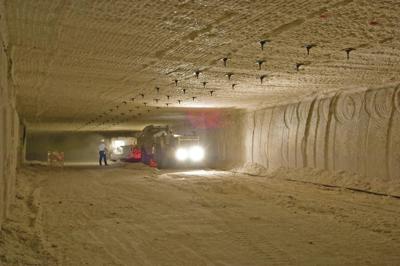
Gov. Michelle Lujan Grisham is asking the Department of Energy to be more open about its plans to dilute and dispose of surplus plutonium and to address concerns by New Mexico residents about the radioactive materials that would be shipped through the state multiple times.
In a letter to Energy Secretary Jennifer Granholm, the governor cited a 1,146-signature petition her office received in which residents expressed uneasiness about the agency’s vague plans to dilute dozens of metric tons of plutonium — which partly would be done at Los Alamos National Laboratory — before disposing of it at an underground site in Carlsbad.
Discovery of radioactive liquid pauses work at US nuke dump
“Independent federal investigators last month raised concerns about whether cost overruns and missed construction deadlines will continue at the Waste Isolation Pilot Plant…State regulators are weighing a permit change that some critics have said could lead to expanded repository operations. A decision is expected later this year.”
BY SUSAN MONTOYA BRYAN | April 11, 2022 AP NEWS apnews.com
ALBUQUERQUE, N.M. (AP) — An area at the U.S. government’s nuclear waste repository in southeastern New Mexico was evacuated over the weekend after workers handling a shipping container discovered a small amount of radioactive liquid inside it.
There was no indication of airborne contamination and testing of workers’ hands and feet turned up no contamination after the discovery was made late Saturday in a bay where containers are processed before being taken underground for disposal, officials said in a statement.
“The event at the site has been secured. There is no risk of radiological release and there is no risk to the public or the environment,” plant officials said their most recent statement, issued late Saturday.
Ukrainians shocked by ‘crazy’ scene at Chernobyl after Russian pullout reveals radioactive contamination
“What we see [in Chernobyl] is a vivid example of outrage at a nuclear facility. It is the responsibility not only of Ukraine, but of the whole world, to keep the stations safe. The whole world watched live as tanks fired at nuclear power units [in Zaporizhzhia]. This history must never repeat itself.” – Ukrainian Interior Minister Monastyrskyy
BY Vasco Cotovio, Frederik Pleitgen, Byron Blunt and Daria Markina, CNN | April 9, 2022 cnn.com
Chernobyl, Ukraine (CNN) The sudden ear-piercing beep of a radiation meter fills the room as a Ukrainian soldier walks in. This is where Russian soldiers were living at the Chernobyl nuclear power plant, and radiation levels are now higher than normal.
“They went to the Red Forest and brought radioactive material back with them on their shoes,” soldier Ihor Ugolkov explains. “Other places are fine, but radiation increased here, because they were living here.”
Workers evacuated from area of Carlsbad nuclear waste repository after ‘abnormal event’
— DOE WIPP (@WIPPNEWS) April 10, 2022
— DOE WIPP (@WIPPNEWS) April 10, 2022
Officials at the facility say there was no risk of radioactive contamination.
BY ADRIAN HEDDEN | April 9, 2022 Carlsbad Current Argus currentargus.com
Carlsbad led to the evacuation of workers Saturday night from an area of the facility where waste is prepared for disposal.
The incident was reported at about 8:20 p.m. in the waste handling building, where shipments of nuclear waste are prepared for disposal in the underground repository.
Officials said there was no risk of a radiological release after the event was investigated.
As a drum of waste was being processed, liquid was found at the bottom of the container which tested positive for radioactive contamination, per a news release from WIPP officials.
All personnel in the area were evacuated and tested for contamination, and operations were temporarily paused.
India’s Inadvertent Missile Launch Underscores the Risk of Accidental Nuclear Warfare
Complex weapon systems are inherently prone to accidents, and this latest launch is one of a long history of military accidents in India
“The mistake that is of greatest concern is a false alarm of an incoming nuclear attack, possibly directed against nuclear forces. Indian or Pakistani—or Russian or NATO—policy makers may find themselves under immense pressure to launch a preemptive attack, thereby compounding the crisis…Nuclear war, even of a limited nature, between India and Pakistan could lead to millions of deaths in the short term and even graver consequences in the longer term for the region and beyond.”
By Zia Mian, M. V. Ramana | April 8, 2022 Scientific American scientificamerican.com
Last month, while most of the world focused on the war in Ukraine and worried that a beleaguered Russian leadership might resort to nuclear weapons, thus escalating the conflict into a direct war with the U.S.-led NATO nuclear-armed alliance, a nearly tragic accident involving India and Pakistan pointed to another path to nuclear war. The accident highlighted how complex technological systems, including those involving nuclear weapons, can generate unexpected routes to potential disaster—especially when managed by overconfident organizations.
Nuclear missiles, bombs market to surge 73% by 2030: Report
“…International treaties and consortiums discourage nuclear testing,” the firm said in a report summary. “This hampers the market growth.”
By Sarah Morland, Reuters | April 4, 2022 livemint.com
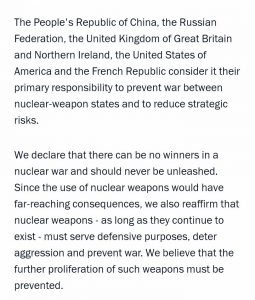 US President Joe Biden last week requested a record peacetime national defence budget, which would prioritise modernizing its nuclear “triad” of ballistic missile submarines, bombers and land-based missiles.
US President Joe Biden last week requested a record peacetime national defence budget, which would prioritise modernizing its nuclear “triad” of ballistic missile submarines, bombers and land-based missiles.
The report predicted that demand for small nuclear warheads, which can be easily deployed through aircraft and land-based missiles, would fuel faster growth in these segments, although submarine-launched ballistic missiles (SLBMs) accounted for a quarter of the market in 2020.
While North America dominated more than half the global market in 2020, the report predicted the fastest growth would come from the Asia-Pacific region on initiatives by India, Pakistan and China to bolster their nuclear arsenals.
“However, international treaties and consortiums discourage nuclear testing,” the firm said in a report summary. “This hampers the market growth.”
It predicted that the rising influence of non-nuclear proliferation treaties and national efforts should increase the number of warheads in storage or awaiting dismantlement.
Active weapons, however, accounted for the “lion’s share” – more than two-thirds – of the market in 2020, it said, due to investment in nuclear arsenals and new warhead purchases.
Britain, China, France, Russia and the United States at the start of the year issued a joint statement saying there could be no winners in a nuclear war and it must be avoided.
A Megaton of Waste
The White House’s new defense budget lavishes money on America’s nuclear weapons program in the name of competing with China and Russia. It’s totally unnecessary.
“Biden has scaled back his domestic ambitions even while pushing the defense budget upward and onward.”
By Fred Kaplan SLATE | March 30, 2022 slate.com
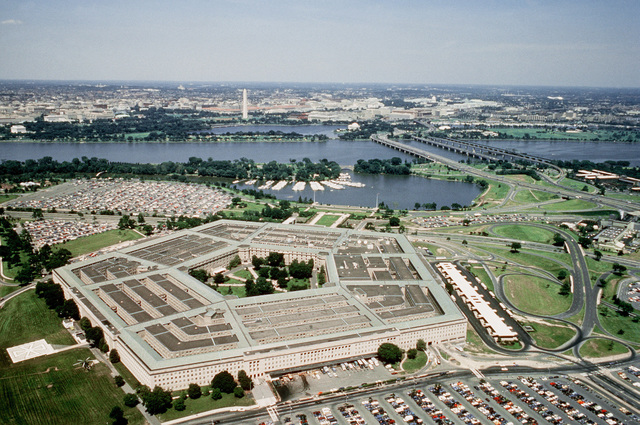
President Joe Biden’s defense budget for 2023 is gargantuan. It comes to $813.3 billion, nearly $60 billion higher than the budget he requested a year ago for 2022. Just a few weeks ago, Congress passed a bill adding $25 billion to that earlier budget. Biden’s new budget, which he submitted on Monday, accepts the congressional hike as a baseline and raises the pot by another $32 billion.
To put this in perspective, Biden’s $813 billion exceeds President Donald Trump’s final defense budget by $75 billion—which, for a sense of proportion, is about 2.5 times what the government spends on Pell grants for low-income college students. It tops the amount that the Trump administration figured it would spend in 2023 by $40 billion.
Nuclear Radiation is Becoming a Campaign Issue
Why it’s time to expand the Radiation Exposure Compensation Act.
“Without congressional action, RECA will expire in July 2022. Because of the arbitrarily drawn lines of eligibility written into the original 1990 bill, many Downwinders and other impacted individuals, like many uranium workers, are not eligible for compensation — both in Utah, and in states across the West and territories in the Pacific.”
By Tina Cordova and Mac Hamilton | March 29, 2022 inkstickmedia.com
In recent weeks, the world has held its collective breath as Russia shelled, and then occupied, Chernobyl, the site of the world’s worst-ever nuclear reactor disaster, and Zaporizhzhia, the largest nuclear power plant in Ukraine. Not to mention Putin’s thinly veiled threats of nuclear war to those who support Ukraine. With these developments, the world consciousness has been reinvigorated with concern about nuclear radiation. But, the concern over radiation never waned for those in the American West, who continue to live with the disastrous health consequences from Cold War-era nuclear testing and production.
Santa Fe New Mexican Letters to the Editor:
THE SANTA FE NEW MEXICAN | April 2, 2022 santafenewmexican.com
With Russia at war in Ukraine, US ramps up nuclear-weapons mission at Los Alamos. Is it a ‘real necessity’?
“The core debate: A multi-billion-dollar project to make plutonium cores at Los Alamos National Laboratory may be unsafe, unnecessary and ill-conceived. But proponents say the mission is a must.”
BY Annabella Farmer | March 24, 2022 Searchlight NM searchlightnm.org![]()
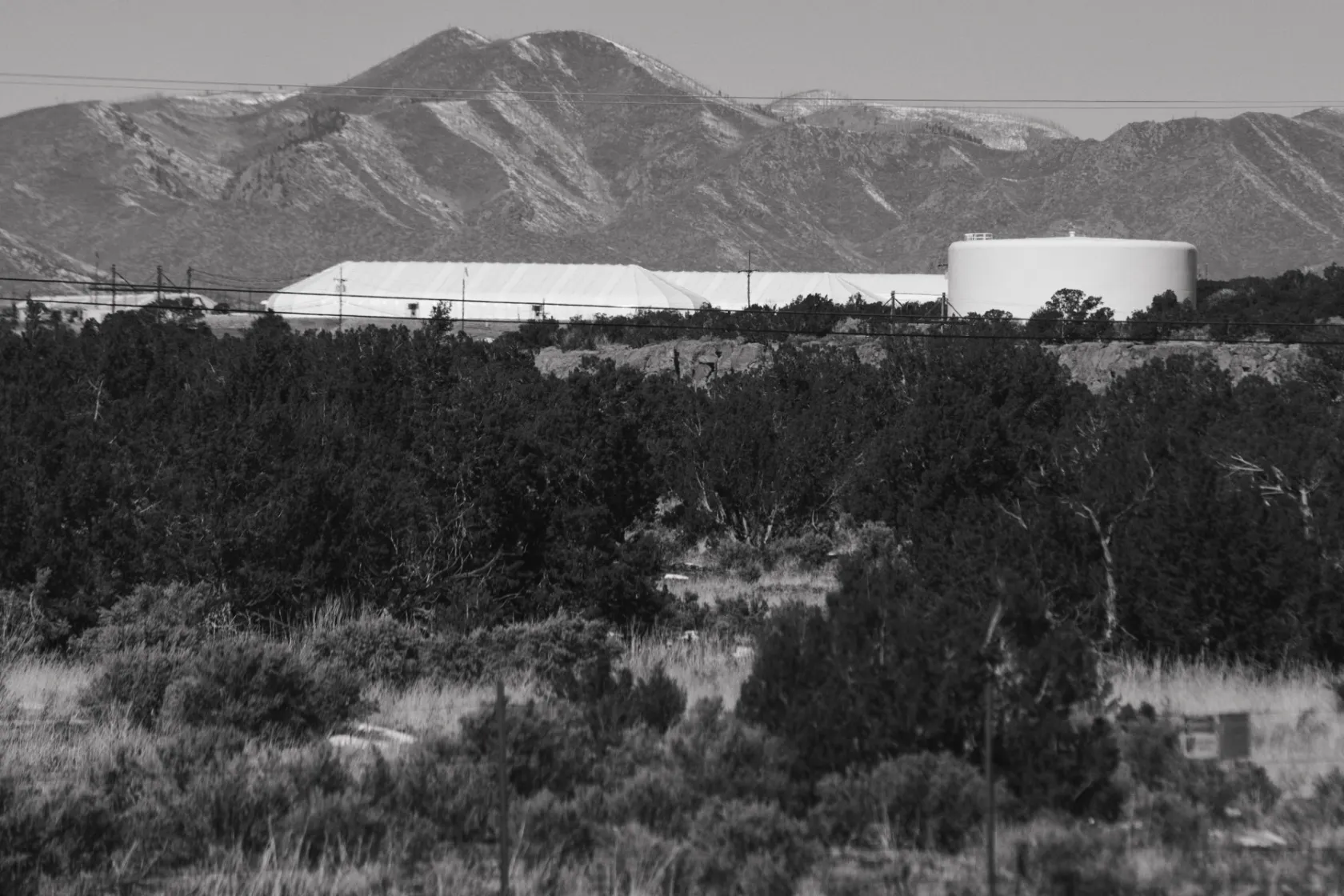
LOS ALAMOS — Los Alamos began as an “instant city,” springing from the Pajarito Plateau in 1943 at the dawn of the Atomic Age. More than 8,000 people flocked here to work for Los Alamos National Laboratory and related industries during the last years of World War II. Now the city may be on the brink of another boom as the federal government moves forward with what could be the most expensive warhead modernization program in U.S. history. Under the proposed plan, LANL will become home to an industrial-scale plant for manufacturing the radioactive cores of nuclear weapons — hollow spheres of plutonium that act as triggers for nuclear explosions. The ripple effects are already being felt.
Roads are planned to be widened to accommodate 2,500 extra workers. New housing developments are appearing, one of them about a mile from large white tents that house drums of radioactive waste. And these are just the signs visible to the public: Within the lab, workers are busy around the clock to get facilities ready to produce the first plutonium core next year.
The cores — known as pits — haven’t been mass-produced since the end of the Cold War. But in 2018, under pressure from the Trump administration, the federal government called for at least 80 new pits to be manufactured each year, conservatively expected to cost $9 billion — the lion’s share of a $14.8 billion weapons program upgrade. After much infighting over the massive contract, plans call for Los Alamos to manufacture 30 pits annually and for the Savannah River Site in South Carolina to make the remaining 50.
The idea of implementing an immense nuclear program at Los Alamos has sparked outrage among citizens, nuclear watchdogs, scientists and arms control experts, who say the pit-production mission is neither safe nor necessary.
ORIGINAL ARTICLE
Feds agree to LANL waste cleanup and repairs to settle lawsuit
Federal officials would agree only to study the possibility of clearing out waste from the Area G pit and wouldn’t commit to following through, said Jay Coghlan, Nuclear Watch’s executive director.
“Ideally, the transuranic nuclear waste would go to WIPP, and the low-level radioactive materials would be buried in a landfill with liners and a leachate collection system. Capping and covering the on-site pit is problematic because it’s unlined and could allow toxins to leach into the groundwater,”
By Scott Wyland swyland@sfnewmexican.com | March 23, 2022 santafenewmexican.com
Los Alamos National Laboratory will do extensive waste cleanup and fix a long-broken monitoring system for polluted runoff to comply with a settlement of a watchdog’s lawsuit.
The U.S. Department of Energy and Nuclear Watch New Mexico agreed to a settlement in federal court last week to end six years of litigation for what the watchdog group characterized as neglect of longtime issues.
“It’s now a legal obligation on the part of DOE,” said Jay Coghlan, Nuclear Watch’s executive director. “I do expect DOE will be cooperative in this.”
Say NO to nuclear war!
Stop President Biden’s atrocious request: an $813 billion Pentagon budget!
President Biden has requested an additional $31 billion to increase the Pentagon budget from this year’s already excessive level of $782 billion. But this money should be spent on YOUR needs!
The Ukraine war has been used as an excuse for this outrageous Pentagon budget — which is 12 times more than Russia’s military spending. The Pentagon, which spends more than the next 11 countries combined, can easily afford to arm Ukraine and send more troops to Europe (though we oppose these steps) without additional funding.
The rapid increases in the Pentagon budget are making us less safe, even as war rages in Ukraine. They will only raise tensions with Russia and China, prepare for a superpower conflict, and put innocent people at risk.
Nuclear fears in US amid Russia-Ukraine war, says a new poll
Close to half of Americans say they are very concerned that Russia would directly target the U.S. with nuclear weapons, and an additional 3 in 10 are somewhat concerned about that, according to the new poll from The Associated Press-NORC Center for Public Affairs Research. Russian President Vladimir Putin placed his country’s nuclear forces on high alert shortly after the Feb. 24 invasion.
BY BEN FOX and HANNAH FINGERHUT | March 28, 2022 APNEWS apnews.com
Americans fear being drawn in
Russia’s war on Ukraine has most Americans at least somewhat worried that the U.S. will be drawn directly into the conflict. Now a new poll says there is also anxiety among Americans that they could be targeted with nuclear weapons.
Nearly 50% ‘very concerned’
Close to half of Americans in the poll say they are very concerned that Russia would directly target the U.S. with nuclear weapons, and an additional 3 in 10 are somewhat concerned about that.
Concerned Citizens for Nuclear Safety: “Nuclear Watch New Mexico Settlement Moves Cleanup at LANL Forward”

This week Nuclear Watch New Mexico announced the successful settlement of its lawsuit against the U.S. Department of Energy (DOE) about its slow cleanup of Los Alamos National Laboratory (LANL). After a six-year court battle, the settlement requires DOE to re-establish a monitoring station on the Rio Grande in order to protect the Buckman Direct Diversion Project, which provides about 40 percent of the drinking water for Santa Fe residents. The monitoring station was destroyed in 2013 during a major flood event. https://bddproject.org/
The settlement also includes the cleanup of 158 corrugated metal culverts containing cemented radioactive liquid waste buried at the Area G dump; a feasibility study for the excavation of a waste pit, also at Area G; and the investigation, characterization and, if necessary, clean up of 290 specific dumps scattered across the LANL site.
To read the press release with a link to the Settlement Agreement:
NukeWatch Lawsuit Settlement Speeds Up Cleanup at Los Alamos Lab
What to know about the threat of nuclear war
“Special alert is the Russian military’s highest level of alert. So Putin’s statement is serious. But it should also be noted that Russia, France, the United Kingdom and of course, the United States maintain almost 2,000 nuclear warheads on various states of high alert.”
By Paige Sutherland & Meghna Chakrabarti | March 14, 2022 wbur.org

On January 3rd of this year, the world’s five largest nuclear powers, including Russia, issued the following joint statement:
“A nuclear war cannot be won and must never be fought.”
But, one month later, Russian troops invaded Ukraine.
It’s a move that alarmed the world, and seems to fly in the face of that statement, which also says:
“Nuclear weapons — for as long as they continue to exist — should serve defensive purposes, deter aggression, and prevent war.”
On Point: Russia, and the U.S.’s nuclear arsenal. Where are the weapons, how are they controlled and what could trigger a launch?
FULL/ORIGINAL ARTICLE
THE INTERCEPT: “CONGRESS IS ALREADY BLOWING A KEY CHANCE TO REFORM NUCLEAR WEAPONS POLICY”
The national security establishment and its corporate allies dominate Congress’s new nuclear weapons commission.
“While the world draws closer to nuclear war than it has in decades, perhaps ever, Russia’s aggression in Ukraine has given lawmakers a unique opportunity to scrutinize the massive nuclear modernization effort currently underway in the U.S. — the largest since the Cold War. But last week, when Congress announced most of its appointees to a new commission designed to do just that, it was business as usual. A former senator-turned-defense contractor lobbyist and a senior executive for BP were among the picks.”
By Sara Sirota | March 24, 2022 THE INTERCEPT theintercept.com
SPEAKING TO CNN on Tuesday, Dmitry Peskov, a spokesperson for Russian President Vladimir Putin, reiterated a well-known tenet of Russian military doctrine: The country could resort to the use of nuclear weapons if it perceives an “existential threat.” Russian Deputy Ambassador to the United Nations Dmitry Polyanskiy made a similar comment to Sky News, saying that nuclear war could be a possible outcome if the country is “provoked” or “attacked” by NATO. Pentagon press secretary John Kirby called Peskov’s comments to CNN “dangerous,” saying: “It’s not the way a responsible nuclear power should act” — begging the question of whether there is such a thing as a “responsible” nuclear power.
Federal court approves NukeWatch settlement with DOE over 2016 consent order
“The U.S. District Court for New Mexico has approved the proposed settlement filed earlier this month
EXCHANGE MONITOR | March 24, 2022 exchangemonitor.org
between the Department of Energy and Nuclear Watch New Mexico, or NukeWatch, over a 2016 federal-state consent decree covering legacy cleanup at the Los Alamos…”
Biden Nominee to Lead Civilian Nuclear Weapons Office Gets His Hearing; Supports Review of Warhead Trigger Program
Nuclear Watch New Mexico, Tri-Valley CAREs and Savannah River Site Watch are in the process of suing for a programmatic environmental impact statement to be completed on plutonium “pit” (warhead trigger) production.
By Dan Leone | | March 22, 2022 DEFENSE DAILY defensedaily.com
In a confirmation hearing Tuesday morning, the Biden administration’s nominee to lead the National Nuclear Security Administration’s (NNSA) weapons programs from headquarters in Washington pledged his support for the agency’s program of record and agreed to review the agency’s plan to produce new plutonium pits if confirmed.
The nominee, Marvin Adams, a professor of nuclear engineering at Texas A&M University, testified alongside three other witnesses before the Senate Armed Services Committee. Adams appeared before the committee about 10 weeks after the Biden administration sent his nomination to the Senate. The White House announced its intent to nominate Adams in mid-December.
Watchdog wins LANL lawsuit, compelling cleanup, fixes
“The federal ruling in favor of Nuclear Watch New Mexico brings to a close six years of litigation against the U.S. Department of Energy for what the group has characterized as the agency’s neglect of longtime issues.”
BY SCOTT WYLAND, THE SANTA FE NEW MEXICAN | March 23, 2022 santafenewmexican.com
Mar. 23—Los Alamos National Laboratory must do extensive waste cleanup and site remediation and fix a long-broken monitoring system for polluted runoff to comply with a federal court’s ruling on a watchdog’s lawsuit.
The Smaller Bombs That Could Turn Ukraine Into a Nuclear War Zone
“Mr. Putin might fire a [nuclear] weapon at an uninhabited area instead of at troops…It feels horrible to talk about these things, but we have to consider that this is becoming a possibility.” — Ulrich Kühn, a nuclear expert at the University of Hamburg and the Carnegie Endowment for International Peace.
“Putin is using nuclear deterrence to have his way in Ukraine. His nuclear weapons keep the West from intervening.” — Nina Tannenwald, a political scientist at Brown University who recently profiled the less powerful armaments (so-called tactical nuclear weapons that can be launched on mobile short-range ballistic missile systems).
© NEW YORK TIMES By William J. Broad | March 21, 2022 nytimes.com

In destructive power, the behemoths of the Cold War dwarfed the American atomic bomb that destroyed Hiroshima. Washington’s biggest test blast was 1,000 times as large. Moscow’s was 3,000 times. On both sides, the idea was to deter strikes with threats of vast retaliation — with mutual assured destruction, or MAD. The psychological bar was so high that nuclear strikes came to be seen as unthinkable.
“Nuclear Weapons Must Be Eliminated, Not Reinforced”
STATEMENT BY MOST REVEREND JOHN C. WESTER ON WAR IN UKRAINE: “Nuclear Weapons Must Be Eliminated, Not Reinforced”

ALBUQUERQUE – Saturday, March 19, 2022 – IMMEDIATE RELEASE — Most Reverend John C. Wester, Archbishop of Santa Fe has made the following statement on the War in Ukraine:
We watch in horror as a brutal land war erupts, threatening all of Europe, which seems inconceivable after the end of the Cold War some thirty years ago. We pray for the safety and well-being of both Ukrainians and Russians and hope that God’s light and our own sanctified work towards justice and redemption can lead us to a lasting peace. In particular, we pray for the multitude of refugees and children who are having their lives destroyed by needless and unjustified violence. No matter what language they speak or which ruler they pledge allegiance to, may the Lord protect all of our brothers and sisters through the grace of God! This has been our intention during the novena for Ukraine that we are currently praying in the Archdiocese of Santa Fe.
Considering that letter and given the renewed fear of nuclear war that the Ukraine invasion has prompted, I feel compelled to address the important issue of nuclear disarmament.
Living on the Edge 3.12.2022 – Environmental Clean Up at LANL
Joel and Xubi discuss the Ukrainian invasion in the context of nuclear weapons and strategic resource acquisition with Jay Coghan from NukeWatch.
FULL/ORIGINAL INTERVIEW LINK
Watchdog has concerns with projects at U.S. nuclear repository
“Nuclear watchdog groups have been critical of the Energy Department. They have raised concerns about the repository’s future, citing the increase in defense-related waste that will need to be disposed of when production of key components for the country’s nuclear arsenal ramps up at Los Alamos National Laboratory and the Savannah River Site in South Carolina.”
By Scott Wyland swyland@sfnewmexican.com | March 15, 2022 santafenewmexican.com
ALBUQUERQUE — There’s no way of knowing if cost increases and missed construction deadlines will continue at the only United States underground nuclear waste repository, according to a federal watchdog report made public Tuesday.
The Government Accountability Office outlined the concerns in its report, noting the U.S. Energy Department is not required to develop a corrective action plan for addressing the root causes of challenges at the Waste Isolation Pilot Plant in Southern New Mexico.
A multimillion-dollar project is underway at the underground facility to install a new ventilation system so full operations can resume after a radiation leak in 2014 forced the repository’s closure for nearly three years.
Waste Isolation Pilot Plant: Construction Challenges Highlight the Need for DOE to Address Root Causes
The new ventilation system at WIPP now estimated to take 4 more years and $200 million more dollars than original estimates.
NEW Report from the U.S. Government Accountability Office March 15, 2022 https://www.gao.gov/products/gao-22-105057
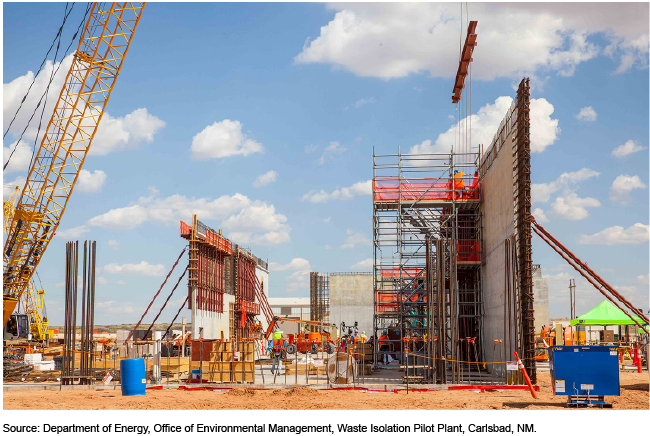 The Waste Isolation Pilot Plant (WIPP), near Carlsbad, New Mexico, is the nation’s only facility for disposal of certain defense-related nuclear waste. The Department of Energy (DOE) identified two root causes for cost increases and schedule delays in its project to install a new ventilation system at WIPP (see figure). The facility is currently operating at a reduced capacity because of ventilation issues in the underground waste disposal areas. The root causes DOE identified were (1) its contractor’s inexperience managing construction projects and (2) an inability to incentivize staff to work in Carlsbad. DOE also identified more specific problems with this ventilation project, and has taken corrective actions to address them. While some of these corrective actions may also help to address the root causes, the extent to which these actions will do so is unclear because DOE is not required to develop a corrective action plan for addressing the root causes and does not have a process to determine whether root causes have been sufficiently addressed. Without such a plan and process, DOE cannot ensure that root causes it identifies for cost increases and schedule delays in the WIPP ventilation project or other projects will not persist or recur.
The Waste Isolation Pilot Plant (WIPP), near Carlsbad, New Mexico, is the nation’s only facility for disposal of certain defense-related nuclear waste. The Department of Energy (DOE) identified two root causes for cost increases and schedule delays in its project to install a new ventilation system at WIPP (see figure). The facility is currently operating at a reduced capacity because of ventilation issues in the underground waste disposal areas. The root causes DOE identified were (1) its contractor’s inexperience managing construction projects and (2) an inability to incentivize staff to work in Carlsbad. DOE also identified more specific problems with this ventilation project, and has taken corrective actions to address them. While some of these corrective actions may also help to address the root causes, the extent to which these actions will do so is unclear because DOE is not required to develop a corrective action plan for addressing the root causes and does not have a process to determine whether root causes have been sufficiently addressed. Without such a plan and process, DOE cannot ensure that root causes it identifies for cost increases and schedule delays in the WIPP ventilation project or other projects will not persist or recur.
I’m Worried About Ukraine, but it’s Not What You Think
“In the end, it is situations like the war in Ukraine that demonstrate exactly why we need to find ways to reduce and ultimately eliminate nuclear weapons.” – Dr. Tara Drozdenko of the Union of Concerned Scientists
By Tara Drozdenko, Director, Global Security Program | March 15, 2022 allthingsnuclear.org
As someone who works on nuclear weapons policy for a living, I’ve been getting questions from family and friends about the war in Ukraine and the risk of nuclear use. My colleagues are getting similar questions. Most of these questions boil down to, “Should we be worried?” or “How worried should I be?”
I think concern is a healthy response to this conflict. Russian President Vladimir Putin has issued veiled threats of nuclear use and neighboring Belarus has paved the way to host nuclear weapons on its territory. Things are tense. And if NATO countries were somehow pulled into the conflict—even by accident—there is some chance this war could turn nuclear. So far, the US and other NATO countries have been very careful that there not be any misunderstandings, including cancelling a planned test launch of a Minute Man III missile.
Why New Technology Is Making Nuclear Arms Control Harder
“The US, China, and Russia are locked in a high-tech race to perfect new nuclear capabilities, rendering some Cold War safeguards obsolete.”
BY PATRICK TUCKER | Defense One March 14, 2022 defenseone.com
The risks associated with nuclear weapons are rising once again, the heads of three U.S. intelligence agencies told lawmakers last week, as Russia’s brutal invasion of Ukraine intensified.
It wasn’t supposed to be this way.
At the end of the Cold War, President George H.W. Bush boasted that the United States could now reduce its nuclear forces. But today’s arsenals—and global politics—are much different than in 1991. U.S. leaders face threatening dictatorships in Moscow, Beijing, Tehran, and Pyongyang, all racing to create new nuclear bombs and ways to deliver them. Technology, it turns out, is making arms control harder, and that’s forcing a big rethink about nuclear deterrence.
Fukushima: 11 Years Later
There is no guarantee that nuclear reactors will ever be designed, built and operated 100% correctly, forever. Mistakes do occur and the designers of reactors at Fukushima in Japan did not anticipate that on March 11, 2011 a tsunami generated by an earthquake would disable the backup systems that were supposed to stabilize the reactor after the earthquake. According to UBS AG, the Fukushima I nuclear accidents have cast doubt on whether even an advanced economy like Japan can master nuclear safety.
The current fighting in Ukraine does not help quell any fears of the massive risks of nuclear power, and in fact comparisons have been made between the situation there and Fukushima 11 years ago: “While I don’t think the plant would blow up, it would be close-in contamination to the local area like Fukushima was,” — Murray Jenne, professor of crisis response at West Texas A&M University in Canyon, Texas and a former U.S. Navy nuclear power propulsion officer. USA TODAY
11 years on, Fukushima morass still poses danger
By KARL WILSON | March 12, 2022 CHINA DAILY
On March 11, 2011, the meltdown of three nuclear reactors at the Fukushima Daiichi nuclear power plant in Japan became the world’s second-worst nuclear disaster after the plant was hit by a tsunami following a strong earthquake.
The International Atomic Energy Agency classified it as a Level 7 nuclear accident, which means it had widespread health and environmental impacts. The world’s only other Level 7 accident was at Chernobyl in Ukraine, then part of the Soviet Union, on April 26, 1986.
‘Limited’ Tactical Nuclear Weapons Would Be Catastrophic
Russia’s invasion of Ukraine shows the limits of nuclear deterrence
“Nuclear deterrence comes with tremendous risks and enormous costs. The arguments in favor of deterrence, although sometimes convincing, are not always true. We must acknowledge that nuclear deterrence could fail. That’s why, despite the trillions of dollars spent on nuclear arsenals, no one sleeps soundly under a nuclear umbrella—especially during a crisis such as Russia’s invasion of Ukraine.”
By Nina Tannenwald | March 10, 2022 scientificamerican.com
Since Russia invaded Ukraine on February 24, Russian President Vladimir Putin has given orders to increase the alert level of Russia’s nuclear forces and has made veiled nuclear threats. The blatant aggression against Ukraine has shocked Europe and the world. The war is a tragedy for Ukraine. It also exposes the limits of the West’s reliance on nuclear deterrence.
View Recording of Recent PDA CNM Community Gathering: Abolishing Nuclear Weapons is a Moral Imperative
PDA CNM welcomed Archbishop John C. Wester, Archbishop of Santa Fe, and our own executive director of Nuclear Watch New Mexico, Jay Coghlan, to speak at their March 9, 2022 monthly gathering: “[Archbishop Wester’s] courage in speaking out against the proliferation of nuclear weapons inspires us at PDACNM to follow his example and continue the fight against this peril, especially given the threat of a possible imminent war between two nuclear powers.
Jay Coghlan, executive director of Nuclear Watch New Mexico, has worked successfully against radioactive incineration at the Los Alamos National Lab, and in Clean Air Act, Freedom of Information Act and National Environmental Policy Act lawsuits against the Department of Energy. He prompted a 2006 independent study that concluded plutonium pits last at least a century, refuting the NNSA’s assertion that we “need” new-design nuclear weapons and expanded plutonium pit production.”
Thank You to Everyone Who Attended the Progressive Democrats of America Central NM Chapter Monthly Community Gathering! Please stay tuned for a recording of the event.
Speakers:
Archbishop John C.Wester, Archbishop of Santa Fe
Jay Coghlan, NukeWatch NM
PDACNM welcomed Archbishop John C. Wester, Archbishop of Santa Fe to their monthly gathering. His courage in speaking out against the proliferation of nuclear weapons inspired PDACNM to follow his example and continue the fight against this peril, especially given the threat of a possible imminent war between two nuclear powers.
Why We Are in a New Nuclear Arms Race and What You Can Do to Stop It
Jay Coghlan, executive director of Nuclear Watch New Mexico, has worked successfully against radioactive incineration at the Los Alamos National Lab, and in Clean Air Act, Freedom of Information Act and National Environmental Policy Act lawsuits against the Department of Energy. He prompted a 2006 independent study that concluded plutonium pits last at least a century, refuting the NNSA’s assertion that we “need” new-design nuclear weapons and expanded plutonium pit production.
Jay described how the new nuclear arms race is more dangerous than the first one. How it might lead to a nuclear hot war over Ukraine. And how devastating a nuclear war would be for everyone, including us.
Two more radioactive releases reported at LANL
A lab critic said he’s concerned about flaws in worker training, equipment and inspections contributing to glove box breaches as LANL gears up for producing plutonium pits for warhead triggers.
“As things ramp up, we’re bound to have more problems,” said Jay Coghlan, executive director of Nuclear Watch New Mexico.
By Scott Wyland swyland@sfnewmexican.com | March 8, 2022 santafenewmexican.com
Los Alamos National Laboratory had two additional breaches of a sealed radioactive-material compartment known as a glove box in January, bringing the total to three in one month, according to a government watchdog.
One employee damaged a glove attached to a sealed compartment while manually moving material with a disabled trolley through the enclosed space, causing enough of a release to contaminate the person’s face.
Confirmation that SRS Plutonium was taken to DOE’s Pantex Site in Texas
The Defense Nuclear Facilities Safety Board (DNFSB), which conducts oversight of DOE projects, has confirmed that plutonium from SRS was taken to the Pantex site in Texas, for storage. Sounds like it’s being stored in bunkers where plutonium pits (from nuclear weapons) are stored. TOM CLEMENTS SRS Watch | March 8, 2022 srswatch.org
TOM CLEMENTS SRS Watch | March 8, 2022 srswatch.org
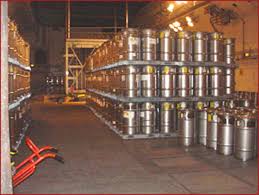
It is unclear what the fate of this plutonium will be, which was removed from SRS due to legal requirements to do so. the amount that went to Pantex is likely 500 kilograms (0.5 metric tons). 3 kg is enough for a pit in a nuclear weapon.
Will the Pu be shipped for a nuclear weapons use or will it be processed into oxide (if DOE moves the ARIES plutonium oxide conversion process from Los Alamos National Lab to Pantex)? SRS Watch has a Freedom of Information Act request in to DOE concerning the legally required analysis of moving ARIES to Pantex. As usual, as the secretary of energy isn’t doing her job or paying attention to the public, that request languishes.
‘More than 1,000’ New Mexicans call State to oppose plutonium plan at nuclear waste site
PRESS CONFERENCE MAR. 1, 2022 - NEW MEXICANS SUPPORT GOVERNOR ACTING TO STOP WIPP EXPANSION
By Adrian Hedden Carlsbad Current-Argus March 4, 2022 currentargus.com
“New Mexico agreed to host WIPP after carefully crafting agreements that limit what the federal government can do with it. It was afraid that this very thing would happen, and DOE didn’t disappoint,” she said Tuesday during a press conference in Santa Fe.
“WIPP’s mission can only be changed if the DOE breaks every legal agreement that it made with New Mexico in order to get it to host the WIPP site in the first place.”
Also concerning, Weehler said, was the transportation plan to ultimately bring the plutonium to WIPP.
Mostly originating at the Pantex Plant near Amarillo, Texas, the waste would first travel to Los Alamos National Laboratory (LAN) in northern New Mexico via truck for processing.
Nuclear News Archives – 2021
NM Archbishop Can’t Stay Silent on LANL’s Arms Work
“I believe strongly that Pope Francis is right. For peace to flourish, we have to lay down weapons,” [Archbishop of Santa Fe John Wester] said, referring to Pope Francis’ statement that even the possession of atomic weapons of war was immoral.
“And any continuing development of nuclear weapons, and refining them, is going in the wrong direction.”
BY: T.S. Last / Journal North
Published: Wednesday, May 26th, 2021
Copyright © 2021 Albuquerque Journal
SANTA FE – Archbishop of Santa Fe John Wester praises much of the work being done at Los Alamos National Laboratory. The lab’s expertise greatly contributes to developments in bioscience, computer science, engineering, medicine and modeling that helped the nation navigate through the COVID-19 pandemic.
But it also builds bombs – the kind capable of killing massive numbers of people. And that’s not an easy thing for him – and some Catholics working for the lab – to reconcile.
Wester says that as the archdiocese within which the lab operates, the Santa Fe Archdiocese has a “moral responsibility” to facilitate discussion about the lab’s national security mission, most of which is dedicated to weapons production.
“I believe strongly that Pope Francis is right. For peace to flourish, we have to lay down weapons,” he said, referring to Pope Francis’ statement that even the possession of atomic weapons of war was immoral. “And any continuing development of nuclear weapons, and refining them, is going in the wrong direction.”
Wester’s remarks come just as Los Alamos National Laboratory is expanding its national security mission through production of plutonium pits, the cores of nuclear warheads that detonate the bombs. As a direct result of the project, the lab has begun expanding into Santa Fe, the city named for St. Francis of Assisi.
The pope’s 2019 statement was the harshest condemnation of weapons of mass destruction to date from the church. He could have been speaking about LANL and its new mission to manufacture plutonium pits when he said, “In a world where millions of children and families live in inhumane conditions, the money that is squandered, and the fortunes made in the manufacture, upgrading, maintenance and sale of ever more destructive weapons, are an affront crying out to heaven.”
Meet the Senate nuke caucus, busting the budget and making the world less safe
These lawmakers represent states with a direct interest in pouring billions into modernizing and building new weapons.
By: Marcy Winograd and Medea Benjamin | responsiblestatecraft.org
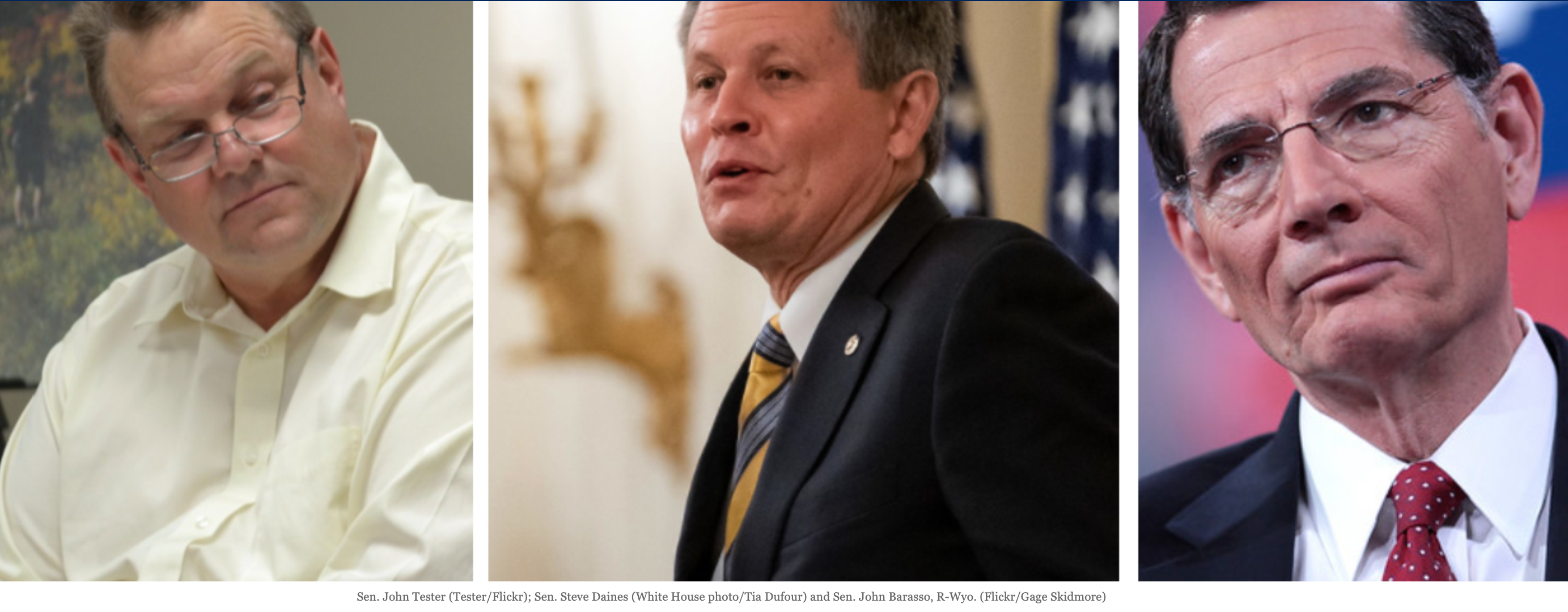
Democrats might control the legislative and executive branches of the U.S. government right now, but a small Republican-dominated Intercontinental Ballistic Missile (ICBM) Coalition exercises outsized influence in a frightening campaign for nuclear rearmament.
The coalition, comprising six senators from states that house, develop, or test underground land-based nuclear weapons, is pushing a wasteful and dangerous $1.7 trillion, decades-long plan to produce new nuclear weapons, some with warheads 20 times more powerful than the atomic bomb dropped on Hiroshima.
While the 1980s witnessed the nuclear freeze and a mass movement to demand nuclear disarmament between the U.S. and Soviet Union, the 1990s gave birth to the missile caucus, the Congressional engine careening the U.S. into a renewed nuclear arms race.
Santa Fe to exit Regional Coalition of LANL Communities
THANK YOU to everyone who contacted city officials in support of overturning the RCLC for good!
By: Sean P. Thomas sthomas@sfnewmexican.com | Santa Fe New Mexican
The Santa Fe City Council unanimously approved a resolution Wednesday to pull the city from the Regional Coalition of LANL Communities, a consortium of local and tribal governments with economic ties to Los Alamos National Laboratory.
Santa Fe’s resolution requests that the coalition return dues paid by the city and instructs city officials to begin exploring other ways to lobby the laboratory for economic opportunities and environmental cleanup.
The coalition’s board voted Friday to begin winding down the entity and close out debts, before paying back members their 2021 dues.
“I think it’s important to state while this process is going on that we approved this resolution withdrawing the city of Santa Fe from the RCLC,” said Councilor Renee Villarreal.
The coalition was formed in 2011 to advocate for sitewide cleanup and economic opportunities at the laboratory, but critics have said the coalition no longer achieves its original purpose.
Surprise! Upgrading America’s Nuclear Arsenal Will Be Stupefyingly Expensive
The cost jumped $140 billion in just 2 years. Here’s why.
BY: KYLE MIZOKAMI | popularmechanics.com
- The Congressional Budget Office (CBO) now says the cost of updating the U.S.’s nuclear weapons is $140 billion more than it estimated just 2 years ago.
- The increase is largely due to inflation and the inclusion of new, expensive projects the CBO didn’t cover 2 years ago.
- The new estimate comes as a proposal in Congress seeks to trim the nuclear budget.
The nonpartisan Congressional Budget Office’s (CBO) estimate of nuclear weapon expenditures over the next decade has jumped a staggering $140 billion in just 2 years.
The estimate, which the agency provided to Congress to give an idea of how much it will take to build new missiles, ships, and planes, as well as revamp America’s vast nuclear infrastructure, comes as key members of the legislature are pushing to cut nuclear weapons spending over the next 10 years.
Estimated Cost of US Nuclear Modernization Jumps 28 Percent
The Congressional Budget Office’s latest estimate puts the price tag at $634 billion as some lawmakers try to bring it back down.
BY PATRICK TUCKER | defenseone.com May 24, 2021
The estimated cost of replacing America’s nuclear bombers, missile submarines, and ICBMs just jumped again—from $315 billion in 2015 to $494 billion in 2019 and now to $634 billion, a 28 percent increase, according to a Congressional Budget Office report released Monday.
The report identifies a $140 billion increase in the cost of nuclear delivery systems and weapons, such as ICBMs, as the largest contributor to the jump. “Projected costs for command, control, communications, and early-warning systems have also increased substantially,” it says, adding that if full costs of B-52 and B-21 bombers were included, “the total costs of nuclear forces, with cost growth, would be $711 billion.”
It’s the second time CBO has raised their projections for the costs of modernizing U.S. nuclear forces.
Some lawmakers have balked at what they perceive as the steep price tag for modernizing the U.S. nuclear weapons arsenal. Sen. Ed Markey, D-Mass., has called for a debate specifically on the high cost of replacing the intercontinental leg of the triad. On Monday, he unveiled a new bill, dubbed the SANE act, to cut $73 billion from the U.S. nuclear weapons budget.
Department of Energy seeks to modify N.M. plant’s nuclear waste permit
Dragging out WIPP’s operations decades past the original 20-year agreement violates the social contract made with New Mexicans, said Scott Kovac, research and operations director for the nonprofit Nuclear Watch New Mexico.
WIPP is being equipped to take the waste that will be generated from production of plutonium pits for nuclear warheads, Kovac said.
“It [WIPP] was never really suppose to do that,” Kovac said.
Scott Wyland swyland@sfnewmexican.com | Santa Fe New Mexican May 17, 2021
Federal officials say a new air shaft is needed at the nuclear waste disposal site in Southern New Mexico to keep workers safe and run more efficiently.
Watch this video from the Stop Forever WIPP coalition: “When is a shaft more than a shaft?” dispelling the idea that an expansion of WIPP will mostly impact the South Eastern part of New Mexico; The new waste targeted for WIPP would be re-processed at Los Alamos. It also dispels the idea that targeting NM for waste disposal has nothing to do with our minority majority population.
The U.S. Government Hides Some Of Its Darkest Secrets At The Department Of Energy
The Department of Energy controls many ‘black projects’ that live outside of the limelight that is intrinsic to the DoD and the intel community.
BY BRETT TINGLEY | thedrive.com May 13, 2021
When it comes to discussions of government secrecy, much of the conversation tends to revolve around the Department of Defense (DOD) or the U.S. Intelligence Community (IC). After all, the U.S. military develops many of the United States’ most sensitive weapon systems used to defend America and project its power globally, and the IC gathers and analyzes sensitive information on foreign threats and external national security matters. Each year, the budget requests from the U.S. military are packed with classified and Special Access Programs, or SAPs, sporting vague code names, many of which never see the light of day. When we talk of the “black world,” most often that conversation centers around these programs and technologies suspected to be housed deep within the classified ends of the Pentagon and its various service branches.
Often left out of this conversation is the fact that there is a wholly separate cabinet-level department of the U.S. government that is arguably even more opaque in terms of secrecy and oversight than the Department of Defense. Over the last few years, allegations of secret, exotic technologies have reinvigorated claims that the DOD may be concealing scientific breakthroughs from the American public. However, if the U.S. government, or some faction within it, hypothetically came across a groundbreaking development in energy production or applied physics, a very strong case could be made that such a revolution would likely be housed deep within the Department of Energy (DOE) rather than DOD.
County Commission votes to exit Regional Coalition of LANL Communities
The exodus from the Regional Coalition of LANL Communities continued Tuesday.
“Jay Coghlan, executive director of Nuclear Watch New Mexico, agreed, adding he believed the coalition effectively stood in the way of site cleanup by supporting a 2016 consent order.”
By Sean P. Thomas sthomas@sfnewmexican.com | Santa Fe New Mexican
The Santa Fe County Commission voted unanimously to ditch the coalition after some commissioners voiced concerns that the body was no longer the proper vehicle to advocate for site cleanup and mission diversification at Los Alamos National Laboratory.
“The mission of the RCLC and the attempt of the collaboration is admirable,” said commission Chairman Henry Roybal, who stepped down as chairman of the Regional Coalition of Los Alamos National Laboratory Communities this year. “However with the progress, it does not seem like this vehicle is the best avenue to express this collaborative voice. There are so many things that just aren’t where they need to be.”
The coalition was formed in 2011 and consists of local and tribal governments. It was created to provide local governments an opportunity to advocate for jobs, environmental cleanup and other priorities at the laboratory.
Each member organization pays annual dues to be a member, with Santa Fe County at $10,000.
LANL’s move to Santa Fe means jobs, and controversy
By: Editorials / ABQJournal
Santa Fe’s relationship with Los Alamos National Laboratory has been rocky for years. The City Council, with some regularity, has passed resolutions of concern about the nuclear weapons lab’s environmental impact and radioactive materials safety lapses, the production of weapons parts in Los Alamos and the proliferation of nuclear weapons in general.
ILHAN OMAR SIGNS ICAN PLEDGE

April 30, 2021: Representative Ilhan Omar today submitted her signed ICAN Pledge to ICAN, becoming the eleventh member of the US Congress to sign the Pledge. Rep. Omar represents Minnesota’s 5th Congressional District in the US House of Representatives. Rep Omar also co-sponsor the H.R.2850 Nuclear Abolition and Economic Conversion Act of 2021 that Representative Eleanor Holmes Norton reintroduced on April 26, 2021.
Regional Coalition Of LANL Communities Struggles To Survive
Jay Coghlan, executive director of Nuclear Watch New Mexico complained that the RCLC main selling point was to lobby for mission diversification and accelerated cleanup and said he would argue that the Coalition has been a spectacular failure on both counts.
“When the Coalition was founded in 2011, LANL’s nuclear weapons budget was $1.9 billion. A decade later that budget is $2.9 billion and the total spending on core nuclear weapons research and production has risen year after year to where now it’s a full 70 percent of all funding and all of the remaining 30 percent either directly or indirectly supports those nuclear weapons,” Coghlan said.
By: MAIRE O’NEILL maire@losalamosreporter.com | losalamosreporter.com May 3, 2021
The next couple of months may determine the demise of the Regional Coalition of LANL Communities. The City of Santa Fe opted last month not to approve the RCLC’s amended and restated joint powers agreement which has been hanging out there waiting for the City’s decision since March 2019. The City is slated to decide whether to withdraw completely from the RCLC later this month.
The Taos County Commission is slated to decide Tuesday whether it wishes to continue as a member and Santa Fe County Commissioners have the same decision to make at their May 11 meeting.
Los Alamos County Council is expected to discuss its RCLC status in June which will be the first time the Council will have had an agenda item on the RCLC since it approved the amended JPA in July of 2020. The discussion is at the request of Council Vice Chair James Robinson. Councilor David Izraelevitz, who serves as RCLC treasurer, has been a strong advocate of the RCLC and has recently addressed several meetings of members of the Santa Fe City Council at the behest of Councilor Michael Garcia to encourage them to approve the amended JPA. City of Espanola Mayor Javier Sanchez also attended a Santa Fe City Council meeting to advocate and answer questions.
NNSA approves Critical Decision 1 for Los Alamos Plutonium Pit Production Project
“Recommended approach to producing 30 plutonium pits per year identified”
CD-1 approval marks the completion of the project definition phase and the conceptual design as part of DOE’s Order 413.3B process for the acquisition of capital assets. NNSA identified its recommended approach to produce at least 30 plutonium pits per year to meet national security needs.
The CD-1 cost estimate for LAP4 is $2.7-$3.9 billion, with an overall project completion range of 2027-2028. Critical equipment is scheduled to be installed in time to achieve the 30 pits per year production capacity in 2026. The CD-1 cost estimate and project completion date ranges are preliminary estimates that will be refined as the project conceptual design is matured to the 90% design level required to achieve CD-2 (approval of the performance baseline). Consistent with industry best practices and DOE policy, NNSA will set the performance cost and schedule baseline at CD-2, which is expected in 2023.
NNSA leadership and LANL will continue to review this project to improve the fidelity of the current price estimate and schedule.
###
Los Alamos lab sees two mishaps in a week
The water spill should be a reminder that the plutonium facility’s work is done by people, and people make mistakes, said Scott Kovac, research and operations director for the nonprofit Nuclear Watch New Mexico.
“Pit production will place a real time-pressure crunch on the workers and lead to more accidents,” Kovac said.
“It should lead us to consider the consequences if someone left a plutonium furnace on or something that could endanger the public…these kinds of missteps are likely to increase as the lab ramps up production of plutonium pits used to trigger nuclear warheads. Current plans call for the lab to make 30 of the nuclear bomb cores a year by 2026,”
By: Scott Wyland | santafenewmexican.com April 26, 2021
Los Alamos National Laboratory had two mishaps in one week: a glove box breach that contaminated workers’ protective equipment and a spill of 1,800 gallons of water into a vault corridor after an employee left a valve open.
The incidents were the latest in a series of accidents in recent months at the lab, as reported by the Defense Nuclear Facilities Safety Board.
In the board’s most recent report, an alarm sounded March 29 when a worker tore a protective glove attached to a sealed compartment known as a glove box while handling a piece of plutonium.
Continue reading
Sleepwalking into Nuclear War?
“People like to think that every nuclear-armed country has only one “button”, with which a president could consciously choose to start a nuclear war, after careful deliberation. But in fact there are thousands of people in the world controlling different parts of different arsenals who could independently initiate a nuclear war.” – Caitlin Johnstone
JONATHAN POWER | indepthnews.net
LUND, Sweden (IDN) — Last week on Tuesday (April 20), US Strategic Command, the part of the military responsible for nuclear weaponry and its use, posted an official Tweet that read, “We must account for the possibility of conflict leading to conditions which could very rapidly drive an adversary to consider nuclear use as their least bad option”.
This came just as Russia was pulling back its large deployment of troops on Ukraine’s border which, in turn, was triggered in part by President Joseph Biden’s decision to ship for the first time sophisticated weapons to Ukraine.
The crisis has now passed but the lesson lingers. Arguably we are closer to war with Russia than at any time since the Cuban missile crisis of 1962 (which I wrote about last week, April 20).
CHERNOBYL: 35 YEAR ANNIVERSARY OF THE WORLD’S WORST NUCLEAR ACCIDENT
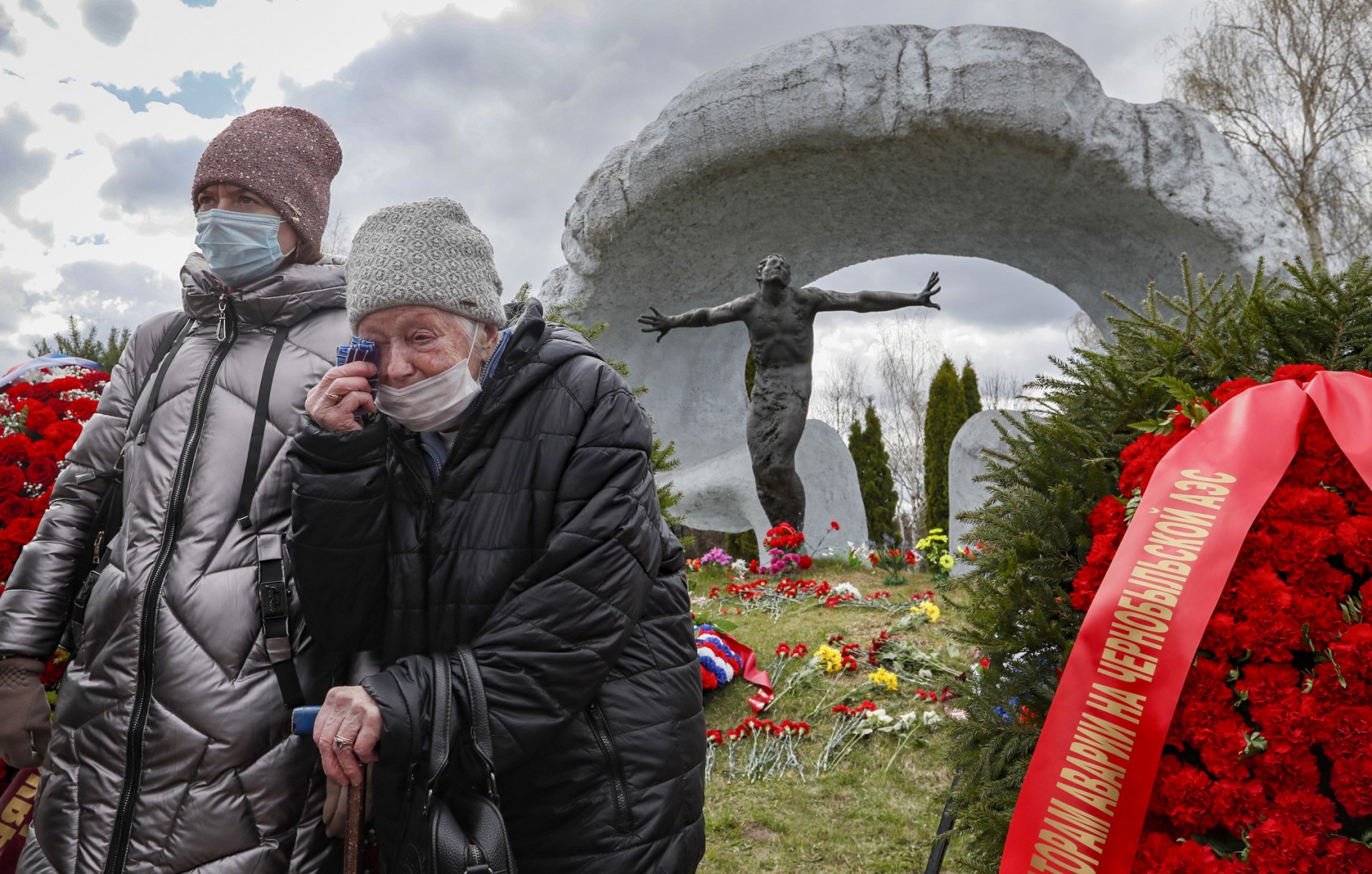
ON THIS DAY in 1986, workers ran a safety test at the Chernobyl Nuclear Power Plant in northern Ukraine. But the test went awry, starting a fire in a reactor and leading to one of the largest nuclear disasters in history. Smoke from the fire and a second explosion launched radioactive elements into the atmosphere, scattering them over the surrounding fields and towns.
Chernobyl is generally recognized as the worst nuclear accident on record, directly killing 31 people and causing widespread contamination in Eurasia. It’s estimated that thousands of people will eventually die earlier than they would have due to the cancers caused by their exposure.
Today, 35 years later, scientists are still uncovering the extent of the damage and starting to answer questions about the long-term legacy of radiation exposure on power plant workers, the people in the nearby community, and even their family members born years later.
READ: New studies highlight the possible impact of Chernobyl on genes
- Published on Science Daily, the studies—both conducted by the National Cancer Institute (NCI), a branch of the National Institute of Health (NIH)—sought to find what kind of changes the exposure to carcinogenic ionizing radiation had on those who came into contact with the explosion.
WIPP completes maintenance outage, intends to up shipments of nuclear waste post-pandemic
Reinhard Knerr, manager of the U.S. Department of Energy’s Carlsbad Field Office said WIPP will resume accepting shipments of low-level transuranic waste from DOE sites around the country and will continue to emplace the waste for final disposal in WIPP’s underground mine.
By: Adrian Hedden | currentargus.com April 26, 2021
Shipments and disposal of nuclear waste resumed at the Waste Isolation Pilot Plant after a two-month pause in the repository’s primary operations to allow personnel to complete several maintenance projects underground and on the surface.
WIPP completed 97 projects during the maintenance outage which ran from Feb. 15 to April 15, upgrading infrastructure throughout the facility.
The work involved mine operations, waste handling, hoisting, ground control, safety and engineering, and the break included a site-wide power outage to allow electrical work to be completed safely.
The Nuclear Bomb Is Ready: In Italy Soon. The B61-12 has a Nuclear Warhead with 4 “Selectable Power Options”
“It has been officially announced that the new nuclear bomb series production will begin in the fiscal year 2022, beginning October 1, 2021. It is unknown the number of B61-12 bombs that the US will deploy in Italy, Germany, Belgium and Holland to replace the B61s, whose actual number is secret. Satellite photos show renovations that have been carried out at Aviano and Ghedi bases in preparation for the new nuclear bombs’ arrival, the US Air Force F-35A, and Italian Air Force F-35A under US command will be armed with these bombs.”
BY: Manlio Dinucci | globalresearch.ca April 24, 2021
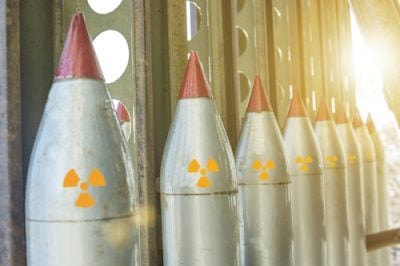
First published on December 3, 2020
***
A video was released on November 23 2020 by Sandia National Laboratories that shows a US F-35A fighter flying at supersonic speed 3000 meters above sea level, launching a B61-12 nuclear bomb (non-nuclear warhead equipped). The bomb did not fall vertically but glided until the tail section rocket ignition gave a rotational motion and the B61-12 (satellite-guided system) headed for the target and hit 42 seconds after launch. The test was carried out on August 25 at the Tonopah shooting range in the Nevada desert.
An official statement confirmed its full success: it was a real nuclear attack, proof that the fighter carried out at supersonic speed and in stealth attitude (with nuclear bombs placed in its internal hold) has the capability to penetrate through enemy defenses.
The B61-12 has a nuclear warhead with four selectable power options at launch depending on the target to hit. It has the ability to penetrate underground, exploding deep to destroy command center bunkers and other underground structures. The Pentagon’s program foresees the construction of about five hundred B61-12 with an estimated cost of roughly 10 billion dollars (so each bomb will cost double what it would cost if it were built entirely of gold).
Minorities threatened by atomic weapons plants in S. Carolina and NM, groups say
“As construction problems mounted, costs rose, and schedules slipped, (and) defendants hid the true status of the project,” the indictment said.
“…Delays and cost overruns — hidden by SCANA officials from the public and state regulators — eventually doomed the effort, making it one of the largest business failures in South Carolina history.”
BY SAMMY FRETWELL | April 22, 2021 thestate.com
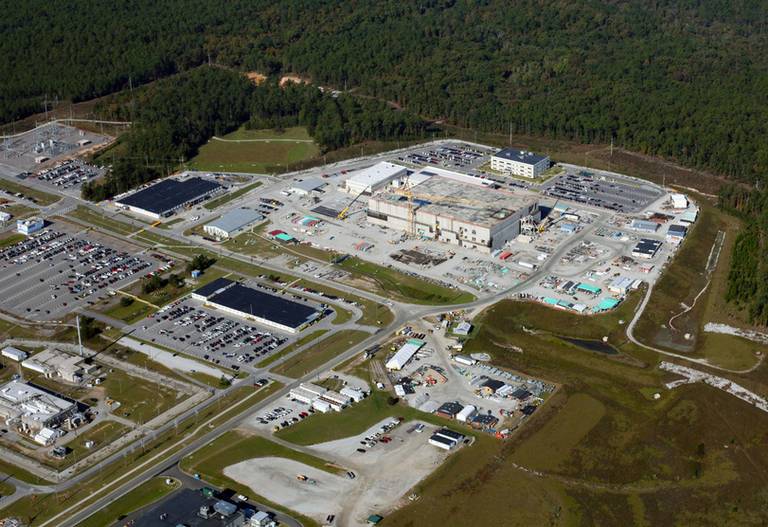
A coalition of environmental groups from the southern and western United States is threatening to sue the federal government over plans for plutonium pit factories in South Carolina and New Mexico that would produce components for additional atomic weapons.
In a letter Tuesday to U.S. Energy Secretary Jennifer Granholm, a non-profit law firm said the government should prepare an extensive environmental study before deciding to establish pit production factories at the Savannah River Site near Aiken and the Los Alamos site near Santa Fe, N.M.
African American and Native American communities have been hurt by past activities at the nuclear sites, and President Joe Biden’s administration should consider how the production factories would add to that burden, according to the South Carolina Environmental Law Project, a non-profit legal service in South Carolina.
Nine environmental groups, including SRS Watch, the Gullah Geechee Sea Island Coalition, Tri-Valley Cares of California and Nuclear Watch New Mexico, are among those seeking more study.
The law project’s letter also was sent to the National Nuclear Security Administration, a division of the energy department.
“The plans of DOE and NNSA to expand this production program will saddle the already-burdened communities represented by these groups with a significant amount of nuclear waste and pollution,’’ the letter from lawyer Leslie Lenhardt said.
Her letter said the pit production efforts are in “complete contravention’’ to an executive order by President Biden that federal agencies weigh the impact their policies and plans have on disadvantaged communities.
Groups Notify Biden Admin of Impending Lawsuit Over Nuclear Bomb Core Plans
Multi-state coalition says DOE’s plans to massively expand plutonium pit production violate a major environmental law and constitutes an environmental injustice.
Jay Coghlan of Nuclear Watch New Mexico commented, “Instead of maintaining the safety and reliability of the existing nuclear weapons stockpile, NNSA may actually undermine it because all future pit production is for speculative new-design nuclear weapons. This is a colossal and unnecessary waste of taxpayers’ money on top of already wasted taxpayers’ money.”
CHARLESTON, S.C. — A coalition of public interest organizations notified (PDF below) the U.S. Department of Energy (DOE) and the National Nuclear Security Administration (NNSA) urging a comprehensive review of plans to vastly ramp up production of nuclear bomb cores at the Los Alamos National Lab in New Mexico and the Savannah River Site in South Carolina.
In Tuesday’s letter to department officials, the groups say this lack of review violates the National Environmental Policy Act (NEPA) and would saddle already-burdened communities nearby the two DOE sites with significant quantities of toxic and radioactive waste, contravening President Biden’s executive order of making environmental justice a part of the mission of every agency.
Sparks flying from nuclear waste barrel prompt investigation
Flawed packing of radioactive waste caused sparks to fly from a container at Los Alamos National Laboratory, prompting evacuation of the work area and later the underground disposal site near Carlsbad where two similarly packed canisters were stored.
By: Scott Wyland | santafenewmexican.com April 15, 2021
The sparking caused no injuries, damage or radiation to be released, according to a letter the lab wrote to the New Mexico Environment Department.
But any combustion involving transuranic nuclear waste is deemed dangerous and calls up memories of the 2014 incident in which a ruptured container from Los Alamos closed the Waste Isolation Pilot Plant in Southern New Mexico for three years and cost almost $2 billion to clean up.
Environment, Public Health On The Way To Better Protection As Environment Department Receives Budget Increase
“After a decade of budget cuts, the New Mexico Environment Department’s (NMED) base budget will increase by 21.3% for the upcoming state fiscal year starting July 1, 2021. The additional $2.8 million will be a recurring increase to NMED’s operating budget. NMED’s overall operating budget for the upcoming fiscal year is approximately $93.4 million.”
NMED NEWS | LOS ALAMOS REPORTER April 14, 2021
“Starting in July, the New Mexico Environment Department will expand its efforts to safeguard communities and our environment,” said NMED Cabinet Secretary James Kenney. “Budget is policy and this is a clear investment in the health of New Mexicans and their environment.”
NMED’s budget is a combination of state general fund, federal funding, and revenues collected for various permits and licenses. Starting July 1, 2021, the general fund portion of NMED’s budget will increase from $13.1 million to $15.9 million – an increase of $2.8 million. The remainder of NMED’s budget is $77.5 million (federal funding and revenues collected for permits/licenses).
Offline Iowa Nuclear Plant Eyed as Site of Solar Project
CEDAR RAPIDS, Iowa (AP) — A decommissioned eastern Iowa nuclear plant could become the site of a new massive solar energy project.
NextEra Energy of Florida on Tuesday laid out plans in a meeting with nearby landowners to build a solar farm near the now-idle Duane Arnold Energy Center in Palo, The Gazette of Cedar Rapids reported.
The company said the project could bring in a $700 million capital investment and about 300 construction jobs. The solar farm would stretch across 3,500 acres near the plant and would produce up to 690 megawatts of solar energy — more than the nuclear plant had generated.
“We’re also hoping to accompany that solar project with up to 60 megawatts of AC-coupled batteries,” project manager Kimberly Dickey said in the meeting. Battery storage allows a company to store energy for use during peak energy-use times.
Waste Isolation Pilot Plant aims to expand underground facility to hold nuclear waste
“WIPP is supposed to be limited. The state did not agree to 12 panels.”
By: Adrian Hedden | currentargus.com April 15, 2021
A plan to build two new areas to dispose of nuclear waste began taking shape at the Waste Isolation Pilot Plant after the U.S. Department of Energy published a report on the feasibility of adding an 11th and 12th waste panel to the underground nuclear waste repository.
Japan To Dump Wastewater From Wrecked Fukushima Nuclear Plant Into Pacific Ocean
Japan’s government announced a decision to begin dumping more than a million tons of treated but still radioactive wastewater from the crippled Fukushima nuclear plant into the Pacific Ocean in two years.
Anthony Kuhn | npr.org April 13, 2021
The plant was severely damaged in a 2011 magnitude 9.0 quake and tsunami that left about 20,000 people in northeast Japan dead or missing.
Despite Tokyo’s assurances that discharging wastewater will not pose a threat to people or the environment, the decision was roundly criticized by the local fishing community, environmental groups and Japan’s neighbors. Within hours of the announcement, protesters rallied outside government offices in Tokyo and Fukushima.
Fukushima Wastewater Will Be Released Into the Ocean, Japan Says
Beyond Nuclear | beyondnuclear.org April 13, 2021
The government says the plan is the best way to dispose of water used to prevent the ruined nuclear plant’s damaged reactor cores from melting.
As reported by the New York Times.
The New York Times also ran a companion piece, focused on the official international protest of the ocean dumping, as by the neighboring governments of South Korea, China, and Taiwan.
The Washington Post has also reported on this story.
Thom Hartmann interviewed Beyond Nuclear’s Kevin Kamps on his national radio show (“Fukushima Nuclear Fish Coming to Your Plate, Happy?”). Here is the write up:
More nuclear waste is about to be released into the Pacific Ocean from Fukushima. Where it will be absorbed by plants, eaten by small fish, who are eaten by bigger fish, and concentrated through a process called “bioaccumulation.” Pretty soon those fish end up on your plate… Looking forward to a swim off the west coast? Enjoying your fish?
Here is the link to the recording of the interview.
[Corrections: The actual volume of radioactive wastewater to be dumped in the ocean is currently enough to fill around 500 Olympic-sized swimming pools; the dumping is not set to begin until a couple years from now, not before the Tokyo Olympics.]
Environmental Racism, Environmental Justice
“When uranium mining occurred in white communities, the waste it produced was removed from the proximity of the residents. This level of clean-up did not take place when uranium mining occurred close to low-income communities of color”
By: Ruby Stigers| snakeriveralliance.org April 10, 2021
Those living near Nuclear Power Plants (NPP’s) face extreme health risks. Blood, thyroid, breast, and other forms of cancer have the potential to form due to the various types of radioactive emissions that escape the NPP’s through the air, water, and soil.
The World Nuclear Association and The Nuclear Regulatory Commission (NRC) claim that exposure to low-level radiation is undetectable and not unsafe, yet countless studies confirm the danger of the radiation that occurs during normal operation at an NPP. According to Dean Kyne and Bob Bolin, Children are especially vulnerable to this exposure.
Toxic incinerators, uranium mines, atomic reactors, and other nuclear dumping sites are generally located on cheap land where there are limited resources and little organized opposition (Jantz, p. 249). Unfortunately, because of this, they are often located in Black, Indigenous, and low-income communities that suffer the devastating consequences of improperly handled nuclear waste and pollution.
DOE Planning to Increase Down-Blended Plutonium Shipments to Waste Isolation Pilot Plant
Savannah River Site is the third largest shipper of waste to WIPP, with 1,679 as of April 3, per the latest records from WIPP.
By: Adrian Hedden | currentargus.com April 7, 2021
Federal nuclear waste managers are planning to ramp up shipments of plutonium from a site in South Carolina for final disposal at the Waste Isolation Pilot Plant in southeast New Mexico.
The U.S. Department of Energy’s (DOE) Office of Environmental Management (EM) began preparing equipment at the Savannah River Site (SRS) in Aiken, South Carolina used to package and inspect drums of the waste before shipping to WIPP where it will be permanently disposed of in the repository’s underground salt formation.
The plutonium waste will be inspected to verify that it meets the criteria required for emplacement at WIPP, which is used to dispose of low-level transuranic (TRU) nuclear waste – mostly clothing items and equipment radiated during nuclear activities.
Scotland Reaches Green Landmark – Scotland generated 97.4% of its electricity demand from renewables last year
By: Juan Cole | scheerpost.com
In 2011, Scotland’s government, urged on by visionaries like Richard Dixon, set itself the ambitious goal to get 100% of its electricity from renewables by 2020. At that time, it only only got about a fourth from clean energy sources, and a lot of that was hydro.
The report card is in for 2020 and Scotland generated 97.4% of its electricity demand from renewables last year, just a whisker less than the 100% goal.
Scotland will host the COP26 climate summit in Glasgow in a few months, and is well placed to assert climate leadership.
Scotland no longer has a coal plant, and its one natural gas plant is under-utilized and seems likely to close in a few years.
DOE’s NNSA Reveals it’s Out of Money. Flat Broke. Busted. Nothing Left for Beneficial Nuclear Non-Proliferation Program to Convert Reactor from Weapon-Grade Uranium Fuel
By: SRS Watch | srswatch.com
The U.S. Department of Energy’s National Nuclear Security Administration (NNSA) has revealed that it has spent all of our money. Busted flat. Nothing left. Nada. Zilch. Nichts.
Well, that’s what it seems like at the NNSA has notified GE Hitachi Nuclear Energy that there are no funds available to convert a test reactor in Vallecitos, California from weapon-grade uranium (highly enriched uranium, HEU) to low-enriched uranium (LEU), as part of an nuclear non-proliferation effort.
On March 25, 2021, NNSA told GE Hitac hi Nuclear Energy: “you are hereby notified that Department of Energy funding will not be available in fiscal year 2021 to complete the conversion of NTR to LEU fuel.” And GE subsequently told the U.S. Nuclear Regulatory Commission that ” DOE funding is not currently available for conversion of the NTR fuel.”
See: “GE Hitachi Nuclear Energy Americas, LLC – Annual Statement of Non-availability of Federal Government Funding for Conversion from HEU to LEU for VNC Nuclear Test Reactor (NTR) at https://adamswebsearch2.nrc.gov/webSearch2/main.jsp?AccessionNumber=ML21084A808
BUT WAIT! NNSA continues to front for boosters and contractors engaged in project to convert the abandoned plutonium fuel (MOX) plant at the Savannah River Site into the SRS Plutonium Bomb Plant (PBP) at a cost of $4.6 billion (add higher number if you wish) by 2030 (add any date you wish). So, there seems to be money available for projects dangerous to our national security – making plutonium pits for unneeded and provocative new nuclear weapons – but not a penny left to get HEU out of commerce. This confirms that the priorities of NNSA are totally screwed up and that it’s placing contractor enrichment and parochial politics above national security. Congress must make sure that the HEU conversion program is fully funded and that the Ground Based Strategic Deterrent (with W87-1 warhead) and the new SLBM (with W93 warhead) – the first new weapons to get new plutonium pits – are terminated and funded halted. As in nada, zilch, nothing.
The New Shaft Permit Modification Part 3: Your Comments and the May 17th Public Hearing
As demanded by organizations and individuals, the New Mexico Environment Department (NMED) has scheduled a public hearing on adding a New Utility Shaft to the WIPP permit. The hearing will start at noon on Monday, May 17, 2021. Hundreds of people commented on the proposed new shaft in 2019 and 2020, 97 percent of whom objected to WIPP expansion and the new shaft.
NMED allowed the Department of Energy (DOE) to bypass the public process and start digging the new shaft with just a Temporary Authorization. But after receiving so many public comments in 2020 against the new shaft and against the Temporary Authorization, NMED stopped the construction of the shaft until after the public hearing. Public comments do make a difference!
You can comment now on the proposed new WIPP shaft, which is part of DOE’s plan to expand WIPP and operate it forever, rather than developing new repositories. The plan violates existing limits set in federal law, state agreements, the WIPP Permit, and DOE’s decades-old social contract with New Mexicans.
Your comments and participation can help stop the new shaft and DOE’s WIPP expansion plan!

Santa Fe City Council rejects LANL coalition agreement
By: Sean P. Thomas, The Santa Fe New Mexican | sfnewmexican.com March 31, 2021
The Santa Fe City Council has rejected an amended joint powers agreement with the Regional Coalition of LANL Communities over concerns about the organization’s impact and one councilor’s plan to introduce a measure removing the city from the group.
“I don’t think we should just approve an updated JPA because we want to go along to get along,” said City Councilor Renee Villarreal, who noted she intends to propose the city end its affiliation with the coalition. “Some of my colleagues say we should have a seat at the table, but I think we should have it at the right table.”
The council voted 5-3 against the agreement, with Mayor Alan Webber and Councilors Carol Romero-Wirth and Jamie Cassutt-Sanchez voting in favor. City Councilor Michael Garcia, the city’s representative on the coalition, abstained.
Rejecting the agreement does not pull the city out of the organization.
Villarreal has been the loudest critic of the coalition, which was established in 2011 to give communities surrounding Los Alamos National Laboratory more of a voice in its job development and cleanup. She questioned in previous committee meetings how the city stood to benefit.
“Our values have not aligned,” Villarreal said. “I’m trying to understand changing the JPA, what does that change? How does our voice actually get heard since it hasn’t been heard the last 10 years?”
Trinity Downwinders: 75 Years And Waiting
Watch the Hearing with the House Judiciary Committee below, which occurred 3/24/21. Click HERE to visit the website. Click HERE to read the Santa Fe New Mexican article written about the hearing. See Hearing below:
‘Sparking’ nuclear waste drum at Los Alamos National Lab leads to evacuation at WIPP
“A sparking drum of nuclear waste at Los Alamos National Laboratory (LANL) led to a temporary evacuation of a section of the Waste Isolation Pilot Plant’s underground repository as officials investigated if any other drums of waste emplaced at WIPP posed a similar threat.”
By: Adrian Hedden, Carlsbad Current-Argus March 31, 2021
Investigators later found no one was hurt and no radiation was released, according to a March 12 letter from the lab to the New Mexico Environment Department (NMED) Hazardous Waste Bureau.
The lab reported it happened as workers packed a drum of low-level transuranic (TRU) waste on Feb. 26 for delivery and disposal at WIPP.
TRU waste is equipment, clothing materials and other items radiated during nuclear activities.
During the packing process, two high efficiency particulate air (HEPA) filters were placed into a drum, followed by a “metal waste item,” read the letter from the lab.
The item tore the bag containing the HEPA filters, and sparks were observed coming out of the container when the item contacted the filters.
People downwind of atomic blasts renew push for US payout
“Officials say the team at Sandia is working with researchers from Australia as well as particle-technology researchers who are building a second concentrating solar power facility in Saudi Arabia to test variants of key components.”
By: The Associated Press / March 24, 2021 | apnews.com
The first atomic bomb test was conducted at Alamogordo, New Mexico, July 16, 1945. (AP / US Army)ALBUQUERQUE, N.M. (AP) — In the desert northeast of Las Vegas, residents living along the Nevada-Arizona border would gather on their front porches for bomb parties or ride horses into the fields to watch as the U.S. government conducted atomic tests during a Cold War-era race to build up the nation’s nuclear arsenal.
About 100 of those tests were aboveground, and U.S. Rep. Greg Stanton of Arizona testified during a congressional subcommittee hearing Wednesday that residents at the time marveled at the massive orange mushroom clouds billowing in the distance.
“They had no idea. They were never told that they were being exposed to dangerous cancer-causing radiation,” Stanton said. “As a direct result of the radiation exposure from these tests, thousands of Arizonans have suffered from cancer, entire families have suffered from cancer and far too many have died.”
He and others testified as part of a renewed push for compensation from the U.S. government following uranium mining and nuclear testing carried out during the Cold War.
Sandia Labs to build solar power testing center in New Mexico
“Officials say the team at Sandia is working with researchers from Australia as well as particle-technology researchers who are building a second concentrating solar power facility in Saudi Arabia to test variants of key components.”
By: The Associated Press / March 26, 2021 | kob.com

ALBUQUERQUE, N.M. (AP) — Sandia National Laboratories has been awarded a $25 million contract to build, test and operate a new solar power test facility on its campus in New Mexico.
Using a concentrated beam of sunlight to heat up sand-like particles, lab officials say the system will be able to produce thermal energy for thousands of hours and will have the capacity to store six hours of energy. This heat can be used to spin a turbine or power an engine to generate electricity.
The contract was announced Thursday by the lab and the U.S. Energy Department. The goal of the federal agency is to develop technology that can make concentrating solar power plants more reliable and easier to build using fewer high-cost materials so that they can be more widely commercialized.
Critique of the RCLC Amended Joint Powers Agreement
The Santa Fe City Council will vote on March 31 to adopt or not the Amended Joint Powers Agreement (JPA) among seven local governments and two Pueblos to continue the Regional Coalition of LANL Communities (RCLC). Separately, at a date yet to be determined, the City Council may consider whether or not to continue participation in the Coalition.
The City of Santa Fe should reject the Amended Joint Powers Agreement because the Regional Coalition of LANL Communities has wholly failed to live up to the stated goals of the original JPA.
- The RCLC was first formed in 2011. Local governments bought into it on the premise that the Coalition would successfully lobby for mission diversification and accelerated cleanup. After spending two million taxpayer dollars on itself the Coalition has been a spectacular failure in both.
- The Amended JPA states: “the Parties share a common interest in assuring that LANL’s missions remain sustainable and diversified…” The Department of Energy (DOE) and Los Alamos County have provided 80% of RCLC’s funding. The County specifically cites the “interdependent needs of LANL and Los Alamos County.” DOE and Los Alamos County explicitly seek expanded production of plutonium “pit” bomb cores, in which the City of Santa Fe does not share a common interest. Expanded pit production is LANL’s overwhelming growth area (270% increase from $308 million in FY 2020 to $847 million in FY 2021). Concerning “common interests,” DOE completely ignores City resolutions calling for resolution of nuclear safety problems before pit production expansion, comprehensive cleanup and a new site-wide environmental impact statement (particularly important for wildfire protection).
Newly Released Documentary Film on Santa Susana Field Lab Airing Nationwide Nov. 14 at 10 pm ET
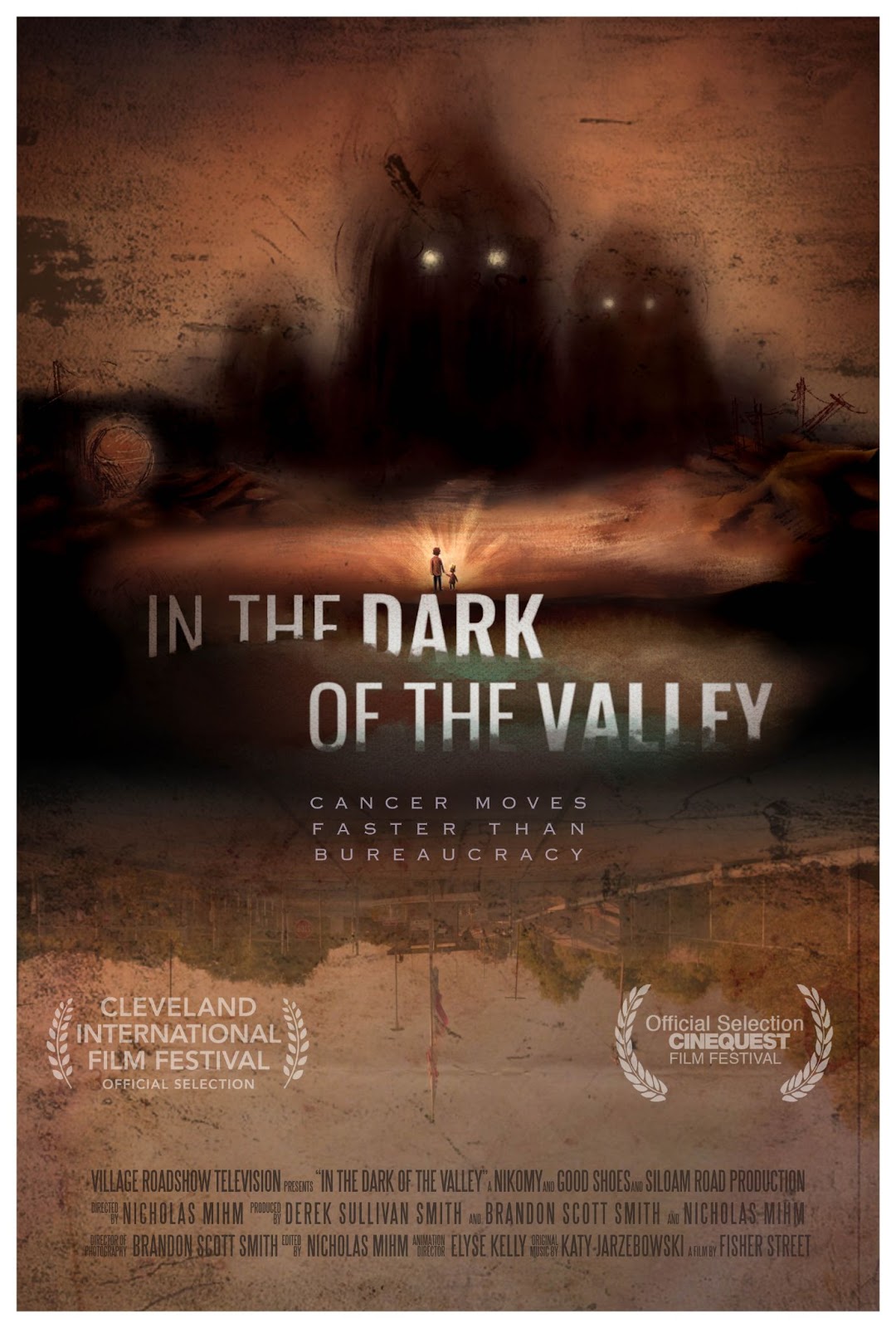
In the Dark of the Valley is the first feature film to focus on the Santa Susana Field Laboratory, a former nuclear and rocket-engine testing site near Los Angeles. The film is an in-depth exploration into the site’s long history of cover-ups and negligence by site owners Boeing, NASA, and the Department of Energy. It also tells the harrowing story of how a community of mothers, led by Melissa Bumstead, have dealt with the struggles of childhood cancer and their new found life of environmental advocacy.
ICBM Information Project – View the Interactive ICBM Timeline

The Pentagon is currently planning to replace its current arsenal of intercontinental ballistic missiles (ICBMs) with a brand-new missile force, known as the Ground-Based Strategic Deterrent, or GBSD.
The GBSD program consists of a like-for-like replacement of all 400 Minuteman III missiles that are currently deployed across Colorado, Montana, Nebraska, North Dakota, and Wyoming, and will also include a full set of test-launch missiles, as well as upgrades to the launch facilities, launch control centers, and other supporting infrastructure. The GBSD program will keep ICBMs in the United States’ nuclear arsenal until 2075, and is estimated to cost approximately $100 billion (in Then Year dollars) in acquisition fees and $264 billion (in Then Year dollars) throughout its life-cycle.
Examining the Need to Expand Eligibility Under the Radiation Exposure Compensation Act (RECA) before the U.S. House Judiciary Committee, Subcommittee on the Constitution, Civil Rights, and Civil Liberties
When: Wednesday, March 24, 2021, at 2 pm EDT, noon MDT
Where: https://judiciary.house.gov/calendar/eventsingle.aspx?EventID=4479
At the invitation of Chairman Jerrold Nadler, Tina Cordova, Co-founder of the Tularosa Basin Downwinders Consortium (TBDC), will provide written and oral testimony to the U.S. House Judiciary Committee, Subcommittee on the Constitution, Civil Rights, and Civil Liberties this week to urge the members to expand the Radiation Exposure Compensation Act (RECA) to include the Trinity Downwinders.
Transcript of interview with US Secretary of State Antony Blinken
Washington’s top diplomat holds roundtable with Japanese media in Tokyo
By: ERI SUGIURA| asia.nikkei.com
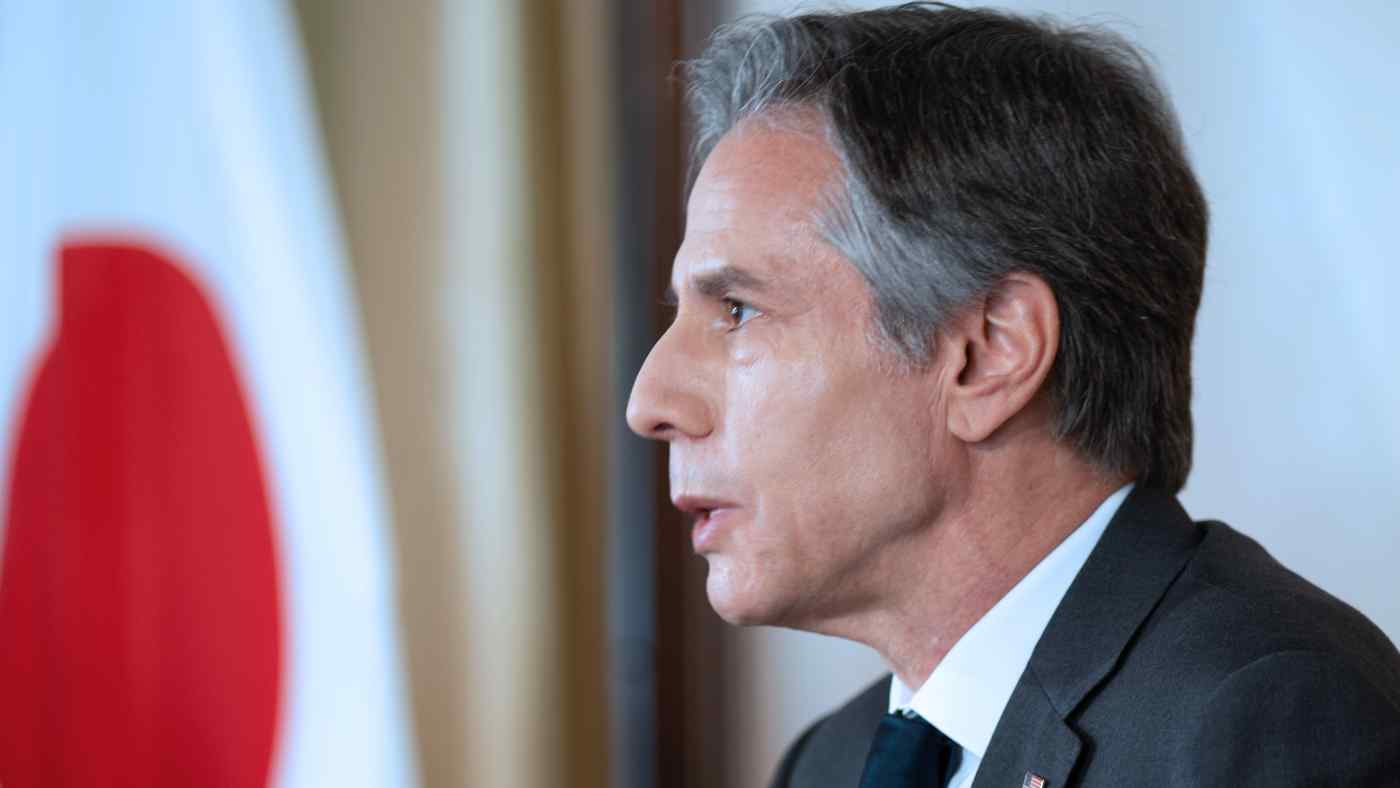
TOKYO — U.S. Secretary of State Antony Blinken held a virtual roundtable with Nikkei Asia and other Japanese media in Tokyo on Wednesday, a day after he and Defense Secretary Lloyd Austin met for “two-plus-two” talks with Japanese counterparts Toshimitsu Motegi and Nobuo Kishi.
Here is an edited transcript of the group interview with Blinken:
— Opening remarks
The partnership between the United States and Japan is absolutely vital. I think it’s vital to our country’s respective citizens to the region, and in so many ways to the world. It really starts with our common commitment to democracy. And I think that’s especially significant today because democracy is under challenge and under threat in ways that it hasn’t been before, certainly not in recent years, particularly from autocratic countries were on the rise around the world.
Explosively Entertaining: Nuclear Weapons on TV
Books, Films & Art of Note | Beyond the Bomb: Maria Diaz-Islas, March
1. Jericho (2006-2008)
This show’s passionate fanbase fought tooth and nail to keep it running before CBS canceled it after only two seasons (sounds a lot like some nuclear weapons manufacturers I’ve heard of…). It follows the story of the fictional Kansas town, Jericho, after a nuclear attack on nearby Denver turns the characters’ worlds upside down. The citizens of Jericho struggle as they avoid nuclear fallout, determine how to communicate with the outside world, and try to restore life back to the way it was before the explosion. The post-apocalyptic plot is also riddled with drama, as the characters’ near-death experiences and the loss of loved ones force them to question whether they were truly happy with their former ways of life, reminiscent of living through the COVID-19 pandemic today.
Continue reading
BACK FROM THE BRINK: ENDING NUCLEAR WEAPONS BEFORE THEY END US
Opportunities Under the Biden Administration to Take Action
EVENT VIDEOS AND RESOURCES: Click below to view video recordings, learning resources and actions you can take to eliminate nuclear weapons and the threat of nuclear war.
preventnuclearwar.org/enw-resources
Former Nuclear Watch New Mexico Intern Alicia Sanders-Zakre Presentation on What the Entry into Force of the TPNW Mean in the United States:
The US Intercontinental Ballistic Missile Force: A Post-Cold War INTERACTIVE Timeline
The Pentagon is currently planning to replace its current arsenal of intercontinental ballistic missiles (ICBMs) with a brand-new missile force, known as the Ground Based Strategic Deterrent (GBSD); it is estimated to cost approximately $100 billion in acquisition fees and $264 billion throughout its lifecycle until 2075 (in Then-Year dollars).
Click the link below to find a comprehensive timeline of all relevant actions taken relating to the ICBM force since the end of the Cold War, including force posture alterations, international treaties, congressional efforts, government studies, and milestones in the GBSD acquisition process.
https://web.archive.org/web/20230216030034/https://fas.org/issues/icbm-information-project/timeline-master/
Links between Box Elder landfill, California business charged in radioactive waste scandal emerge
“[Bradley] Angel, with Green Action, says his organization is relieved that Tetra Tech EC has been taken off the Hunter’s Point cleanup but still worries about all projects Tetra Tech is involved in.
“Promontory Point Resource’s application in Utah stresses the convenient value of superfund cleanup sites in the San Francisco Bay Area. Tetra Tech, which designed the Promontory landfill, has also been deeply invested in other northern California superfund projects. Besides Hunter’s Point, documents from the Environmental Protection Agency and news accounts show the company is actively involved in cleanups at other Bay Area superfunds like the Alameda Naval Air Station and McLellan Air Force Base. All these sites contain radioactive contaminants.”
By: Eric Peterson / Special to the Standard-Examiner | standard.net March 19, 2021
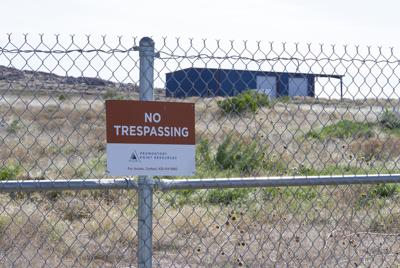
After sitting empty for years on the north shore of the Great Salt Lake in Box Elder County, Promontory Point Resources is trying once again to receive out-of-state waste for its landfill after abandoning a previous attempt in 2018.
In its new Class V landfill application with the state Department of Environmental Quality, the company talks about the lucrative market in contaminated soils from superfund cleanup sites in northern California.
“The full market demand for excavated soil disposal from just counties around the San Francisco Bay appears to have an average in the range of 250,000 to 350,000 tons per year,” the document states.
The report does not mention many sites by name, although they are very well known in California.
Cap on Trident nuclear warhead stockpile to rise by more than 40%
Boris Johnson announcement on Tuesday will end 30 years of gradual disarmament
By: Tricia Ennis | 13abc.com
The increased limit, from 180 to 260 warheads, is contained in a leaked copy of the integrated review of defence and foreign policy. Photograph: Tam McDonald/MoD/EPABritain is lifting the cap on the number of Trident nuclear warheads it can stockpile by more than 40%, Boris Johnson will announce on Tuesday, ending 30 years of gradual disarmament since the collapse of the Soviet Union.
The increased limit, from 180 to 260 warheads, is contained in a leaked copy of the integrated review of defence and foreign policy, seen by the Guardian. It paves the way for a controversial £10bn rearmament in response to perceived threats from Russia and China.
The review also warns of the “realistic possibility” that a terrorist group will “launch a successful CBRN [chemical, biological, radiological or nuclear] attack by 2030”, although there is little extra detail to back up this assessment.
Santa Fe’s benefit from LANL coalition questioned
“We have RCLC, which is funded primarily by the Department of Energy funds, yet DOE doesn’t necessarily listen to the resolutions that we put forward about reducing plutonium pit production. They don’t ask us what we think as city of Santa Fe residents.”
By: Sean P. Thomas, The Santa Fe New Mexican | sfnewmexican.com March 18th, 2021
Mar. 18—Concerns from City Councilor Renee Villarreal over how the city of Santa Fe would benefit by remaining in an amended joint power agreement with the Regional Coalition of LANL Communities continued during Wednesday night’s Quality of Life Committee meeting.
Santa Fe is one of nine cities, counties, towns and tribal governments that make up the regional coalition, which was established in 2011 to give communities in Northern New Mexico more say in decision-making related to job development and cleanup at Los Alamos National Laboratory.
Villarreal, however, questioned how the coalition advocates for city policy stances on requests for expanded cleanup at the site and the reduction of plutonium pit production.
THE UK TO INCREASE NUCLEAR CAPABILITY BY 40%: British Defense Review Ends Nuclear Reductions Era
By: Hans M. Kristensen fas.org March 17th, 2021
The United Kingdom announced yesterday that it has decided to abandon a previous plan to reduce its nuclear weapons stockpile to 180 by the mid-2020s and instead “move to an overall nuclear weapon stockpile of no more than 260 warheads.”
The decision makes Britain the first Western nuclear-armed state to increase its nuclear weapons stockpile since the end of the end of the Cold War. In terms of numbers, it takes Britain back to a stockpile size it had in the early-2000s. The change is part of “a shift to a more robust position on security and deterrence.”
Nuclear News Archives – 2020
Smith and Menendez Statement on the Immense Costs of Allowing the New START Treaty to Expire
Already exorbitant nuclear weapons costs will only go up if the New START treaty expires.
“Extending the New START Treaty for a full five years is clearly the right financial and national security choice. America cannot afford a costly and dangerous nuclear arms race, particularly in the middle of our current economic, political, and health crises.”
FOR IMMEDIATE RELEASE: August 26, 2020
Contact:
Smith: Monica Matoush // 202-226-5048
Menendez: Juan Pachon // 202-224-4130
WASHINGTON, D.C. – Representative Adam Smith (D-Wash.), Chairman of the House Armed Services Committee, and Senator Bob Menendez (D-NJ), Ranking Member of the Senate Foreign Relations Committee, today issued the following statement after the Congressional Budget Office (CBO) published a new report regarding the potential costs of expanding U.S. strategic nuclear forces if the New Strategic Arms Reduction Treaty (New START) Expires:
“CBO’s nonpartisan report is clear: The Trump administration’s unwillingness to continue the decades of strategic arms control by failing to extend the New START Treaty is driving the United States toward a dangerous arms race, which we cannot afford. While this report only begins to account for the costs of the Administration’s preposterous claims that we can ‘spend the adversary into oblivion,’ it is further proof of why New START is essential to U.S. and international security.
Catholics Against Nukes: Archbishop Wester’s Hiroshima Vigil
As long as nuclear deterrence, that most unmeasured of strategies, remains, it keeps company with the prospect of use and annihilation. Coghlan, in his rebuke to the editors also penned in the Albuquerque Journal, gave an acid summation: “the US arsenal has always been about nuclear war fighting, starting with the simple fact that we were the first to use it.” Only “sheer luck has kept us from nuclear catastrophe.”
BY: Binoy Kampmark | scoop.com/nz
In what is a turn-up for the books, a senior voice of the Catholic Church made something of an impression this month that did not incite scandal, hot rage, or the commencement of an investigation. It did, however, agitate a few editors. Archbishop John C. Wester of San Fe, in speaking at the online Hiroshima Day vigil, had put up his hand to defy the validity and morality of nuclear weapons and, along with them, the idea of nuclear deterrence. One of the organisers of the event, the veteran peace activist Rev. John Dear, claimed it had “never happened before.”
Dear had a point. There has been a shift within Catholic ranks urged along by Pope Francis on that most fatuous of strategic doctrines, nuclear deterrence. Before the United Nations General Assembly in June 1982, Pope John Paul II chose to argue that nuclear “‘deterrence’ based on balance, certainly not as an end in itself but as a step on the way toward a progressive disarmament, may still be judged morally acceptable.”
America’s Ageing Nuclear Fleet Underprepared For Climate Change
Last year, Bloomberg conducted a review of “correspondence between the commission and owners of 60 plants” and made some terrifying discoveries. According to their own risk assessments, “54 of their [60] facilities weren’t designed to handle the flood risk they now face.”
By: Haley Zaremba / oilprice.com
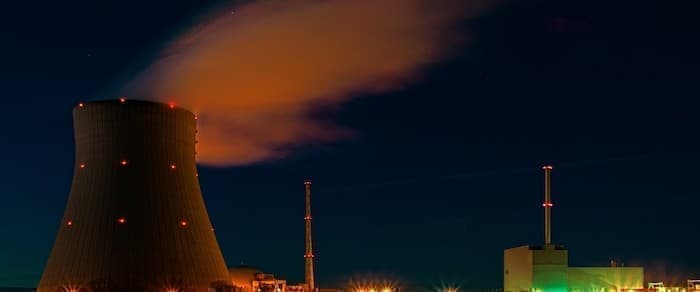
The United States is not only one of the first and foremost nuclear powers of the world, it has also long been the nuclear powerhouse of the planet, being responsible for a whopping two thirds of global nuclear energy production. Domestically, the United States’ nuclear power plants account for approximately 20 percent of the nation’s total electricity and produce over 50 percent of the entire country’s carbon-free energy generation. But these superlatives, both global and domestic, won’t last. As nuclear energy grows around the world, the industry is in deep trouble in the U.S., where the aging nuclear fleet has been battered by a flood of cheap shale oil and natural gas, and is now barely clinging to life thanks to hefty government subsidies and leaving the shockingly high cost of radioactive waste maintenance to the taxpayers.
New Video Shows Largest Hydrogen Bomb Ever Exploded
A Russian nuclear energy agency released formerly classified footage of the Soviet Union’s 1961 Tsar Bomba test.
BY: William J. Broad | nytimes.com
Hydrogen bombs — the world’s deadliest weapons — have no theoretical size limit. The more fuel, the bigger the explosion. When the United States in 1952 detonated the world’s first, its destructive force was 700 times as great as that of the atomic bomb that destroyed Hiroshima.
And in the darkest days of the Cold War, the Soviets and the Americans didn’t only compete to build the most weapons. They each sought at times to build the biggest bomb of all.
Russia Releases “Tsar Bomba” Test Footage Of The Most Powerful Nuclear Bomb Blast Ever
This previously classified film provides a new and fascinating glimpse into the 50-megaton Cold War nuclear test that occurred nearly six decades ago.
Don’t Preach Nuclear Arms to Archbishop
“That $2 trillion nuclear weapons modernization will do nothing to protect us against the global pandemic impacting Americans now. Further, the Sandia and Los Alamos labs may actually degrade national security with planned new nuclear weapons designs that can’t be tested because of the global testing moratorium. Or worse yet, this may prompt the U.S. back into testing, throwing more gas on the fire of the new nuclear arms race.”
BY: JAY COGHLAN / NUCLEAR WATCH NEW MEXICO, SANTA FE
Monday, August 24th, 2020 at 12:02am
 In response to (the Aug. 13) editorial “Archbishop’s nuclear weapons view needs a homily on reality,” I was one of the speakers at the 75th anniversary commemoration of the Hiroshima atomic bombing, organized by Fr. John Dear, at which Santa Fe Archbishop John Wester eloquently spoke. The editorial declared “neither Wester nor Dear appear to accept the premise there is any deterrent benefit to the nuclear arsenal.”
In response to (the Aug. 13) editorial “Archbishop’s nuclear weapons view needs a homily on reality,” I was one of the speakers at the 75th anniversary commemoration of the Hiroshima atomic bombing, organized by Fr. John Dear, at which Santa Fe Archbishop John Wester eloquently spoke. The editorial declared “neither Wester nor Dear appear to accept the premise there is any deterrent benefit to the nuclear arsenal.”
To the contrary, the Journal perpetuates the delusion that the U.S. nuclear arsenal is just for deterrence, a premise fed to American taxpayers since the beginning of the Cold War. Instead, the U.S. arsenal has always been about nuclear warfighting, starting with the simple fact that we were the first to use it. This continues to this day, as the Pentagon made clear in a 2013 nuclear policy declaration: “The new guidance requires the United States to maintain significant counterforce capabilities against potential adversaries. The new guidance does not rely on a ‘counter-value’ or ‘minimum deterrence’ strategy.”
NOTE: This study has notable implications since the New Mexico congressional delegation touts expanded nuclear weapons programs as an economic engine for northern New Mexico.
Study: Neighboring counties lose money due to LANL
BY: KYLE LAND Copyright © 2020 Albuquerque Journal
SANTA FE — A study conducted by University of New Mexico researchers found that Los Alamos National Laboratory has a negative economic impact on nearby communities, despite employing many people in the area.
Of the seven counties included in the study, governments in six of them were found to be losing money due to LANL’s impact, with the exception of Los Alamos. Those counties include Santa Fe, Rio Arriba, Sandoval, San Miguel, Taos and Mora.
The study, conducted by UNM’s Bureau of Business and Economic Research, found Los Alamos County gained $13 million from economic activity created by the lab, while all other counties lost an average of $1.25 million.
Santa Fe and Rio Arriba counties, home to 40% of the Lab’s employees, had the largest losses, at more than $2 million.
In a Friday presentation of the findings to the Regional Coalition of LANL Communities, Bureau Director Jeff Mitchell said his team calculated how much revenue LANL employees produce for an area versus what it costs a local government to provide services for them.
The study, Mitchell said, found that LANL and its employees tend to spend their money in only a few places.
Thirty-eight percent of the Lab’s spending actually goes to Bernalillo County, with another 42% staying within Los Alamos County, according to the study.
Trump Administration Sends Mixed Signals on Nuclear Weapons Budgeting
“A Senate-passed proposal would grant the Nuclear Weapons Council new authority to edit NNSA’s budget request after the Energy Department crafts it and before the request is submitted to the White House budget office.”
BY:Joe Gould & Aaron Mehta
WASHINGTON ― Defense hawks in Congress are pushing a contentious plan to give the Pentagon a stronger hand in crafting nuclear weapons budgets, but the Trump administration has been sending mixed messaging over recent weeks about whether the change is needed.
The Senate-passed version of the annual defense policy bill would give the Pentagon-led Nuclear Weapons Council a say in the budget development of the National Nuclear Security Administration, a semi-autonomous agency within the Department of Energy that’s responsible for the stockpile’s safety, security, and effectiveness.
NOTE: This article is illustrative of the absolutely key role New Mexico plays in the new nuclear arms race, far beyond just the Los Alamos and Sandia Labs. The Air Force Nuclear Weapons Center is on Kirtland Air Force Base which shares runways with the Albuquerque, NM airport. The new nuclear arms race will be increasingly dangerous with likely hypersonic and cyber weapons.
US Air Force May Have Accidentally Revealed Interest in Hypersonic Nuke
BY: Valerie Insinna
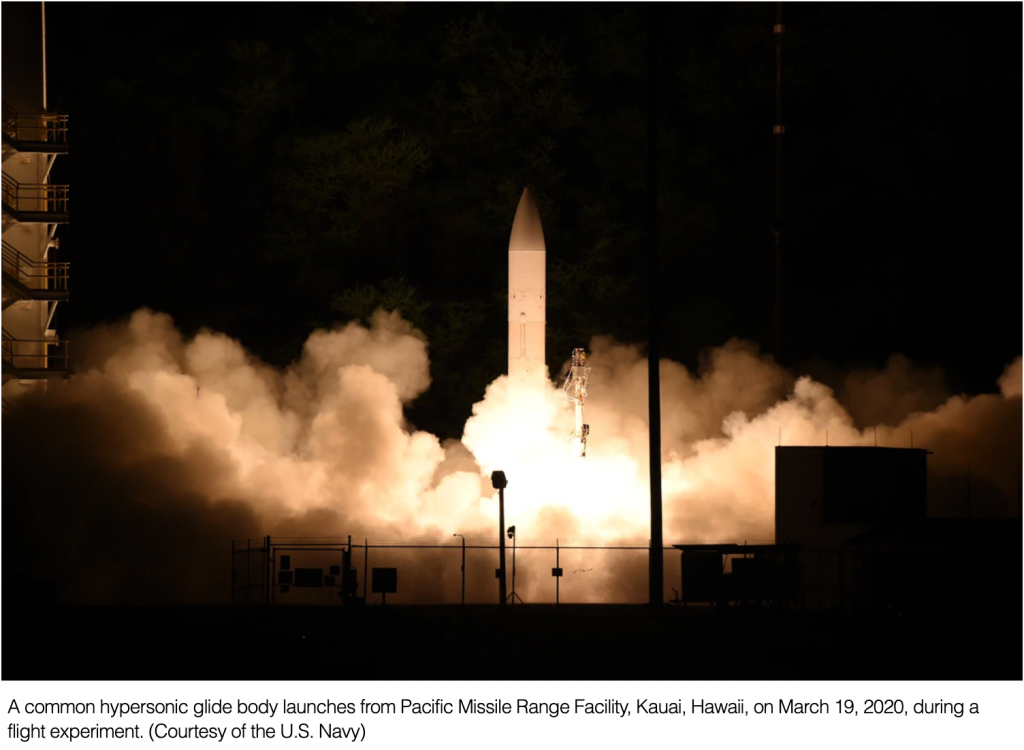
WASHINGTON — The U.S. Air Force has issued, and quietly revoked, a solicitation to industry seeking technologies that would support a hypersonic glide vehicle capable of traversing intercontinental ranges, potentially signaling the military’s interest in a hypersonic nuclear weapon.
According to an Aug. 12 request for information first reported by Aviation Week, the Air Force Nuclear Weapons Center sought ideas for potential upgrades to intercontinental ballistic missiles, including a “thermal protection system that can support [a] hypersonic glide to ICBM ranges.”
USAF Rethinks Relationship Between Conventional, Nuclear Weapons
“What we’re trying to prepare ourselves to do is to respond with whatever force is necessary in a nuclear environment. It’s not so much to fight tactically. Really, the ultimate goal here is to deter. We want to raise that threshold of using nuclear weapons, whether strategic or non-strategic … to the highest level possible.”
To do that, Clark argues the Air Force needs ways to stop others from using nuclear weapons in the first place, and options to retaliate if deterrence fails. Technology, training, and command-and-control requirements all need to be updated to support that approach.
BY: Rachel S. Cohen
The Air Force is crafting new policy that envisions more fluidity between conventional and nuclear weapons, as well as a broader range of options to keep others from using their own nuclear weapons.
The U.S. has long treated conventional and nuclear warfare as separate concepts, but that’s beginning to change, said Lt. Gen. Richard M. Clark, the Air Force’s deputy chief of staff for strategic deterrence and nuclear integration.
DOE Issues Draft RFP for the Oak Ridge Reservation Cleanup Contract
Cincinnati – Today, the U.S. Department of Energy’s Office of Environmental Management (EM) issued a Draft Request for Proposals for the Oak Ridge Reservation Cleanup Contract (ORRCC) procurement at the Oak Ridge Reservation (ORR), in Oak Ridge, Tennessee.
 Media Contact:
Media Contact:
Toni Rutherford
(513) 246-1374
Toni.Rutherford@emcbc.doe.gov
The purpose of the Draft RFP is to solicit input from interested parties to assist DOE in developing a Final RFP for this procurement. DOE invites all interested parties to thoroughly examine the Draft RFP and the accompanying procurement website in their entirety and to submit comments to DOE.
DOE anticipates an Indefinite-Delivery/Indefinite-Quantity (IDIQ) contract with a ten-year ordering period from which Firm-Fixed-Price and/or Cost-Reimbursement-type task orders may be issued, with an estimated contract ceiling of approximately $8.3 billion over the ordering period. It is anticipated that task order performance may extend up to five years beyond the end of the ordering period.
None of the Above Podcast
The Atomic Bomb’s First Victims – Beata Tsosie-Pena & Jay Coghlan on Downwinders
"There's this misconception that Hiroshima & Nagasaki were the first victims of the atomic bombing when really it was the people of New Mexico."
Our latest episode commemorates the #75thanniversary of the world's first nuclear attack.
Listen here: https://t.co/3YV9xPl3NV pic.twitter.com/JetubewTNJ
— Eurasia Group Foundation (@EGFound) August 18, 2020
REMEMBERING HIROSHIMA: This Hiroshima survivor returned to the site of the atomic bombing 75 years later.
Hiroshima to a Healthy Tomorrow: Embracing Our Common Humanity in a Virtual Rally
|
|
OREPA challenges NNSA’s “Final Supplement Analysis.”
The Oak Ridge Environmental Peace Alliance, along with Nuclear Watch New Mexico, has challenged the National Nuclear Security Administration’s latest justification for the Uranium Processing Facility bomb plant under construction at the Y-12 National Security Complex in Oak Ridge, Tennessee. In a letter to the Secretary of Energy and the Administrator of the NNSA, OREPA and NWNM pointed out that the Final Supplement Analysis, released in July, falls far short of the “hard look” required by the National Environmental Policy Act.
See OREPA Comments
The Final Supplement Analysis is NNSA’s attempt to comply with the order of the federal court in Knoxville, Tennessee. The court, in September of last year, ruled in favor of OREPA, NWNM, the Natural Resources Defense Council and four individual plaintiffs who argued that NNSA is in violation of NEPA, the law that requires federal agencies to consider the environmental impacts of their actions.
SEE ALSO:
[ILLINOIS] ComEd, Madigan Sued for $450M in Racketeering Suit
Illinois electric customers filed a federal civil racketeering lawsuit against ComEd and state House Speaker Michael Madigan, seeking more than $450 million in damages.
Breaking news update: Today, August 10, a putative class of Commonwealth Edison customers filed a civil racketeering lawsuit against Illinois Speaker of the House Michael Madigan, Commonwealth Edison Company (“ComEd”), ComEd’s parent Exelon Corporation, and several other defendants. Read all the details here.
BY: Michael Yoder | rtoinsider.com
The recent Illinois lobbying corruption scandal involving Exelon Corporation, its subsidiary Commonwealth Edison and Democratic House Speaker, Michael Madigan, demonstrates the extent to which nuclear “power” is about more than electrons.
The FBI arrests of the Ohio House Speaker and five others in a $60 million bribery/corruption scheme; the $10 billion Exelon nuclear bailout in New York; the questionable circumstances surrounding Exelon’s 2016 PepCo merger; and the South Carolina $9 billion SCANA fraud case, suggest that this may be a national pandemic.
DARK CIRCLE: The Sundance Grand Prize-winning classic doc about the dangers of the atomic age – newly restored!
Dark Circle – Official Trailer from First Run Features on Vimeo.
It’s been 75 years this month since the start of the Atomic Age, with the U.S. nuclear bombing of Hiroshima and Nagasaki killing hundreds of thousands of civilians, but its trail of destruction has never ended.
Public Interest Group Requests DOE Prepare “Programmatic Environmental Impact Statement” on Plutonium Disposition, in Support of Recommendation by National Academies of Sciences Pane
Plutonium Disposition via “Dilute & Dispose” to Bring at Least 22.5 Metric Tons More of Plutonium to Savannah River Site, On Top of 11.5 MT of Pu Already at SRS, Must Not be Stranded if Project Changes
Link to SRS Watch’s August 11 Letter to DOE on Plutonium Disposition and Need for PEIS
Savannah River Site Watch
https://srswatch.org/
Columbia, South Carolina
For immediate Release
August 12, 2020
Contact: Tom Clements, Director, SRS Watch, tel. 803-834-3084, cell 803-240-7268
Columbia, SC – The U.S. Department of Energy must prepare an overarching environmental analysis of slow-moving plans to process and dispose of surplus weapons plutonium at Savannah River Site and other DOE sites, according to a request made by Savanna River Site Watch, a public interest group providing oversight of SRS and DOE.
The August 11, 2020 letter to key DOE officials highlights reasons for preparation of a “Programmatic Environmental Impact Statements” (PEIS) on plutonium disposition and affirmed support for a recent recommendation by a panel of the National Academies of Sciences (NAS). A PEIS, prepared under the National Environmental Policy Act, would review the need for the project, assess DOE system-wide plutonium-disposition impacts and would analyze various sites to be utilized, including SRS, Los Alamos National Lab in New Mexico and the Pantex site in Texas (where more than 15,000 plutonium pits removed from weapons are stored).
New Mexico is still waiting for justice 75 years since the Manhattan Project
The state also faces coronavirus on this anniversary.
BY: Bernice Zamora Gutierrez & Paul Lopez Pino | thehill.com
While our nation struggles to survive the COVID-19 pandemic, New Mexicans are already engaged in a deadly health crisis that has cost the lives of thousands of our beloved family and community members for the past 75 years. This crisis is the overexposure to radiation from the world’s first nuclear bomb detonation at Trinity Site in south central New Mexico on July 16, 1945. In the process it made many New Mexicans the first “Downwinder” communities exposed to radiation from nuclear weapons. The Trinity test in New Mexico was followed by the bombing of Hiroshima and Nagasaki three weeks later and we are all memorializing our dead on this 75th anniversary of the nuclear age. And just as the country is waiting for a pandemic recovery plan, New Mexicans are still waiting to be included in the Radiation Exposure Compensation Act (RECA) found in U.S. House Bill 3783.
Obscure agency writing off state politician’s debt
““…Romero and various board members charged taxpayers for lunches in and around Santa Fe. These meals for a select group in no way furthered the public interest. They only benefited coalition insiders.”
BY: Milan Simonich | santafenewmexican.com
You miss a few payments on the $7,800 you owe on your car. A repo agent will take away your ride and your pride while the neighbors watch.
You fail to make payments on a years-old $7,800 credit card bill. The lender will make certain you suffer from the worry of being sued. All the while your debt will balloon with interest charges and late fees.
That’s the real world. Life isn’t as hard in the echelon of state Rep. Andrea Romero and her former employer, the Regional Coalition of LANL Communities.
The coalition’s board claims Romero still owes it $7,800 for impermissible expenses accrued during her tenure as its executive director from March 2016 to February 2018. It asked Romero in May to pay the bill.
Nuclear Power goes South in South Carolina
“It looks like crime might well pay after all.”
That was the weary and only slightly tongue-in-cheek conclusion drawn by longtime anti-nuclear campaigner, Tom Clements recently, after a former South Carolina nuclear utility executive pled guilty to fraud in federal court.
BY: Linda Pentz Gunter | beyondnuclear.org
Clements is the director of Savannah River Site Watch, but his activism has, for decades, extended well beyond the perimeter of that vast nuclear site.
For years, Clements and others have followed — and attempted to stand in the way of — the forced march of South Carolina ratepayers toward nuclear fiasco. When it finally unraveled in late July, there was only cautious cause for celebration.
On July 23, Stephen Byrne, the former COO of SCANA, the South Carolina utility originally in charge of the construction of two new nuclear reactors in the state, pled guilty in a massive nuclear conspiracy that defrauded ratepayers, deceived regulators and misled shareholders.
Hiroshima survivor Dr. Hideko Tamura Snider, August 9, 2020
On August 9, 2020, Dr. Hideko Tamura Snider, author of “One Sunny Day” and “When A Peace Tree Blooms,” joined WILPF US Disarm/End Wars Committee and #HiroshimaNagasaki75 in describing her experiences before, during and after the Hiroshima bomb, and appealing to us all, “I depend on all of your energy, please continue what you are doing to rule out violent means, especially this inhumane, horrible weapon…. We are not barbarians, we are humans, and let us be truly and fully human….”
https://youtu.be/KYzuoGuqg34
75th Anniversary Timeline webinars at the WILPF US Disarm Committee YouTube channel – https://bit.ly/wilpfus-disarmyoutube
Jay Coghlan on The Richard Eeds Show August 3, 2020
The Richard Eeds Show. 8/3 – Jay Coghlan of Nuclear Watch New Mexico on The Event Commemorating the 75th Anniversary of the Bombing of Hiroshima.
Anti-nuclear protests at Kings Bay
“Our mission is to stop the arms race…it’s a security risk and phenomenally expensive. This has become a business model and it’s deadly.” – Glenn Carroll, coordinator of Nuclear Watch South
By: GORDON JACKSON / thebrunswicknews.com
Anti-nuclear protesters hold signs near the entrance to Naval Submarine Base Kings Bay on the 75th anniversary of the first atomic bomb dropped on Hiroshima, Japan. Gordon Jackson/The Brunswick NewsST. MARYS / Organizers of an annual protest against nuclear weapons at Naval Submarine Base Kings Bay expected a large crowd to commemorate the 75th anniversary of the first atomic bomb dropped on Hiroshima, Japan, to help hasten the end of World War II.
Five people ended up standing outside a base gate Thursday holding signs with anti-nuclear weapons messages.
Glenn Carroll, coordinator of Nuclear Watch South, said the ongoing COVID-19 pandemic compelled many who were planning to attend to stay home for health concerns. But Carroll said her trip from Atlanta to join others with concerns about nuclear weapons Thursday was worth the time.
How New Tech Raises the Risk of Nuclear War
75 years after Hiroshima and Nagasaki, some experts believe the risk of the use of a nuclear weapon is as high now as it has been since the Cuban missile crisis.
BY: BRYAN WELSH | axios.com
The big picture: Nuclear war remains the single greatest present threat to humanity — and one that is poised to grow as emerging technologies, like much faster missiles, cyber warfare and artificial intelligence, upset an already precarious nuclear balance.
What’s happening: A mix of shifting geopolitical tensions and technological change is upsetting a decades-long state of strategic stability around nuclear weapons.
- Strategic stability is when no country has an incentive to launch a first nuclear strike, knowing that doing so would inevitably lead to a catastrophic response. It’s the “mutual” in “mutually assured destruction.”
- Arms control deals like the Intermediate-Range Nuclear Forces Treaty are collapsing, while faster hypersonic missiles are shrinking the already brief minutes available to decide how and whether to respond to a potential nuclear attack, meaning “the possibilities of a miscalculation are unfortunately higher than they have been in a long, long time,” says former Energy Secretary Ernest Moniz.
- As concerning as rising tensions are between the U.S. and Russia, or between the U.S. and a more assertive China, experts worry even more about the destabilizing effect of emerging technologies like cyber warfare and AI.
- “The black box of AI in the future of war makes it almost inherently unpredictable,” says P.W. Singer, a strategist at New America and author of “Burn-In” — and unpredictability is anathema to a nuclear balance held in place by predictability.
75 years after Hiroshima, should U.S. president have authority to launch nuclear attack?
On August 6, 1945, the United States dropped the first atomic weapon on Hiroshima, Japan. Seventy-five years later, [PBS] NewsHour revisits how the president became the sole authority on when nuclear weapons are used. Nick Schifrin reports and talks to former Secretary of Defense William Perry, co-author of “The Button: The New Nuclear Arms Race and Presidential Power from Truman to Trump.”
BY: Nick Schifrin | pbs.org
Judy Woodruff:
On August 6, 1945, the United States dropped the first atomic weapon on Hiroshima, Japan. In the coming days, we will examine this 75th anniversary, the bomb’s immediate aftermath and its lasting legacy. Today, Nick Schifrin looks at the president’s sole authority to launch such a weapon and how that authority came to be.
The 75th Anniversary of Hiroshima and Nagasaki: A Renewed Call for Our Day
“A world of peace, free from nuclear weapons, is the aspiration of millions … ” — Pope Francis, Address at Atomic Bomb Hypocenter Park (Nagasaki), November 24, 2019.
PEOPLE OF GOD – Santa Fe Archdiocese, August 2020
PRAY
Pray with your community for the causes of peace and nuclear disarmament to be made a reality.
- Sample bulletin announcements and prayers of the faithful for use on August 2nd and 9th, 2020.
- Share this prayer (en Español) with your networks, or other prayers for peace on August 9th.
LEARN
Learn about what the Church teaches regarding nuclear weapons.
- Nuclear Weapons and Our Catholic Response: A Catholic Study Guide for use with the filmNuclear Tipping Point, revised June 2020.
- Statements of the U.S. bishops on Nuclear Weapons
- Pope Francis on Nuclear Weapons at Atomic Bomb Hypocenter Park (Nagasaki), November 24, 2019.
ACT
Put what your faith into action by raising your voice to support nuclear disarmament.
- Tell Congress to support extension of the New START Treaty and a continued U.S. moratorium on nuclear testing.
- Ask your friends and family to join you in taking action.
On 75th Anniversary of Japan Nuclear Bombings, Sierra Club Continues Calls for Elimination of Nuclear Weapons
Today, the Sierra Club rises with the survivors of the Hiroshima and Nagasaki nuclear bombings in continuing our call for an elimination of all nuclear weapons worldwide. The creation and storage of nuclear weapons is inherently risky, and accidents, testing, and use of nuclear weapons are recklessly and unnecessarily dangerous for communities — particularly low income and communities of color — and our environment.
“The Sierra Club calls on Congress to resist the current renewal of the nuclear arms race and to ban the use of nuclear weapons.”
Thursday, August 6, 2020 – Contact: Cindy Carr, cindy.carr@sierraclub.org
 WASHINGTON, D.C. — To commemorate the 75th anniversary of the WW II nuclear bombings of Hiroshima and Nagasaki, the Sierra Club has joined with the Hibakusha Survivors in calling for the elimination of all nuclear weapons globally. Since 1945, nearly 100,000 nuclear weapons have been manufactured, costing trillions of dollars and destroying communities and the environment through the mining, refining, and weaponizing of uranium.
WASHINGTON, D.C. — To commemorate the 75th anniversary of the WW II nuclear bombings of Hiroshima and Nagasaki, the Sierra Club has joined with the Hibakusha Survivors in calling for the elimination of all nuclear weapons globally. Since 1945, nearly 100,000 nuclear weapons have been manufactured, costing trillions of dollars and destroying communities and the environment through the mining, refining, and weaponizing of uranium.
The Sierra Club opposes the creation and testing of nuclear weapons and supports the Treaty on the Prohibition of Nuclear Weapons (TPNW).
Urgency to bear witness grows for last Hiroshima victims
“We must work harder to get our voices heard, not just mine but those of many other survivors,” Lee [ Jong-keun] said in an interview Tuesday at the Hiroshima Peace Memorial Museum. “A nuclear weapons ban is the starting point for peace.”
Mari Yamaguchi Associated Press | santafenewmexican.com
HIROSHIMA, Japan
For nearly 70 years, until he turned 85, Lee Jong-keun hid his past as an atomic bomb survivor, fearful of the widespread discrimination against blast victims that has long persisted in Japan.
But Lee, 92, is now part of a fast-dwindling group of survivors, known as hibakusha, that feels a growing urgency — desperation even — to tell their stories. These last witnesses to what happened 75 years ago Thursday want to reach a younger generation that they feel is losing sight of the horror.
The knowledge of their dwindling time — the average age of the survivors is more than 83 and many suffer from the long-lasting effects of radiation — is coupled with deep frustration over stalled progress in global efforts to ban nuclear weapons. According to a recent Asahi newspaper survey of 768 survivors, nearly two-thirds said their wish for a nuclear-free world is not widely shared by the rest of humanity, and more than 70 percent called on a reluctant Japanese government to ratify a nuclear weapons ban treaty.
Atomic-bomb survivors seek new ways to keep their memories alive
Around the world, non-proliferation efforts are faltering
For seventeen year-old Takeoka Chisako, August 6th, 1945 was supposed to be a day off. She had planned to meet two girlfriends at 8:15 that morning, at a train station on the west side of Hiroshima. She was running late, and as she stepped outside her house she lifted a pocket mirror to her face. Then she saw a flash and heard a bang. When she regained consciousness she found herself lying in a potato field 30 metres away, a mushroom cloud rising in the sky. People with charred skin dangling from their arms came rushing over a nearby hillside. They cried for help, but were too feeble to speak their names and too weak to drink the water Ms Takeoka brought them. “Then one by one, they died,” says Higashino Mariko, Ms Takeoka’s daughter.
Hiroshima after 75 years: Walking the path of the atomic bomb
74-year-old [Kosei Mito] turns to a page in one of his binders with a large quote Pope John Paul II made during a visit to Hiroshima in 1981, one that’s inscribed on a memorial inside the Hiroshima Peace Museum.
“To remember the past is to commit oneself to the future.”
“You’re walking the path of the atomic bomb.”
Unlike the pandemic, nuclear war can be stopped before it begins
Seventy-five years after Hiroshima and Nagasaki, the anti-nuclear movement is taking big steps toward abolition.
BY: MARINA MARTINEZ | wagingnonviolence.org
Nuclear weapons have been posing a threat to humanity for 75 years — ever since the U.S. bombings of Hiroshima and Nagasaki in August 1945.
These days, our focus is understandably on the COVID-19 virus and the threat it poses to human life. But as we commemorate the anniversary of these bombings, it is important to acknowledge that unlike the coronavirus, nuclear weapons can only be remediated with prevention. Millions of people could be killed if a single nuclear bomb were detonated over a large city, and the added threats of radiation and retaliation could endanger all life on Earth.
U.S. LAUNCHES MINUTEMAN III MISSILE TEST LESS THAN 48 HOURS BEFORE 75TH ANNIVERSARY OF HIROSHIMA ATOMIC BOMBING
“The unnecessarily provocative test by the U.S. today is an important reminder that the nuclear threat remains very real, and that there are people in this country – along with a few other countries – who are willing to sacrifice us all in a battle that can never be won and must never be fought.”
 For Immediate Release Contact: Sandy Jones (805) 965-3443; sjones@napf.org
For Immediate Release Contact: Sandy Jones (805) 965-3443; sjones@napf.org
Rick Wayman (805) 696-5159; rwayman@napf.org ragingpeace.org
Santa Barbara, CA – The U.S. Air Force launched an unarmed Minuteman III intercontinental ballistic missile Tuesday morning, August 4, at 12:21 a.m. PDT from Vandenberg Air Force Base. The missile traveled over 4,200 miles to the Kwajalein Atoll in the Marshall Islands.
While Air Force Global Strike Command asserts that missile tests are scheduled years in advance, it is difficult to ignore the timing of this test – less than 48 hours before the 75th anniversary of the U.S. atomic bombing of Hiroshima.
Rick Wayman, CEO of the Nuclear Age Peace Foundation, a non-profit based in Santa Barbara committed to solving the most dangerous technological, social, and psychological issues of our time, including the abolition of nuclear weapons, commented on the missile test. He said, “This week, the majority of the world is solemnly remembering the 75th anniversaries of the U.S. atomic bombings of Hiroshima and Nagasaki, and vowing that such a thing will never happen again. Hundreds of thousands of our fellow human beings were indiscriminately slaughtered by two primitive U.S. atomic bombs in August 1945. The weapon that was tested this morning is designed for far greater damage.”
Trump team’s case for new nuke cites risks in current arsenal
The administration justified new atomic weapons by citing rarely acknowledged vulnerabilities in U.S. nuclear arsenal
BY: JOHN M. DONNELLY | rollcall.com
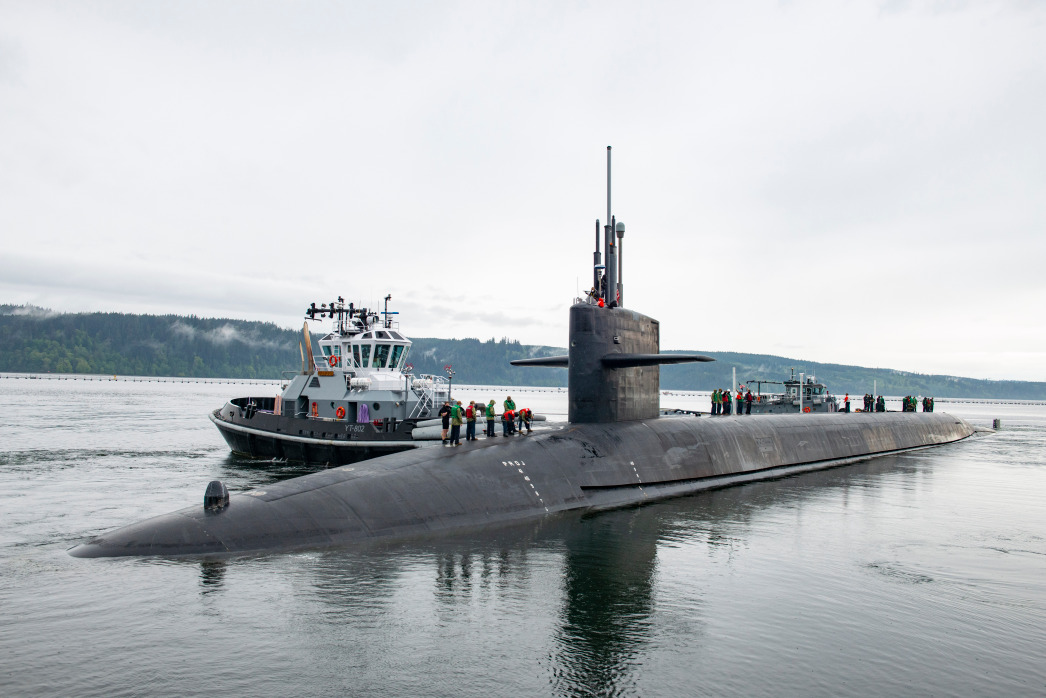
The Trump administration, in a closely held memo to lawmakers this spring, justified developing the first new U.S. atomic weapon since the Cold War by citing vulnerabilities and risks in the current nuclear arsenal that are rarely or never acknowledged in public.
In an unclassified five-page white paper sent to Congress in May, the Pentagon and the Energy Department’s National Nuclear Security Administration, or NNSA, affirm a point they have long minimized: the dangers of land-based missiles ready to launch minutes after a warning of enemy attack.
They also discuss threats to U.S. nuclear missile submarines that have previously been depicted as all but undetectable. They say, too, that a new class of ballistic missile submarines lacks the firepower of its predecessors, creating a need for a lighter and more powerful type of warhead — in addition to the two existing types. As for the current two sets of warheads, they say they have too few of the most destructive kind and too many of the less forceful variety — and excessively rely on the latter.
Gov. argues against Holtec nuclear storage site
Gov. Michelle Lujan Grisham sent a letter to President Donald Trump on Tuesday, arguing against a proposed nuclear waste interim storage facility in southeast New Mexico.
“The proposed (facility) would join the ranks of uranium mining, nuclear energy and defense-related programs that have long created risks to public health and the environment in the state of New Mexico that are disproportionately greater than such risks to the general population of the United States,” she wrote.
BY: THERESA DAVIS, JOURNAL STAFF WRITER | Copyright © 2020 Albuquerque Journal
The proposed Holtec International site would store 500 stainless steel canisters of the nation’s spent nuclear fuel on 1,000 acres between Carlsbad and Hobbs, with a full storage capacity of 10,000 canisters.
“New Mexico has grave concerns for the unnecessary risk to our citizens and our communities, our first responders, our environment, and to New Mexico’s agriculture and natural resource industries,” Lujan Grisham wrote in the letter.
LANL trolley that carries radioactive material broken down
“If LANL can’t drive a trolley or clean up old stuff without exposing people, how can they safely expand plutonium pit production?” asked Scott Kovac, research and operations director for nonprofit Nuclear Watch New Mexico.
BY: SCOTT WYLAND | santafenewmexican.com
An internal trolley that carries radioactive material to several glove-box areas at Los Alamos National Laboratory’s plutonium facility has been broken for almost two months, hindering operations at the site, a federal watchdog report said.
The trolley became disabled in early June, and its bucket is stuck with a container of nuclear material inside, according to a report issued by the Defense Nuclear Facilities Safety Board.
“However, the location is not creating any radiological exposure concerns,” the report said.
The report noted the idled trolley has hampered the internal transfer of radioactive material to the sealed containers with protective gloves attached, but it didn’t say to what extent.
“F-35s Don’t Help Families Pay Their Bills”: GOP Slips Pentagon Into COVID Bill
“People are dying, or worried about keeping a roof over their families’ heads, or cutting hours because their kids’ schools are closed,” said Anthony Weir, a lobbyist on nuclear disarmament and Pentagon spending at the Friends Committee on National Legislation. “And this is the time to jam some military procurement into this year that you didn’t get last year?”
BY: JAKE JOHNSON | truthout.org

SAMUEL KING JR. / U.S. AIR FORCE
In a floor speech late Monday, Senate Majority Leader Mitch McConnell described the GOP’s newly released coronavirus stimulus package as a “carefully tailored” plan to provide financial relief to desperate Americans.
But a look at the legislative text (pdf) released by Senate Republicans shows the HEALS Act is replete with massive gifts to the Pentagon and defense contractors that would do nothing to aid the unemployed, provide nutrition assistance to hungry children, prevent an avalanche of evictions, or stop the spread of coronavirus.
“Last time I checked F-35s don’t help families pay their bills,” Rep. Chuy García (D-Ill.) tweeted in response to the GOP’s proposal of $686 million in spending on new fighter jets.
Pending Energy Spending Bill Mixed Bag for INL
“We all know major change takes time, and we know that it is difficult to turn this ship, but we are doing it in our time…We can and must do better than refight a tired old battle on Yucca Mountain.” – Rep. Marcy Kaptur, D-Ohio
By: NATHAN BROWN | postregister.com
Idaho National LaboratoryThe Energy and Water appropriations bill Congress is expected to take up next week represents a mixed bag for Idaho National Laboratory, with spending on some priorities kept flat and slight increases for others.
The U.S. House Appropriations Committee voted along party lines earlier this month, with the Democrats in favor and the Republicans opposed, to advance the bill. At $49.6 billion in the regular budget, it represents a $1.26 billion increase over this year’s spending, according to a committee reporting summarizing the bill. However, on top of this it also includes an additional $23.5 billion in emergency one-time funding meant to bolster various clean energy projects and aid in recovery from the coronavirus pandemic that has led to pushback from Republicans. It and six other spending bills are expected to be considered by the full House this week, according to a news release from the committee.
Rep. Tulsi Gabbard Rebuts U.S. Claim that Marshall Islands Nuclear Waste Site is Safe
“The U.S. government is responsible for this storage site and must ensure the protection of the people and our environment from the toxic waste stored there,” Gabbard said in a news release announcing her amendment to the defense bill.
BY: SUSANNE RUST | latimes.com
Graffiti in May 2018 is written on Runit Dome, in Enewetak Atoll of the Marshall Islands, urging the United States to take responsibility for the radioactive waste encapsulated inside the concrete structure. The U.S. government paid a contractor to remove the graffiti from the dome’s surface. (Mika Makelainen / Yle)One of Hawaii’s high-profile politicians has dismissed a recent Department of Energy report concluding that a leaking U.S. nuclear waste repository in the Marshall Islands is safe for people there.
She called for the department to convene a more independent assessment of the waste site.
“I think it’s time the Department of Energy relied on someone with fresh eyes to examine the situation,” said U.S. Rep. Tulsi Gabbard, one of Hawaii’s two Democratic House members, in a recent interview with The Times.
Gabbard, who gained national attention by launching what some called a quixotic campaign for the Democratic presidential nomination, has been outspoken in Congress on behalf of the Marshall Islands, which the United States used as a testing site for scores of nuclear weapons during the Cold War.
She’s pushed to reinstate Medicaid eligibility to people from the Marshall Islands, Micronesia and Palau who are working and living in the United States but lack access to healthcare. She also was instrumental in requiring the Department of Energy to reexamine the safety of Runit Dome, a leaking nuclear waste repository in the Marshall Islands, as part of the 2019 National Defense Authorization Act.
Novel gas-capture approach advances nuclear fuel management
“If one day we want to treat the spent fuels, which in the U.S. are currently stored in pools and dry casks at the nuclear power plant sites, we need to handle the volatile radionuclides.” explains Ju Li, MIT’s Battelle Energy Alliance Professor of Nuclear Science and Engineering and professor of materials science and engineering. “Physisorption of krypton and xenon is a good approach, and we were very happy to collaborate with this large team on the MOF approach.”
By: PETER DUNN, MIT | phys.org
Separation of 85Kr from spent nuclear fuel by a highly selective metal organic framework. Credit: Mike Gipple/NETLNuclear energy provides about 20 percent of the U.S. electricity supply, and over half of its carbon-free generating capacity.
Operations of commercial nuclear reactors produce small quantities of spent fuel, which in some countries is reprocessed to extract materials that can be recycled as fuel in other reactors. Key to the improvement of the economics of this fuel cycle is the capture of gaseous radioactive products of fission such as 85krypton.
Therefore, developing efficient technology to capture and secure 85krypton from the mix of effluent gasses would represent a significant improvement in the management of used nuclear fuels. One promising avenue is the adsorption of gasses into an advanced type of soft crystalline material, metal organic frameworks (MOFs), which have extremely high porosity and enormous internal surface area and can incorporate a vast array of organic and inorganic components.
Top Ex-SCANA Official Stephen Byrne Pleads Guilty in SC Nuclear Fiasco Fraud Case
Stephen Byrne, a top executive of the now-defunct SCANA electric utility, pleaded guilty Thursday to criminal conspiracy fraud charges in federal court in Columbia.
BY: John Monk & Joseph Bustos | thestate.com
Byrne was part of a conspiracy that engineered a “cover-up” to hide the extent of the publicly traded company’s financial problems caused by the nuclear project’s difficulties, according to charging documents in his case. “Through intentional misrepresentations,” Byrne and others deceived regulators and customers, documents said.
White House held talks over resuming US nuclear tests, John Bolton says
Ex-Trump adviser and testing advocate tells Guardian ‘certainly it was discussed’ but no decision was made by the time he left
BY: JULIAN BORGER | theguardian.com
John Bolton acknowledged that there was resistance to testing from other officials in the Trump administration. ‘I think different people have different views,’ he said.White House officials held a series of discussions over the past two years on the possibility of resuming US nuclear testing, according to the former national security adviser John Bolton.
“Certainly the subject was discussed,” Bolton, a fierce advocate of testing, told the Guardian. However, there was opposition from some in the administration who felt current computer-based testing of US warheads was sufficient, and no decision was made by the time Bolton left the White House last September.
When the prospect of the first US underground nuclear test in nearly three decades came up at a White House meeting in May, it triggered an outcry from arms control advocates and a Democratic amendment to the 2021 National Defense Authorization Act, blocking funding for preparations for a test.
Bolton, who has published a memoir on his time in the Trump White House titled The Room Where It Happened, said the issue was discussed in general terms on a number of occasions while he was national security adviser from April 2018 to September 2019. However, the discussions did not become “operational” as his priority had been to take the US out of the Intermediate-range Nuclear Forces (INF) treaty.
Ohio Nuclear Power Scandal
As [David] DeVillers described it at a press conference: it was the “largest bribery, money laundering scheme ever perpetrated against the people of Ohio.”
BY: KARL GROSSMAN | counterpunch.org
Photograph Source: David_Besse_NPP.jpg: Nuclear Regulatory Commission. Original uploader was Theanphibian at en.wikipedia – Public Domain
The U.S. Attorney’s Office and FBI this week charged the speaker of the Ohio House of Representative and four others in a $61 million scheme to use $1 billion in ratepayers money to keep two decrepit nuclear power plants operating.
And, said the U.S. Attorney for the Southern District of Ohio, David DeVillers, at a press conference after the arrests Tuesday: “This is by no means over. We are going to continue with this investigation.”
Those charged were involved in a “Conspiracy to Participate, Directly or Indirectly” in the scheme “through a Pattern of Racketeering Activity,” declared the “Offense Description” that headed an 81-page federal “Criminal Complaint.”
A Dirty Battle for a Nuclear Bailout in Ohio
“It has been known since the late 1970s that the cost of constructing nuclear plants in the United States is very high, but the cost gap between nuclear electricity and other alternatives has increased dramatically in the last decade. In its most recent estimate, the Wall Street firm Lazard estimated that a new nuclear plant will generate electricity at an average cost of $155 per megawatt hour, nearly four times the corresponding estimates of around $40 per megawatt hour each for new wind and solar energy plants. The average cost for natural gas plants is $56 per megawatt hour.
The gap will only grow larger. While the costs of nuclear power have been increasing, the costs of wind and solar power have declined by around 70 to 90 percent in the last decade.”
BY: Shakiba Fadaie & M. V. Ramana | thebulletin.org
mailer sent to thousands of Ohio residents falsely linked the Chinese government to anti-bailout activists. Image credit: WTOL Toledo, via Twitter.Last July, Ohio’s governor signed House Bill 6 (HB6) to provide FirstEnergy (now Energy Harbor), a large electric utility, with subsidies of nearly $150 million per year to keep its Perry and Davis-Besse nuclear power plants operating. Ohio is only the fifth US state to offer such subsidies; other states include New York, Illinois, New Jersey, and Connecticut. Although the subsidies are justified by some as necessary for climate mitigation, in the latter four states, electricity generation from natural gas, which results in greenhouse gas emissions, has increased since 2017, when these subsidy programs started kicking in. Moreover, in Ohio, subsidies are also being extended to coal power plants, providing the clearest illustration that what underlies the push for subsidies to nuclear plants is not a result of a real commitment to climate mitigation but a way to use climate concerns to bolster the profits of some energy corporations.
Video: Obstacles to Nuclear Abolition — a discussion with David Swanson, Alice Slater, and Bruce Gagnon
David Swanson, Alice Slater, and Bruce Gagnon discuss obstacles to nuclear abolition and the U.S.-Russia relationship.
Inhofe, Reed Praise Senate Passage of National Defense Authorization Act for Fiscal Year 2021
The United States Senate today passed the National Defense Authorization Act for Fiscal Year 2021, 86-14.
Thursday, July 23, 2020 PRESS RELEASE: https://www.armed-services.senate.gov/press-releases/inhofe-reed-praise-senate-passage-of-national-defense-authorization-act-of-fiscal-year-2021
- Full text of Bill: https://www.congress.gov/116/bills/s4049/BILLS-116s4049rs.pdf
- Report to go with Senate NDAA, which passed the full Senate on July 23: https://www.congress.gov/116/crpt/srpt236/CRPT-116srpt236.pdf
Responsibility for Los Alamos Plutonium Facility 4 and Technical Area 55
Plutonium Facility 4 (PF–4) at Los Alamos National Laboratory’s Technical Area 55 is the primary plutonium handling facility within the National Nuclear Security Administration (NNSA). PF–4 is currently undergoing major modifications to produce war reserve plutonium pits, with a production goal of 30 pits per year by 2026.Continue reading
Bribed Ohio’s $60 Million Radioactive Uproar Rocks the 2020 Vote
“Ohio is in election-year turmoil over a Trump-supported nuke bailout bought with bribery. Whether public fury will kill the handout and affect the fall presidential election remains to be seen…But Bribed Ohio 2020 has clearly gone radioactive.”
BY: Bob Fitrakis & Harvey Wasserman | readersupportednews.com
Ohio’s biggest-ever bribery case is rocking America’s reactor industry … and the fall election.
Full details of the shocking arrest of Ohio’s powerful Speaker of the House are still unfolding.
But on Monday, the FBI charged Larry Householder and four associates with taking $60 million (that’s NOT a typo) in bribes from “Company A,” suspected to be the Akron-based nuke utility FirstEnergy. The company has not been formally named as the source of the bribe, but FE’s stock has since plummetted.
Trinity: 75 Years Later
On the 75th anniversary of the world’s first nuclear weapons explosion: The Trinity test near Alamogordo in 1945, KSFR News Director Tom Trowbridge spoke with a longtime New Mexico journalist about the anniversary.
Nuclear News Archives – 2019
Radioactive pollution leaked through floor of South Carolina nuclear fuel plant
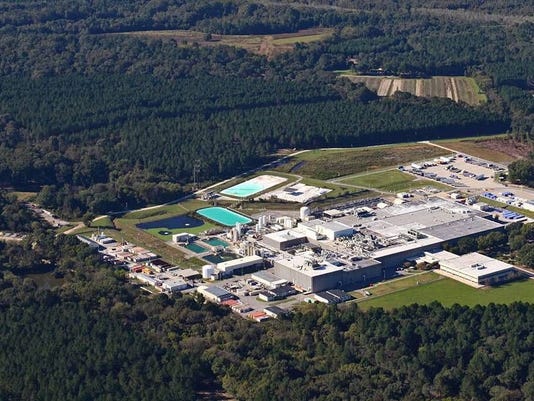
(Photo: Courtesy of High Flyer/The State)
BY SAMMY FRETWELL | greenvilleonline.com
Radioactive uranium has leaked through the floor at Westinghouse’s Bluff Road fuel factory, contaminating the soil in an area of Richland County with a nearly 35-year history of groundwater pollution from the plant.
The U.S. Nuclear Regulatory Commission says the uranium, a toxic substance used to make nuclear fuel rods, seeped through a 3-inch hole in a concrete floor in part of the factory where an acid is used. The hole extends 6 feet into the ground, according to the NRC. The NRC learned of the leak July 12.
Are We Headed for Another Expensive Nuclear Arms Race? Could Be.
BY STEVEN ERLANGER | nytimes.com
BRUSSELS — After the recent death of the treaty covering intermediate-range missiles, a new arms race appears to be taking shape, drawing in more players, more money and more weapons at a time of increased global instability and anxiety about nuclear proliferation.
The arms control architecture of the Cold War, involving tens of thousands of nuclear weapons, was laboriously designed over years of hard-fought negotiations between two superpowers — the United States and the Soviet Union. The elaborate treaties helped keep the world from nuclear annihilation.
Pakistan downgrades diplomatic ties, suspends trade with India over Kashmir
Kashmir in lockdown as India plans to change state’s status
BY JESSIE YEUNG & SOPHIA SAIFI | cnn.com
Islamabad, Pakistan (CNN) Pakistan has announced it will downgrade diplomatic relations and suspend bilateral trade with India after New Delhi stripped the disputed state of Jammu and Kashmir of its special status. India’s High Commissioner will also be removed from the country, Pakistan’s Ministry of Foreign Affairs said in a statement Wednesday. It added that Islamabad will not send its own ambassador to New Delhi.
The series of announcements came after a National Security Committee meeting on Wednesday, where the office of Pakistan’s Prime Minister Imran Khan said that Islamabad would also review bilateral agreements with India and take the issue up with the United Nations and the UN Security Council.
TPNW is now officially halfway towards entry into force!
On August 6th, 1945 at 8:16 am, a nuclear bomb was dropped on the city of Hiroshima, killing over 140,000 people and wiping out most of the city. 74 years later, the bomb’s catastrophic consequences are still affecting people’s lives.
Bolivia’s ratification on Hiroshima Day brings ICAN’s Nuclear Ban Treaty halfway to entry into force.Today, tens of thousands of people have gathered in Hiroshima, and around the world, to commemorate the victims and echo the call of the Hibakusha – the survivors of the bombings of Hiroshima and Nagasaki – that such a thing must never happen again. And at the UN in New York, one such commemoration took a very special form today: Bolivia has just marked Hiroshima Day by depositing its ratification instrument for the UN Treaty on the Prohibition of Nuclear Weapons (TPNW). With this ratification, TPNW is now officially halfway towards entry into force!
Read more about this special moment
The Human Cost of the Hiroshima Bombing
PODCAST: Listen to the story of Kathleen Burkinshaw, the daughter of a survivor of the Hiroshima bombing. Kathleen reminds us that she and her mother are among the tens of thousands of people who view nuclear weapons in terms of the friends and family members they lost.
? New Podcast Alert ?: in memory of the 74th anniversary of the bombing of Hiroshima, Nukes of Hazard podcast host @NuclearWilson sat down with @klburkinshaw1, daughter of a #Hiroshima survivor, to discuss the human cost of the bombing. Listen here: https://t.co/iNs05KkbXc pic.twitter.com/YHm6py7Fnr
— Nukes of Hazard (@nukes_of_hazard) August 6, 2019
“For this week’s Press the Button, we mark the 74th anniversary of the Hiroshima bombing with a special edition episode.”
Listen and subscribe to Press the Button, a weekly podcast from Ploughshares Fund dedicated to nuclear policy and national security.
August 6th — Two interrelated issues are discussed: Should US policy today still reserve the right to use nuclear weapons first, and what happened when we did go first nearly three quarters of a century ago?
“To help answer these questions, we bring you the very best from a multitude of our earlier interviews. You’ll hear from nuclear historian Alex Wellerstein, former Obama deputy national security advisor Ben Rhodes, former RAND analyst and releaser of the Pentagon Papers Daniel Ellsberg, founding director of the Consortium on Gender, Security and Human Rights Carol Cohn, and Beatrice Fihn, executive director of the Nobel Peace Prize-winning International Campaign to Abolish Nuclear Weapons (ICAN).
Also featuring special guest Kingston Reif from the Arms Control Association, to discuss recent nuclear news on the Early Warning segment. Kingston talks about the INF Treaty withdrawal, no-first-use, and the latest from Iran..
Listen, Subscribe and Share on iTunes · Spotify · SoundCloud · Google Play
Also available on ploughshares.org/pressthebutton
The Democratic Debates Need More Questions About Nuclear War
There is a remarkable incongruity between the existential danger of nuclear war and the absence of public discussion about preventing it. This disconnect is all too apparent today, as arms control and disarmament treaties are scrapped, nations embark on vast nuclear weapons buildups, and governments threaten nuclear war against one another.
Democratic presidential candidate Sen. Cory Booker speaks while Sen. Michael Bennet, Sen. Kirsten Gillibrand, former housing secretary Julian Castro, former Vice President Joe Biden, Sen. Kamala Harris, former tech executive Andrew Yang, Rep. Tulsi Gabbard, Washington Gov. Jay Inslee, and New York City Mayor Bill De Blasio listen during Democratic Presidential Debate at the Fox Theatre July 31, 2019, in Detroit, Michigan.SCOTT OLSON / GETTY IMAGES
BY LAWRENCE WITTNER |truthout.org
Meanwhile, the mass media routinely avoids these issues but, instead, focuses on movie stars, athletes, and President Donald Trump’s latest tweeted insults.
Do I exaggerate? Consider the following.
In May 2018, the Trump administration unilaterally withdrew from the laboriously constructed Iran nuclear agreement that had closed off the possibility of that nation developing nuclear weapons. The U.S. pullout was followed by the imposition of heavy U.S. economic sanctions on Iran, as well as by thinly veiled threats by Trump to use nuclear weapons to destroy that country. Irate at these moves, the Iranian government recently retaliated by exceeding the limits set by the shattered agreement on its uranium stockpile and uranium enrichment.
NNSA Weighing Whether Nuke Parts Delays Could Prevent Timely Deployment
EXCHANGE MONITOR | exchangemonitor.com
The National Nuclear Security Administration (NNSA) is still determining if problems with non-nuclear components will prevent the B61-12 gravity bomb and W88 Alt 370 submarine-launched ballistic missile warhead from entering service with the Air Force and Navy.
Arms Control Association – Statement on U.S. Withdrawal from the INF Treaty
“The loss of the landmark INF Treaty, which helped end the Cold War nuclear arms race, is a blow to international peace and security.”
Statement from Daryl G. Kimball, executive director | armscontrol.org | Media Contacts: Daryl G. Kimball, executive director, 202-463-8270 ext. 107; Kingston Reif, director for disarmament policy, 202-463-8270 ext. 104
“Russian noncompliance with the INF Treaty is unacceptable and merits a strong response. But President Trump’s decision to terminate the treaty will not eliminate Russia’s noncompliant 9M729 missiles — and is a mistake.
“Worst of all, blowing up the INF Treaty with no substitute arms control plan in place could open the door to a dangerous new era of unconstrained military competition with Russia.
Communities in the American Southwest Were Exposed to Nuclear Fallout. Can They Get Compensated?
Radiation epidemiology is a science of uncertainty.
BY: ARIA ALAMALHODAEI | motherjones.com
The atomic bomb was born in the desert. In the early hours of July 16, 1945, after a spate of bad weather, a 20-kiloton plutonium-based nuke referred to as “the gadget” detonated near Alamogordo, New Mexico. Firsthand testimonies of the test, codenamed Trinity, converge on the uncanny axis of awe and dread.
The Manhattan Project’s Chief of Field Operations, General Thomas Farrell, wrote that “the strong, sustained, awesome roar…warned of doomsday and made us feel that we puny things were blasphemous.”
The bomb produced a massive cloud column that drifted in several directions, dusting large swaths of the surrounding region with radioactive snow—fallout that settled on buildings, plants, and animals, and that continued to permeate the air as invisible particulate in the weeks and months that followed. Five years later, the Nevada Test Site was established to continue the work that Trinity set alight.
Although the mushroom cloud became the icon of American nuclear activity in the 20th century, the harms of these bombs did not fade with their dimming fireballs. No group in the US understands this better than the downwinders, communities throughout the American Southwest and beyond who were exposed to the fallout of the military’s domestic nuclear test program.
The INF Treaty Officially Died Today
Six months after both the United States and Russia announced suspensions of their respective obligations under the Intermediate-Range Nuclear Forces Treaty (INF), the treaty officially died today.
Federation of American Scientists | Posted on Aug.02, 2019 in Arms Control, Nuclear Weapons, Russia, United States by Hans M. Kristensen & Matt Korda
The Federation of American Scientists strongly condemns the irresponsible acts by the Russian and US administrations that have resulted in the demise of this historic and important agreement.
In a they-did-it statement on the State Department’s web site, Secretary of State Michael Pompeo repeated the accusation that Russia has violated the treaty by testing and deploying a ground-launched cruise missile with a range prohibited by the treaty.
“The United States will not remain party [sic] to a treaty that is deliberately violated by Russia,” he said.
By withdrawing from the INF, the Trump administration has surrendered legal and political pressure on Russia to return to compliance. Instead of diplomacy, the administration appears intent on ramping up military pressure by developing its own INF missiles.

Today, 2 August 2019, the governments of the US and Russia have missed a troubling deadline: the end of the six-month notice period that began when both countries announced their withdrawal from the INF Treaty earlier this year. During this period, the decision could still be reversed if both parties went back to the negotiating table. Now that the deadline has passed, and both states can produce even more nuclear weapons, this time enabled to hit targets in the range of 500 and 5,500 kilometres. These weapons, optimised to destroy cities and wipe out civilian populations, put the whole world – and Europe in particular – at risk.
A nuclear treaty is about to vanish. Its demise should teach a lesson.
On Friday, a pillar of global security will expire.
BY EDITORIAL BOARD | washingtonpost.com
Perhaps no one will notice when the Intermediate-range Nuclear Forces Treaty of 1987 slips into oblivion; the threat of nuclear attack in just minutes that seemed so unnerving during the late 20th century has now faded into a distant memory, lost to complacency at the Cold War’s end. But the demise of the INF Treaty should teach a lesson.
Arms control, creating verifiable treaties to limit and reduce nuclear, chemical and biological weapons, had its mystique: obtuse concepts, exotic hardware and mind-bending negotiations. But at its core, arms control was about political willpower. In the case of the INF Treaty, President Ronald Reagan and Soviet leader Mikhail Gorbachev summoned enough of it to eliminate an entire class of deployed weapons, the ground-based missiles with a range of between 300 and 3,400 miles, and their launchers. The treaty made the world safer not only by removing a nuclear threat to Europe but also by introducing novel measures such as intrusive verification and on-site inspections.
If New START Dies, These Questions Will Need Answers
There’s little public indication that the Trump administration is thinking about several things that will happen if the last strategic arms agreement is allowed to expire.
BY VINCENT MANZO & MADISON ESTES | defenseone.com
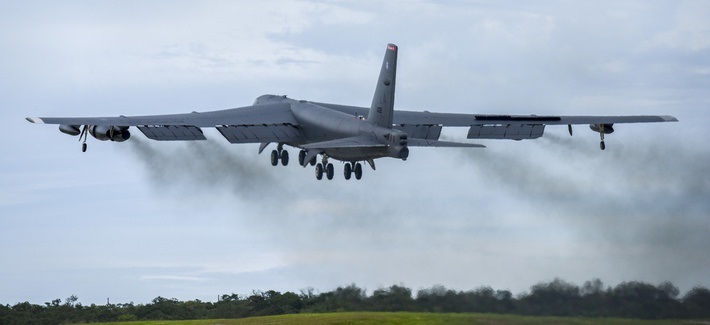
A U.S. Air Force B-52H Stratofortress bomber takes off from Andersen Air Force Base, Guam, for a routine training mission in the vicinity of the South China Sea and Indian Ocean, Sept 23, 2018.
The Trump administration has articulated an ambitious new vision for nuclear arms control, one that includes China and seeks to limit more types of Russian systems. This vision appears to have little room for the New START agreement, which helped to cap U.S. and Russian nuclear arsenals and which is due to expire in 2021. And yet there is little in the public record to indicate how the administration would deal with various problems that would surface if New START is left to die.
Did Trump Just Threaten to Attack Iran With Nukes?
He said he could destroy Afghanistan but was signaling elsewhere. The scary part is there’s already a plan.
(By KREML/Shutterstock)BY SCOTT RITTER | theamericanconservative.com July 25, 2019
On Monday during a press conference between Donald Trump and Pakistani Prime Minister Imran Khan, Trump spoke rather casually of having reviewed plans to annihilate Afghanistan.
“I could win that war in a week. I just don’t want to kill 10 million people,” Trump said. “I have plans on Afghanistan that if I wanted to win that war, Afghanistan would be wiped off the face of the earth, it would be gone. It would be over in, literally, in 10 days. And I don’t want to go that route.”
Trump’s seemingly blasé reference to a hypothetical mass murder on a scope and scale never seen in the history of mankind (it took Nazi Germany more than four years to kill six million Jews) was stunning. We know, given the state of play in Afghanistan, that it will never happen. But it wasn’t offhand. Such a policy of total destruction could also be seen as applying to Iran, and the potential for the use of nuclear weapons in the event of a U.S.-Iranian conflict is far from hypothetical. He knew exactly what he was doing.
Continue reading
As we mark the seventy-fourth anniversary of the Hiroshima and Nagasaki bombings in a handful of days, we will rightly remember the horrors of nuclear war.
BY ZACK BROWN & ALEX SPIRE
For a brief fraction of a second on an early March morning in 1954, the United States summoned a second sun into existence above Bikini Atoll.
As the four-mile wide fireball bathed the Pacific seascape in its angry, white-red light, onlookers recognized something nearly divine—and unquestionably ominous. “It was a religious experience, a personal view of the apocalypse or transfiguration,” said one observer. Another remembered feeling “like you stepped into a blast furnace,” even though he was over thirty miles away.
This was the Castle Bravo thermonuclear test, one of several dozen nuclear detonations the United States carried out in the Marshall Islands during the Cold War. At 15 million tons of TNT—one thousand times more powerful than the bomb that destroyed Hiroshima—it was the largest explosion ever set off by Americans.
Yukiya Amano, Head of the I.A.E.A. Nuclear Watchdog Group, Dies at 72
BY MEGAN SPECIA & DAVID E. SANGER | nytimes.com July 22, 2019
Yukiya Amano, a Japanese diplomat who played a central role in inspecting Iran’s compliance with the landmark 2015 nuclear deal as the head of the International Atomic Energy Agency in Vienna, has died, the organization announced on Monday. He was 72.
The agency, part of the United Nations, did not cite a cause of death or say when and where he died, but word had begun to spread last week that Mr. Amano had planned to step down from his position as director-general after nearly a decade because of an unspecified illness. He was two years into a third term as the agency’s leader.
His death left the agency leaderless at a critical moment: just as Iran is edging away from the nuclear agreement and beginning carefully calibrated violations of the limits on how much nuclear material it can produce, and at what level of purity.
Inside the Secret Campaign to Export U.S. Nuclear Tech to Saudi Arabia
Industry coalition’s push to win over the Trump administration is concerning officials on Capitol Hill who are fearful that it could threaten U.S. national security.
ERIN BANCO | thedailybeast.com
When President Donald Trump took the stage in the East Room of the White House earlier this month to give his first speech on the environment, nuclear energy executives and industry leaders held their breath. They exchanged text messages with fellow colleagues during the speech’s broadcast, wondering aloud to one another if Trump had taken the bait.
Since the fall of 2016, the executives have built an underground coalition along with academics, technology experts and well-connected politicos, including some lobbyists, to get the president and his administration to support—even promote—an American nuclear energy comeback. The industry has declined in recent years due mostly to the closing of critical nuclear infrastructure and plants. Between 2010 and 2018, only one new nuclear power plant came online in the United States.
Thank you to those who submitted comments in the NNSA’s EIS “scoping” for the proposed Plutonium Bomb Plant (PBP) at the Savannah River Site. The PBP remains unauthorized and unfunded.
“Despite requests by many, NNSA denied extending the comment period. Though the comment period ended on July 25, there is still time to submit late comments. (See Federal Register notice of June 10.)
Special thanks are due to the experts at Nuclear Watch New Mexico, Tri-Valley CAREs and the Oak Ridge Environmental Peace Alliance (OREPA) for submitting extensive comments pertaining to the question of “need” for new pits for new nuclear weapons.
It is of note that we enlisted groups that don’t traditionally work on nuclear weapons or DOE issues to engage the scoping process, including the South Carolina Chapter of the Sierra Club, Conservation Voters of South Carolina and the League of Women Voters of South Carolina. Plus, there were a flurry of individual comments in the last few days.
Comments included the lack of need for new pits for the W87-1-style warhead, the issue of pit reuse and the need for a “nuclear non-proliferation risk assessment” on the production of new pits for new nuclear weapons.
Sheep Fire Burns on Idaho National Laboratory Land
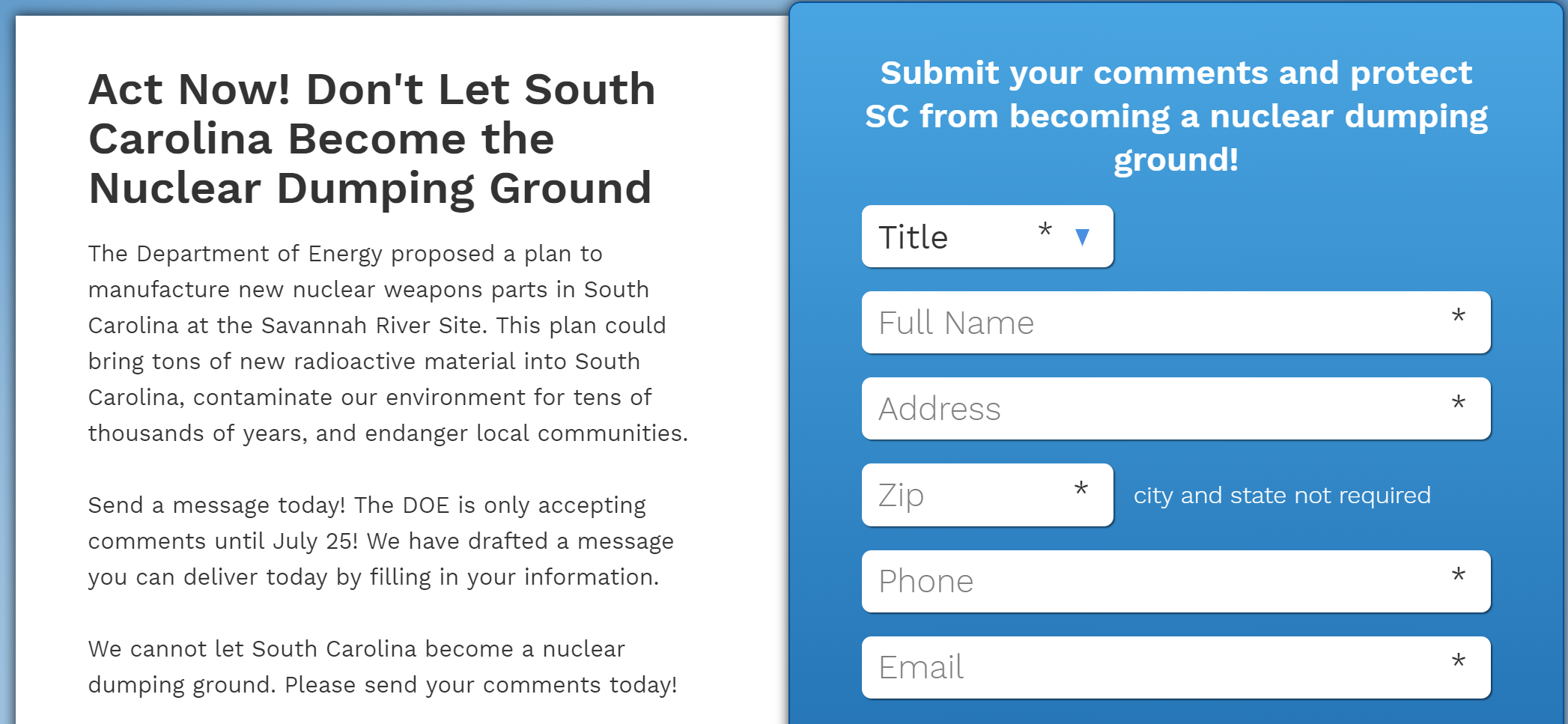
Listen and subscribe to Press the Button, a weekly podcast from Ploughshares Fund dedicated to nuclear policy and national security.
July 22 — This episode features Alex Wellerstein, historian of science at the Stevens Institute of Technology and creator of NUKEMAP – a website that allows you to simulate the effects of a nuclear weapons anywhere in the world. He talks in depth about the decision to drop the Bomb on Hiroshima and Nagasaki, on the effectiveness of nuclear deterrence, on the debate about the Bomb’s use after Trinity and much more.
Also featuring a guest appearance by WAND’s Caroline Dorminey.
Listen, Subscribe and Share on iTunes · Spotify · SoundCloud · Google Play
Also available on ploughshares.org/pressthebutton
In Budget Deal, White House And Congress Overpay For The Pentagon
The newly proposed two-year budget deal between the White House and Congress has one major flaw. It vastly overpays for the Pentagon.
At $738 billion for Fiscal Year 2020 and $740 billion for Fiscal Year 2021, the agreement sets the table for two of the highest budgets for the Pentagon and related work on nuclear warheads at the Department of Energy since World War II. The proposed figures are higher than spending at the height of the Vietnam and Korean Wars, and substantially more than the high point of the Reagan buildup of the 1980s. And the Fiscal Year 2020 and Fiscal Year 2021 numbers are only slightly less than spending in 2010, when the United States had 180,000 troops in Iraq and Afghanistan, roughly nine times the number currently deployed.
A Path Toward Renewing Arms Control
LAWRENCE J. KORB | thebulletin.org
At the late June G-20 meeting in Osaka, Japan, US President Trump and Russian President Putin met to discuss a number of issues, including Iran, Syria, Venezuela, Ukraine, and arms control. While all of these are important, none is more urgent at the current time than arms control because we are on the brink of a new arms race that could be an existential threat not only to these two nuclear super powers but to humanity.
Fewer Inspections for Aging Nuclear Plants, Regulators Propose
BY CORAL DAVENPORT | nytimes.com
WASHINGTON — A new report by staff members of the Nuclear Regulatory Commission, which oversees the safety of the nation’s 59 aging nuclear power plants, recommends that the commissioners significantly weaken or reduce safety inspections of the plants.
Edwin Lyman, the acting director of nuclear safety programs for the Union of Concerned Scientists, was highly critical of the proposal. “That’s bad because it could impair the ability of the N.R.C. to see larger patterns of violations at a plant,” he said, and called the proposal “a PR stunt. They’re doing it to make these things sound better.”
The report, published Tuesday, comes after a yearlong consultation and public meeting process, including views from the Nuclear Energy Institute, which lobbies on behalf of the nuclear power plant industry and has long sought weaker safety rules. It also comes amid a broader push by the Trump administration for reduced regulations on industry.
When Radioactive Wastes Aren’t Radioactive Wastes
With Congress Limiting What Can Be Dumped at Nuke Sites, the Energy Department May Just Redefine What It’s Dumping
JILLIAN S. AMBROZ. | dcreport.org
The U.S. Department of Energy wants to redefine what constitutes high-level radioactive waste, cutting corners on the disposal of some of the most dangerous and long-lasting waste byproduct on earth—reprocessed spent fuel from the nuclear defense program.
The agency announced in October 2018 plans for its reinterpretation of high-level radioactive waste (HLW), as defined in the Nuclear Waste Policy Act (NWPA) of 1982, with plans to classify waste by its hazard level and not its origin. By using the idea of a reinterpretation of a definition, the DOE may be able to circumvent Congressional oversight. And in its regulatory filing, the DOE, citing the NWPA and Atomic Energy Act of 1954, said it has the authority to “interpret” what materials are classified as high-level waste based on their radiological characteristics. That is not quite true, as Congress specifically defined high-level radioactive waste in the Nuclear Waste Policy Act, and any reinterpretation of that definition should trigger a Congressional response.
Lawmaker: Expand compensation from nuclear weapons testing
Original Article: apnews.com | BY SUSAN MONTOYA BRYAN
ALBUQUERQUE, N.M. (AP) — A compensation program for those exposed to radiation from years of nuclear weapons testing and uranium mining would be expanded under legislation that seeks to address fallout across the western United States, Guam and the Northern Mariana Islands.
U.S. Rep. Ben Ray Lujan rolled out the measure Tuesday on the 74th anniversary of the Trinity Test.
As part of the top-secret Manhattan Project, government scientists and the U.S. military dropped the first atomic bomb in the New Mexico desert in 1945. Nearly 200 atmospheric tests followed. Uranium mining persisted even after the tests ceased.
The Pentagon has more money than it can spend. Both Democrats and the GOP are to blame.
“To save taxpayer money and increase U.S. national security, the first step must be to reconceptualize U.S. strategy. That means abandoning the military-first approach that has governed U.S. security policy during this century.”
ARTICLE BY BEN FREEMAN & WILLIAM D. HARTUNG | newsweek.com
The bid from the Republican controlled Senate is $750 billion. The just passed bid from the Democratic controlled House is $733 billion. Both have radically overbid on the price of the Pentagon.
The real cost of the prize that is America’s security is significantly lower than what either party is currently bidding. As the Sustainable Defense Task Force—a group of ex-military officers, former White House and Congressional budget experts, and non-governmental analysts convened by the Center for International Policy which we co-chair—has found, America can be made more secure through less, not more, Pentagon spending. This is possible by rethinking U.S. defense strategy, taking a sober and fact-based assessment of the enormous amount of money already flowing to the Pentagon, and rigorously cutting waste and inefficiencies from the Pentagon bureaucracy.
Listen and subscribe to Press the Button, a weekly podcast from Ploughshares Fund dedicated to nuclear policy and national security.
July 15 — In this episode, Michelle Dover, Abigail Stowe-Thurston and Tom Collina deliver a wonderful, incisive news segment summarizing the major gains and debates in the NDAA (and how the Kardashians are getting involved in nuclear issues!).
Suzanne DiMaggio is featured delving deep into the dynamics of the crises with Iran and North Korea. Suzanne also presents her powerful rationale for the new Quincy Institute, where she is chair of the board.
“Looking at the catastrophic failures in foreign policy over the past decades, it is clearly time for something new,” Suzanne says, “The times demand it…We have to change the narrative in this town.”
Listen, Subscribe and Share on iTunes · Spotify · SoundCloud · Google Play
Also available on ploughshares.org/pressthebutton
Zakaria: The cancerous consensus in today’s politicized Washington
The United States’ defense budget is out of control, lacking strategic coherence, utterly mismanaged, ruinously wasteful and yet eternally expanding… “We never expected to pass [a financial audit],” admitted then-Deputy Defense Secretary Patrick Shanahan.
BY FAREED ZAKARAIA | trib.com
You often hear that in these polarized times, Republicans and Democrats are deadlocked on almost everything. But the real scandal is what both sides agree on. The best example of this might be the defense budget. Last week, the Democratic House, which Republicans say is filled with radicals, voted to appropriate $733 billion for 2020 defense spending. The Republicans are outraged because they — along with President Trump — want that number to be $750 billion. In other words, on the largest item of discretionary spending in the federal budget, accounting for more than half of the total, Democrats and Republicans are divided by 2.3 percent. That is the cancerous consensus in Washington today.
America’s defense budget is out of control, lacking strategic coherence, utterly mismanaged, ruinously wasteful and yet eternally expanding.
Lindsey Graham joins legal fight to restart SC nuclear fuel plant (MOX)
U.S. Sen. Lindsey Graham is urging the nation’s highest court to take up what appears to be South Carolina’s final push to resuscitate a shuttered nuclear facility at the Savannah River Site and bolster federal rules tied to plutonium processing and long-term storage.
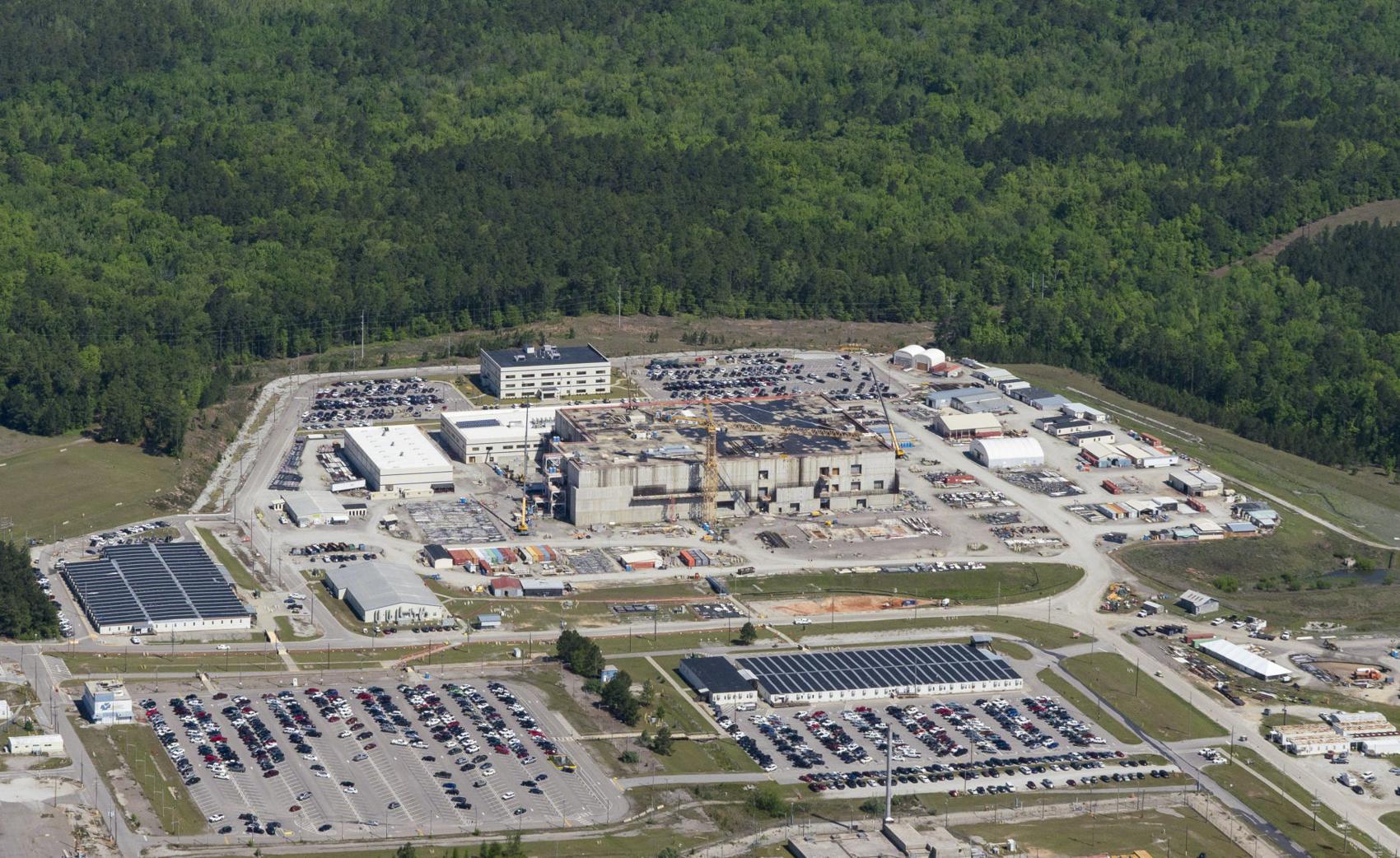
BY COLIN DEMAREST | postandcourier.com
Graham, a South Carolina Republican who chairs the Senate Judiciary Committee, argues that the federal government walked away from its obligation to address the plutonium stored in the Palmetto State. He addressed these concerns in a brief filed July 11 with the U.S. Supreme Court.
“The federal government previously made legally binding commitments to the state of South Carolina in recognition of its sovereign status and its proprietary interests,” Graham argued in the brief. “It has now breached those commitments, causing injury to the state that a court may redress.”
The brief describes Graham as “personally familiar” with the matters at hand and profoundly interested in the federal government’s promises to the state, which he was involved in negotiating.
Class Action Suit Draws Big Crowd – Portsmouth Gaseous Diffusion Plant
“DOE is simply not to be trusted. Period.”
— Carlos Williams speaking about local cancer concerns.
He has lived for thirty years five miles from the Portsmouth, Ohio uranium enrichment plant.
BY TOM CORRIGAN | PORTSMOUTH DAILY TIMES © 2019 Portsmouth Daily Times, all rights reserved.
Their stories were extremely varied. But many had one unfortunate commonality: cancer.
A small portion of the crowd which lined up and waited hours Tuesday in the OSU Endeavor Center in Piketon.Larry and Janie Williams describe themselves as being fence line neighbors of the Portsmouth Gaseous Diffusion Plant since 1972. When she began to fall ill somewhat over four years ago, Larry said his wife’s doctor asked how she had come to be exposed to radiation. Janie never worked at the Portsmouth plant but spoke of daily hearing the ongoing construction of the decommissioned plant’s controversial on-site waste disposal facility. Janie said she developed a type of cancer that attacked her blood. Treatment included extremely expensive stem cell transplants. The transplants did buy her some time, though she added doctors gave her three to five years of life.
“I’m in year four,” said Janie, who clearly is accepting of her situation and spoke of her story unabashedly. She is 63.
Why SC is likely stuck with a stockpile of the nation’s most dangerous nuclear materials
POST & COURIER SPECIAL REPORT: LETHAL LEGACY
BY THAD MOORE & COLIN DEMAREST | postandcourier.com
South Carolina could be stuck with a massive stockpile of the nation’s most dangerous nuclear material for decades, despite a federal mandate and years of promises that the state wouldn’t become America’s plutonium dumping ground.
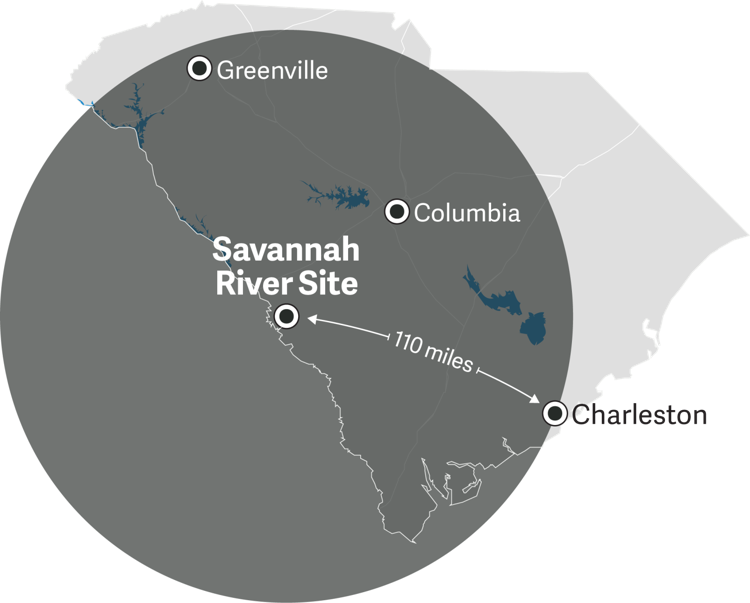 A restricted internal report obtained by the Aiken Standard and The Post and Courier suggests that the state is likely to become a long-term repository for enough plutonium to build the bomb dropped on Nagasaki nearly 2,000 times over.
A restricted internal report obtained by the Aiken Standard and The Post and Courier suggests that the state is likely to become a long-term repository for enough plutonium to build the bomb dropped on Nagasaki nearly 2,000 times over.
South Carolina faces this prospect despite a federal law that gives the U.S. Department of Energy just 2½ more years to remove its plutonium from the Savannah River Site, a huge swath of federal land along the Georgia border.
Hundreds gather in Piketon for town hall on alleged radioactive contamination
“[I] wanted to see what information is available,” Brandon Moore said. “What are we doing to help all these folks that are impacted or that may be impacted in the future?”
BY BRYANT SOMERVILLE. | 10tv.com
PIKETON, Ohio – People stood in line for hours, Tuesday, wanting to make sure they and their families were safe.
“I just want to make sure what’s going on if there was any contamination there or where we’re at,” Steve Copper said. “I want to make sure we got everything taken care of.”
“These materials are ounce-for-ounce the most dangerous materials known to man,” Stuart Smith said.
Smith is with Cooper Law Firm out of New Orleans. It was his firm that filed the lawsuit in May alleging Ohio residents near a former uranium enrichment plant in Piketon were exposed to radioactive contaminants that spread to other properties but were never informed.
Continue reading
Congress Introduces Legislation to Expand Compensation for Radiation Exposure
Luján, Members of Congress Introduce Legislation to Expand Compensation for Individuals Impacted by Radiation Exposure
Washington, D.C. – Today, Congressman Ben Ray Luján (D-N.M.), the U.S. House Assistant Speaker, introduced legislation to expand compensation for individuals exposed to radiation while working in and living near uranium mines or downwind from nuclear weapon test sites.
Tens of thousands of individuals, including miners, transporters, and other employees who worked directly in uranium mines, along with communities located near test sites for nuclear weapons, were exposed during the mid-1900s to dangerous radiation that has left communities struggling from cancer, birth defects, and other illnesses.

Trinity: “The most significant hazard of the entire Manhattan Project”
“New Mexico residents were neither warned before the 1945 Trinity blast, informed of health hazards afterward, nor evacuated before, during, or after the test. Exposure rates in public areas from the world’s first nuclear explosion were measured at levels 10,000- times higher than currently allowed.”
Final Report of the Los Alamos Historical Document and Retrieval and Assessment Project, Prepared for the Centers for Disease Control and Prevention, November 2010, pp. ES-34-35. VIEW HERE
Victims of the Trinity Test remain uncompensated, yet the Los Alamos Lab continues to expand plutonium pit production.
BY KATHLEEN M. TUCKER & ROBERT ALVAREZ | thebulletin.org
For the past several years, the controversy over radioactive fallout from the world’s first atomic bomb explosion in Alamogordo, New Mexico on July 16, 1945—code-named Trinity—has intensified. Evidence collected by the New Mexico health department but ignored for some 70 years shows an unusually high rate of infant mortality in New Mexico counties downwind from the explosion and raises a serious question whether or not the first victims of the first atomic explosion might have been American children. Even though the first scientifically credible warnings about the hazards of radioactive fallout from a nuclear explosion had been made by 1940, historical records indicate a fallout team was not established until less than a month before the Trinity test, a hasty effort motivated primarily by concern over legal liability.
Peace Activists Cut into Nuclear Weapons Base, Foiling Increased Security
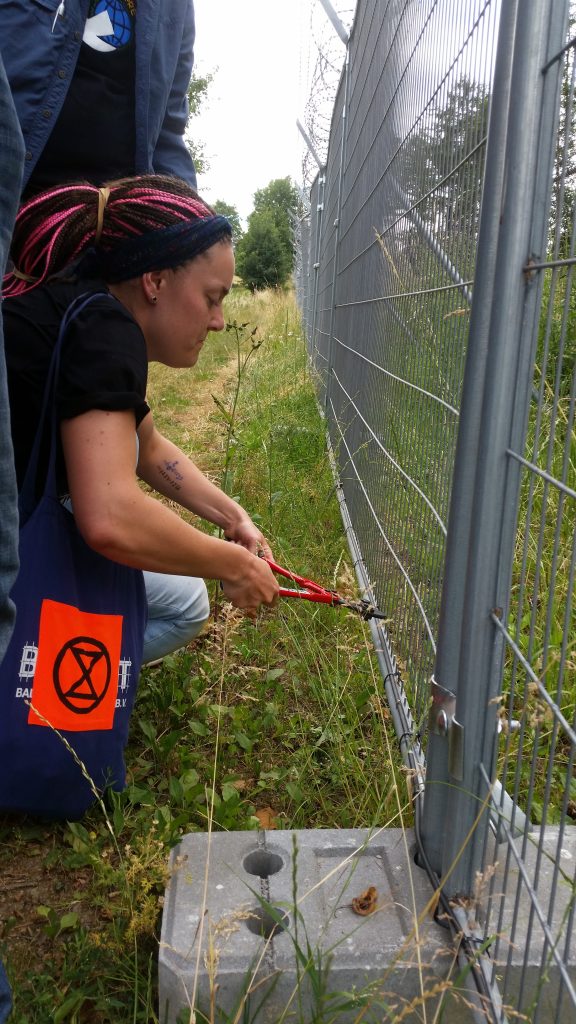
The Hoax That Nuclear Power is Green
This “Enviro Close-Up with Karl Grossman” demolishes the hoax that nuclear power is green. Continue reading
Wyoming lawmakers quietly explore storing spent nuclear fuel
Management Council votes by email to study housing spent nuclear fuel at Gas Hills, Shirley Basin to bring what a state senator says could be $1 billion a year.
Massive containers hold spent nuclear fuel at a dry storage facility. This photo shows, at right, a dry cask recently loaded with spent fuel being lifted from a horizontal transporter to be placed verticlaly on a specially designed storage pad. (Flickr Creative Commons/Sandia National Laboratories)ANGUS M. THEURMER JR. | wyofile.com
A legislative committee has appointed six of its members to investigate the idea with the U.S. Department of Energy, Sen. Jim Anderson (R-Casper) told WyoFile on Friday. Anderson is co-chairman of the Joint Minerals Business and Economic Development Committee which received approval and funding from the Legislative Management Council in an unannounced vote to study the issue before the next legislative session begins in early 2020.
Wyoming’s dependence on an ailing coal industry spurred talk about pursuing the temporary storage idea, Anderson said. Fuel rods would be housed in casks with two-foot-thick walls, he said.
US suspends low-level radioactive waste shipments to Nevada
BY SCOTT SONNER | time.com
(RENO, Nev.) — A Nevada congressman called for U.S. Energy Secretary Rick Perry’s resignation Wednesday after the department acknowledged multiple shipments of low-level radioactive waste to a site north of Las Vegas may have been mislabeled and out of compliance with safety regulations for years.
The department had announced earlier that shipments of the waste from Tennessee to Nevada have been suspended while it investigates whether the materials were “potentially mischaracterized” as the wrong category of low-level waste. Low-level waste can include equipment or worker’s clothing contaminated by exposure to radiation, while mixed low-level waste can include toxic metals.
America’s Indefensible Defense Budget
BY JESSICA T. MATTHEWS | nybooks.com
The sheer size of the military establishment and the habit of equating spending on it with patriotism make both sound management and serious oversight of defense expenditures rare.
As a democracy, we are on an unusual and risky path.
For several decades, we have maintained an extraordinarily high level of defense spending with the support of both political parties and virtually all of the public. The annual debate about the next year’s military spending, underway now on Capitol Hill, no longer probes where real cuts might be made (as opposed to cuts in previously planned growth) but only asks how big the increase should be.
NMED won’t move LANL Oversight Bureau office from Los Alamos
“New Mexico Environment Department (NMED) Secretary James Kenney and other members of the department’s staff held a public meeting July 8 to address fears that NMED would move the Los Alamos National Lab (LANL) Oversight Bureau field office out of Los Alamos.
In June, the department announced a proposal to move the field office to a Santa Fe location. The news was met with immediate backlash from LANL watchdog groups such as Concerned Citizens for Nuclear Safety and Nuclear Watch New Mexico.”
By Kendra Chamberlain | nmpoliticalreport.com
The department held the meeting, the first of a series of public outreach events the department plans to hold this year throughout the state, in part to assuage public concerns around the future of the Oversight Bureau’s field office in Los Alamos.
In June, the department announced a proposal to move the field office to a Santa Fe location. The news was met with immediate backlash from LANL watchdog groups such as Concerned Citizens for Nuclear Safety and Nuclear Watch New Mexico.
Kenney, along with Resource Protection Division director Stephanie Stringer and Administrative Services Division director Michelle Desmond, explained some of the factors behind the contemplated move in a short presentation to audience members.
“[There] was never the intent to decrease oversight, or lessen any compliance or enforcement [over LANL],” Stringer told audience members.
“A lot of people [thought] when they heard we were moving off the hill, that it meant less oversight. There is no doubt in my mind that Secretary Kenney has made it my job to absolutely make sure compliance and enforcement and oversight of these facilities are top priority,” she said.
Iran’s Uranium Enrichment Breaks Nuclear Deal Limit. Here’s What That Means
Vahid Salemi/AP
BY GEOFF BRUMFIEL | npr.org July 7, 2019
Iran has crossed another line set in the 2015 nuclear deal between it and major world powers.
According to state media, Iran has begun enriching uranium above levels enshrined in the agreement. The move sends a signal that Iran is losing patience with a deal that has not provided the economic relief promised, more than a year after the United States withdrew from the agreement.
By Monday, Iran had reached levels of around 4.5% enrichment, Behrouz Kamalvandi, the spokesman for the Atomic Energy Organization of Iran, told the semiofficial Fars news agency. He warned that Iran could go as high as 20% in the future, though that level is “not needed now.”
Inspectors from the International Atomic Energy Agency confirmed that Iran has crossed the line.
What public engagement?
This article was originally published July 6, 2019 in the Santa Fe New Mexican
Article Written by NukeWatch NM Volunteer: ALICIA SANDERS-ZAKRE
The Department of Energy’s new attempt at “enhanced public engagement” on legacy nuclear waste cleanup at Los Alamos National Laboratory failed both its stated objectives to consider public input and provide public education. To turn things around, officials should actually listen to public attendees and provide complete information at future meetings.
In the two-hour June 26 forum in Los Alamos, officials from the department’s Environmental Management Los Alamos Field Office, alongside N3B, the contractor tasked with implementing the cleanup, repeatedly proclaimed their interest in hearing from the public and pledged total transparency, but they didn’t give anyone in the packed room a chance to speak.
Renewables Catching Nuclear Power In Global Energy Race
Coal is still the dominant source of electricity around the world, although natural gas has taken over the top spot in the U.S. But, renewables have grown rapidly over the past decade, and are on the cusp of overtaking nuclear globally.
From 2007 to 2017, the Renewables category grew at an average annual rate of 16.4%. But within that category, power from geothermal and biomass grew at an annual average of 7.1%. Wind and solar power, by contrast, grew at an annual average of 20.8% and 50.2%, respectively, over the past decade.
In 2018, nuclear power was responsible for 2,701 Terawatt-hours (TWh) of electricity generation, compared to 4,193 TWh for hydropower and 2,480 for renewables.
Nuclear News Archives – 2018
New Mexico Senators Speak Out Over Order They Say Would Hamper Nuclear Safety Board
New Mexico Senators Speak Out Over Order They Say Would Hamper Nuclear Safety Board
They want Congress to suspend a move that would limit access to information about facilities and could hinder the panel’s ability to oversee worker health and safety.
by Rebecca Moss, Santa Fe New Mexican,
Aug. 31, 5 a.m. EDT
This article was produced in partnership with The Santa Fe New Mexican, which is a member of the ProPublica Local Reporting Network.
New Mexico’s senators are asking Congress to block a Department of Energy order that would limit a federal board’s access to information about nuclear facilities and could hinder its ability to oversee worker health and safety.
In a letter sent Wednesday to the leaders of a Senate appropriations subcommittee, Democratic Sens. Martin Heinrich and Tom Udall also asked their colleagues to block impending staff cuts and a broad reorganization at the Defense Nuclear Facilities Safety Board. New Mexico is home to three of the 14 nuclear facilities under the board’s jurisdiction: Los Alamos National Laboratory, Sandia National Laboratories and the Waste Isolation Pilot Plant.
“We feel strongly that these two matters facing the [safety board] and its future must be suspended while Congress and the public have time to review and offer constructive feedback” on how to maintain and improve the board, the senators wrote to Sens. Lamar Alexander, R-Tenn., and Dianne Feinstein, D-Calif., the chairman and ranking member of the energy and water development subcommittee.
The West’s atomic past, in opera halls
The West’s atomic past, in opera halls
On stage and in Congress, Trinity test downwinders fight for recognition.
Elena Saavedra Buckley, High Country News, Aug. 30, 2018
Outside the Santa Fe Opera, a 62-year-old venue nestled in juniper-covered hills, retirees reclined by cloth-covered tables in the parking lot. As the August heat reflected off the asphalt, they tailgated with flutes of champagne. Soon, they would file in to see Doctor Atomic, an opera about physicist J. Robert Oppenheimer and the 24 hours before the first atomic bomb, which he helped create, detonated over New Mexico’s Tularosa Basin in the Trinity test.
Doctor Atomic has been performed in New York and San Francisco, but never before in New Mexico, where Manhattan Project scientists from Los Alamos Laboratory created the bomb. John Adams composed the opera in 2005, and Peter Sellars’s libretto uses declassified Los Alamos documents, focusing on the scientists’ perspective. This was the first time that downwinders — people whose families lived in the Tularosa Basin, in the path of the bomb’s radiation — appeared on stage during a performance. This summer, 73 years after Trinity, New Mexico’s downwinders are finally receiving some attention — onstage and in Congress.
The Trinity test occurred at 5:30 a.m. on July 16, 1945, about 150 miles south of Santa Fe and the laboratory and only weeks before the bombings in Japan. It bathed the basin in light, creating a half-mile-wide crater. The Tularosa Basin Downwinders believe that blast’s radiation gave their families cancer, either from the air or through milk and produce, and that the diseases are being passed down genetically.
Trump Administration Muzzles Nuclear Weapons Safety Watchdog
Trump Administration Muzzles Nuclear Weapons Safety Watchdog
The administration, working in open alliance with profit-making contractors, is scaling back the safety group’s authority and slashing its staff.
Center For Public Integrity
08.30.18 6:00 AM ET
By Patrick Malone, Center for Public Integrity
A small government safety organization tasked with protecting the workers who construct America’s nuclear arsenal and with preventing radioactive disasters in the communities where they live is under new siege in Washington.
The Trump administration, acting in an open partnership with the profit-making contractors that control the industrial sites where U.S. nuclear bombs are made and stored, has enacted new rules that limit the authority and reach of the Defense Nuclear Facilities Safety Board, created by Congress in 1988 amid broad public concerns over civil and military nuclear safety lapses.
The administration’s new rules eliminate the board’s authority to oversee workplace protections for roughly 39,000 nuclear workers and also block its unfettered access to nearly three-quarters of the nuclear weapons-related sites that it can now inspect.
In a separate move, the board’s new acting Republican chairman has proposed to put more inspectors in the field but to cut its overall staff by nearly a third, including letting some of its supporting technical experts in Washington go. The board already has one of the smallest oversight staffs of any federal agency.
The twin assaults on the operations and authority of the safety board come just as the Energy Department, acting at President Trump’s direction, is embarking on the most aggressive era of nuclear weapons production since the Cold War. Trump has called for one new nuclear bomb to be produced immediately and for the production of another new bomb to be studied.
A Nuclear Energy Meltdown Scrambles Southern Politics
A Nuclear Energy Meltdown Scrambles Southern Politics
South Carolinians have some of the highest electricity bills in the country, thanks in part to nuclear energy
BY ANDREA COOPER | AUG 30 2018
REVEREND LEO WOODBERRY CLUTCHED the pulpit, his voice rumbling toward the people gathered in the basement theater at Little Rock AME Zion church. Around 75 men and women wearing everything from stylish dresses to blue jeans and T-shirts sat in rapt attention.
“Talk to your friends,” Woodberry implored, wearing a “Justice First” T-shirt and a baseball hat. “Your neighbors, your commissioners, your mayors. Tell them we are ready right now to move away from fossil fuels. We’re ready to make our cities 100 percent renewable!”
People clapped, whistled, and cheered “Yes!” and “Amen!”
Woodberry was on his Justice First Tour in Charlotte, North Carolina, 100 miles from his home in Florence, South Carolina. The environmental activist had come here to proclaim that the moment had arrived for the climate change, women’s rights, immigrants’ rights, criminal justice reform, and marriage equality movements to unite for a common cause: opposing an extractive economy “based on death and destruction and sickness.”
That same economy is responsible for an unprecedented energy and financial disaster in Woodberry’s home state: A $9 billion nuclear project—once heralded as part of a U.S. nuclear revival—has been abandoned after years of delays and mismanagement. One of the South Carolina utilities responsible for the colossal failure has billed its customers $37 million each month to recoup costs.
A Salute to Whistleblowers – Mark your calendar! Sept. 25 at 7pm at CCA
|
The US Government Is Updating Its Nuclear Disaster Plans And They Are Truly Terrifying
The US Government Is Updating Its Nuclear Disaster Plans And They Are Truly Terrifying
“We are looking at 100 kiloton to 1,000 kiloton detonations,” a FEMA official said.
Dan Vergano BuzzFeed News Reporter
Reporting From Washington, DC
Posted on August 24, 2018, at 11:59 a.m. ET
Amid concerns over North Korea, federal emergency managers are updating disaster plans to account for large nuclear detonations over the 60 largest US cities, according to a US Federal Emergency Management Agency official.
The shift away from planning for small nuclear devices that could be deployed by terrorists toward thermonuclear blasts arranged by “state actors” was discussed on Thursday at a two-day National Academies of Sciences workshop for public health and emergency response officials held at its headquarters across the street from the US State Department.
“We are looking at 100 kiloton to 1,000 kiloton detonations,” chief of FEMA’s chemical, biological, radiological, and nuclear branch Luis Garcia told BuzzFeed News. The agency’s current “nuclear detonation” guidance for emergency planners, first released in 2010, had looked at 1 to 10 kiloton blasts — smaller than the 1945 Hiroshima and Nagasaki atomic bombs that killed more than 200,000 people at the end of World War II. Those smaller size detonations had seemed more reasonable after 9/11, with high concerns about an improvised terrorist bomb.
CALIFORNIA LEADS THE WAY IN SUPPORT OF NUCLEAR DISARMAMENT
California State Legislature Passes Pro-Nuclear Disarmament Resolution
Sacramento–Assembly Joint Resolution 33 (AJR 33), introduced by Santa Barbara’s State Assembly member, Monique Limón, passed in the state Senate today by a vote of 22 to 8. This marks a huge step forward in California’s support of nuclear disarmament and puts the state at the forefront of this critical issue.
The resolution calls on federal leaders and our nation to embrace the Treaty on the Prohibition of Nuclear Weapons, make nuclear disarmament the centerpiece of our national security policy, and spearhead a global effort to prevent nuclear war. (More on the Treaty here.)
Rick Wayman, Deputy Director of the Nuclear Age Peace Foundation, a non-partisan, non-profit organization headquartered in Santa Barbara whose mission is to create a peaceful world, free of nuclear weapons, was asked by Limón to testify in support of the Resolution.
The modern nuclear arsenal: A nuclear weapons expert describes a new kind of Cold War
The modern nuclear arsenal: A nuclear weapons expert describes a new kind of Cold War
Nuclear Knowledge: The modern nuclear arsenal
https://www.washingtonpost.com/video/politics/nuclear-knowledge-the-modern-nuclear-arsenal/2018/08/20/9d370fec-a0b8-11e8-a3dd-2a1991f075d5_video.html
Secrecy, bombastic threats and doomsday talk abound when talking about nuclear weapons, so The Post sat down with expert Hans Kristensen to clear the air. (Jenny Starrs /The Washington Post)
By Jenny Starrs
August 24 at 7:00 AM
With the flurry of talks with North Korea and the fallout from the U.S. withdrawal from the Iran nuclear deal, nuclear weapons have become a major topic of discussion in recent months. But secrecy abounds: Who has what weapons? How many? How much damage could they do?
Hans Kristensen tries to answer those questions. As the director of the Nuclear Information Project at the Federation of American Scientists, Kristensen and his colleagues delve into open source data, analyze satellite imagery and file requests under the Freedom of Information Act to get the most accurate picture of the world’s nuclear-armed countries. The initiative produces reports on nuclear weapons, arms control and other nuclear matters, and gives recommendations on how to reduce the role and number of nuclear weapons worldwide.
Kristensen sat down with The Washington Post to discuss how the United States’s nuclear capabilities stack up with the rest of the world, and potential problems down the road. The questions and answers have been edited for brevity.
New Los Alamos lab manager Triad will pay Gross Receipts Tax
New Los Alamos lab manager Triad will pay GRT, official says
By Andy Stiny | astiny@sfnewmexican.com
Aug 22, 2018 Updated 16 hrs ago
A representative of Triad National Security LLC, which takes over management of Los Alamos National Laboratory in November, said Wednesday the consortium will pay gross receipts taxes, easing concerns of local officials about losing millions of dollars in revenue.
Scott Sudduth, assistant vice chancellor with the Office of Federal Relations for the Texas A&M University system, told an audience of about 50 community members during a meeting in Los Alamos that the New Mexico Taxation and Revenue Department responded to a recent inquiry from Triad by saying that “it is their view that the gross receipts tax does apply to Triad.”
Los Alamos County officials had said previously that if Triad were deemed to have nonprofit status, the county estimated it could lose $21 million annually and the state $23 million in gross receipts tax revenues, according to published reports.
State could block proposed nuclear storage site near Carlsbad
State could block nuclear storage site near Carlsbad even if federally licensed
By Adrian C. Hedden / Carlsbad Current-Argus, N.M. (TNS)
State lawmakers maintained they will have a say in a proposed facility to store high-level nuclear waste near Carlsbad and Hobbs, despite an opinion issued by New Mexico Attorney General Hector Balderas suggesting New Mexico will have a limited role in licensing the project.
New Mexico Sen. Jeff Steinborn (D-36), who chairs the New Mexico Radioactive and Hazardous Waste Committee said Balderas’ opinion was informative but did not preclude lawmakers from preventing the facility from operating.
The committee convened in May to study the project proposed by New Jersey-based Holtec International, and held its third meeting on Wednesday at University of New Mexico-Los Alamos.
Opposed to the project, Steinborn said state lawmakers owe their constituents a full review of the proposal.
“I think it’s kind of a troubling deficiency in the government if the state doesn’t have to give consent to have something like this foisted upon it,” he said. “The State of New Mexico owes it to the people to look at every aspect of it.”

